With more than 30,000 years of history, India is the birthplace of numerous cultures and religions making it one of the most important tourist destinations in the world. Being ruled over various dynasties and kingdoms before being established as a republic in the 20th century, India has more than thousand tourist attractions and several World Heritage Sites. Listed below are some of the most extravagant places you can visit in India.
1. The Red Fort, Delhi
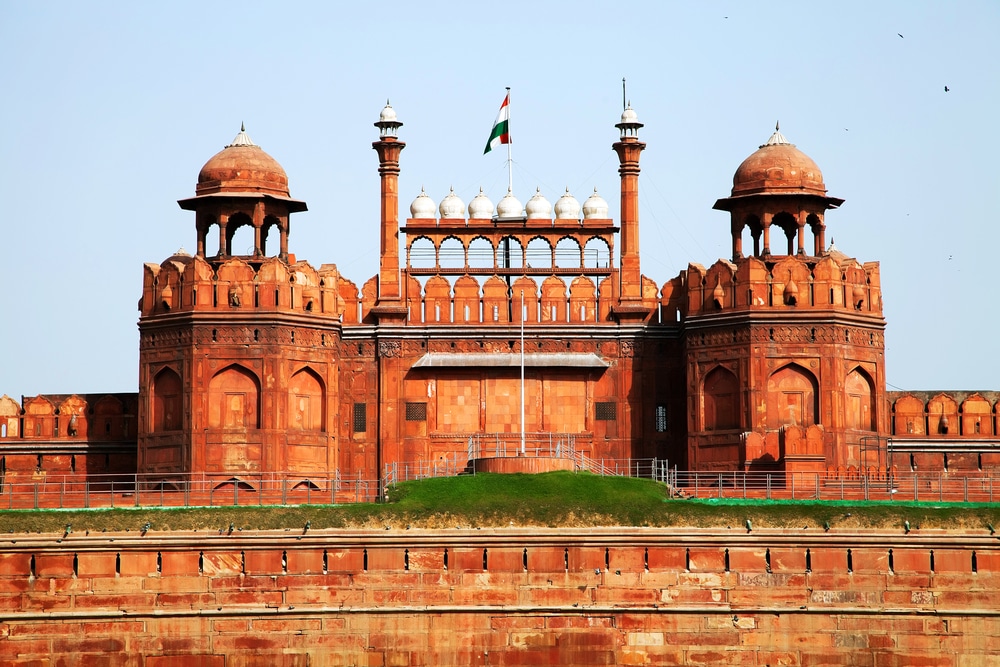
Established as Shahjahanabad in 1648, The Red Fort was known as the capital of the Mughal Empire in India. Its construction is attributed to Shah Jahan who also built the famous Taj Mahal in Agra, and was also known by the name Quila Mubarak and remained the residence of the Mughal Imperial family for nearly 20 decades.
2. The Taj Mahal, Agra
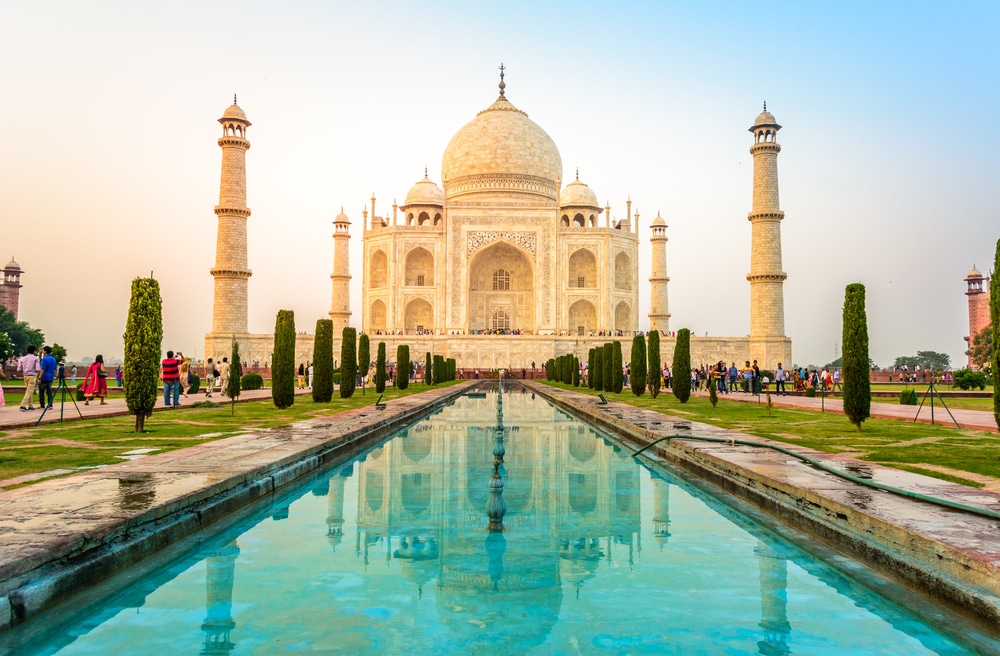
The name Taj Mahal, translates to the ‘Crown Palace’ and is one of the most famous and marvelous buildings in India. Located in the city of Agra, Taj Mahal is actually a mausoleum built to house the remains of Mumtaz Mahal, the wife of Mughal Emperor Shah Jahan. The building is known for its extensive use of white marble and was completed in the mid-17th century.
3. Pangong Lake, Ladakh
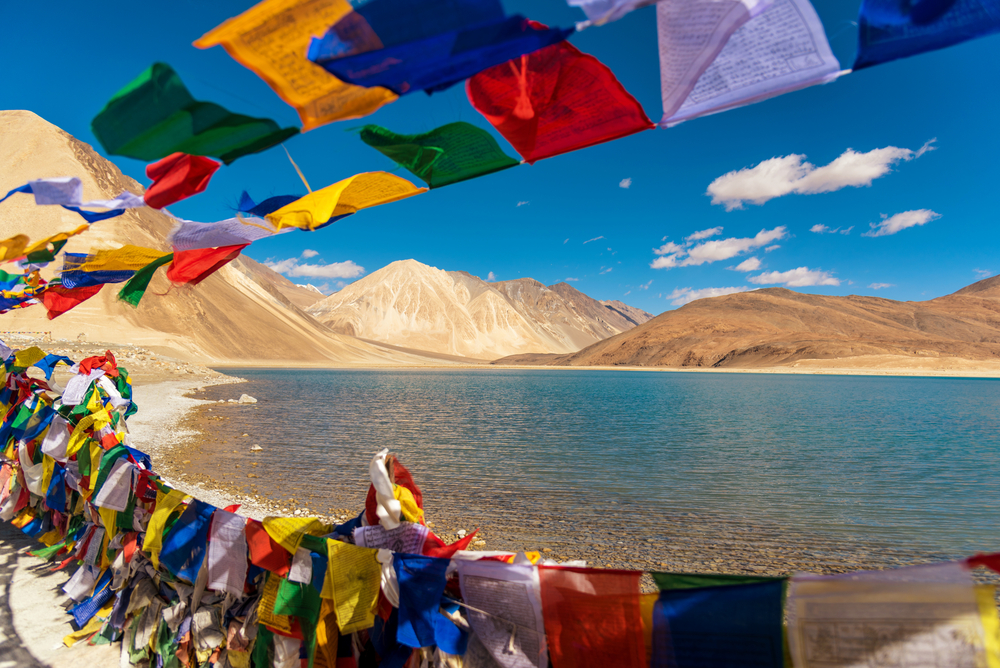
With its location between India and Tibet, Pangong Lake is an enchanting saltwater lake located in the Himalayas in Ladakh. The lake can be reached via a 4-5 hours’ drive from Leh via the scenic Changla Pass. Pangong Tso is known for its hypnotizing blue waters and flocks of migratory birds that can be seen here.
4. Valley of Flowers, Nainital
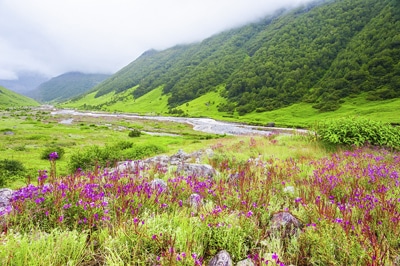
As evident by its name, the Valley of Flowers is known for its vast diversity of alpine flowering shrubs located in the western Himalayas. The place is a part of the larger Nanda Devi Biosphere Reserve in Nainital, Uttarakhand. The valley is covered with snow from October till March, but as the summer arrives, the valley is turned into a palette of colorful flowers that covers the entire landscape.
5. Jaisalmer Fort, Jaisalmer
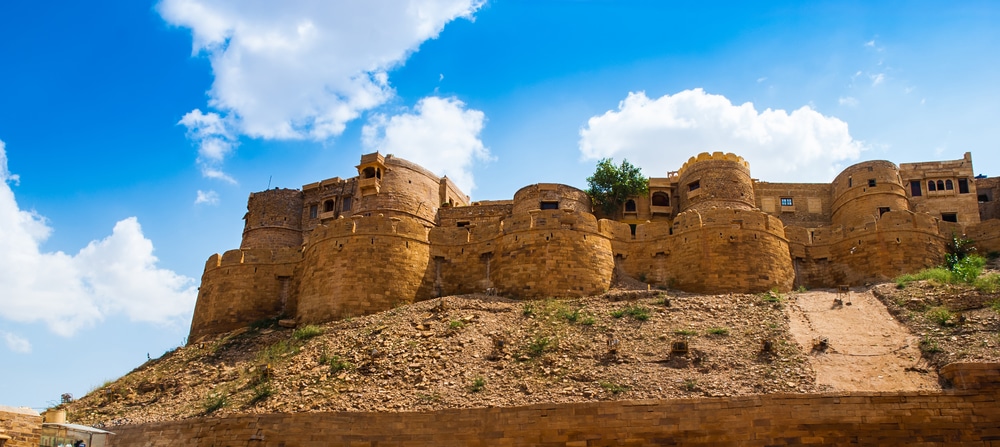
Located amidst the golden sands of the Thar Desert, the Jaisalmer Fort was built by the Bhati Rajput King Rawal Jaisal. It remained an important trade center during the medieval era before the popularity of maritime trade centers such as Bombay and Calcutta. Today, it is one of the important tourist centers in Rajasthan known for its exquisite Rajput Architecture and scenic beauty.
6. Ruins of Hampi, Karnataka
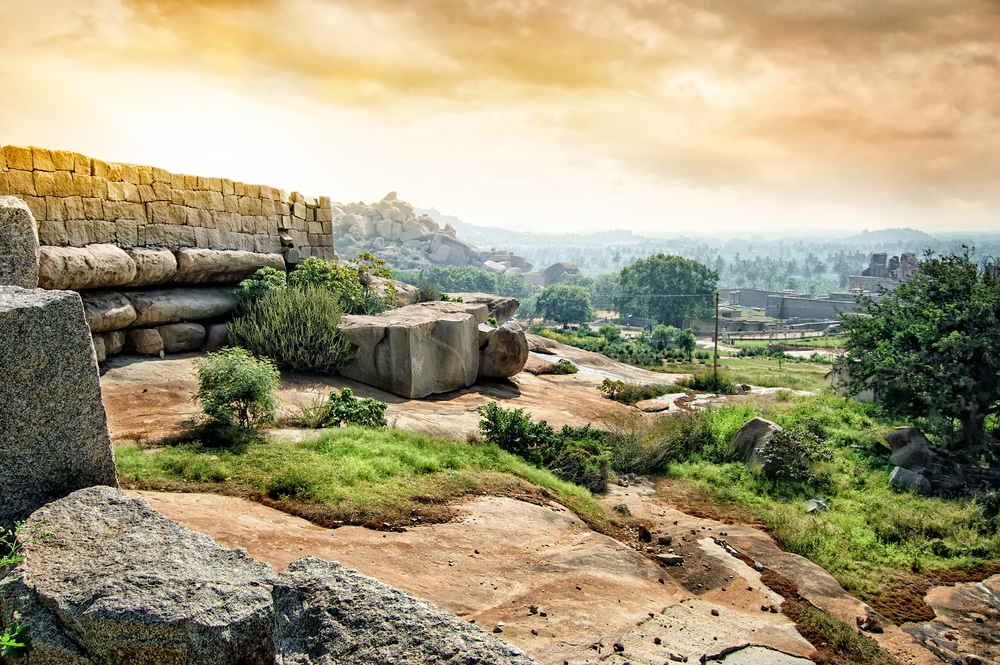
Hampi was the capital of the erstwhile Vijayanagar Empire and known to be one of the richest cities of its time. Located on the shores of the Tungabhadra River in Karnataka, Hampi is also a UNESCO World Heritage Site famous for its stone carved structures, built in marvelous Dravidian style architecture, temples and monuments.
7. Ghats at Varanasi, Uttar Pradesh
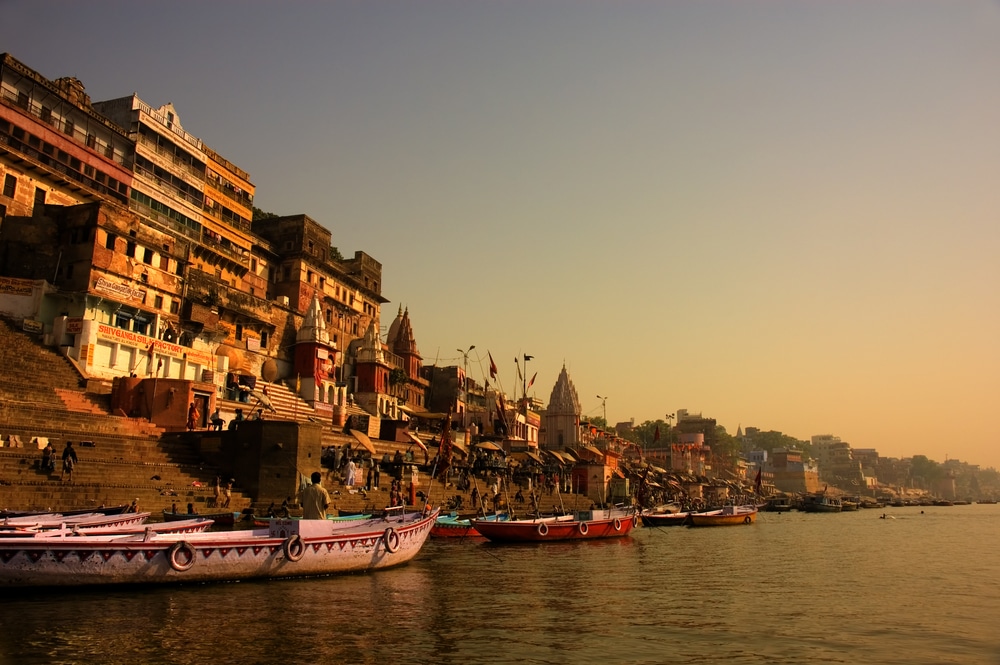
Also known by the names Kashi and Benares, Varanasi is said to have been continuously inhibited since the 11th century BC and is known to be the spiritual capital of India. The city is also known for its Ghats located on the banks of the Ganges River and were mostly built during the 18th century. Today, the Ghats are known to attract a large number of devotees and tourists who visit Varanasi to Pradeep Kumbhashi seek spiritual salvation.
8. Backwaters, Kerala
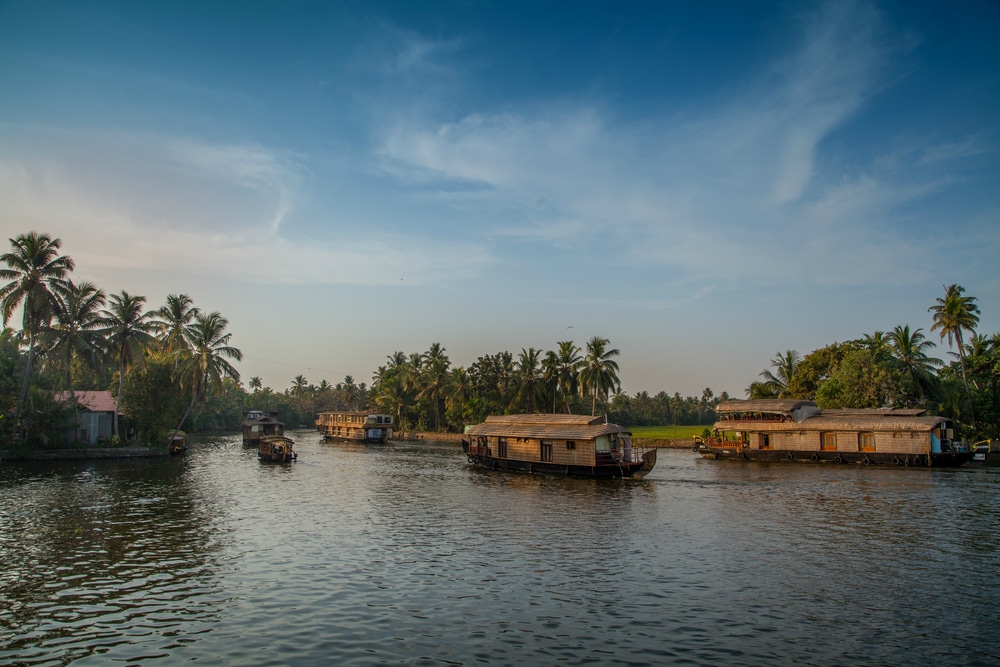
The Backwaters of Kerala are essentially a group of 5 lagoons that are linked by natural and manmade canals. These waterways were mainly used for trade during the older times and are known for their scenic beauty and a rich variety of flora, fauna, avi-fauna and marine life.
9. Old Goa, Goa
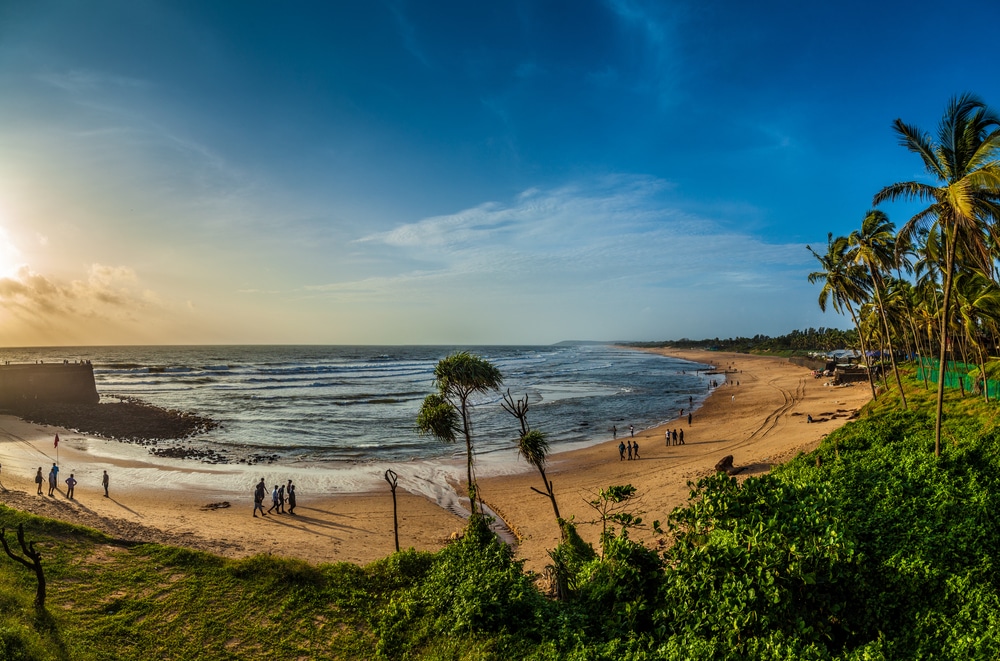
Located in the Northern Goa district of Goa, Old Goa refers to the historic town that served as the seat of the Portuguese in India till the 18th century. The city is also a UNESCO World Heritage Site due to its unique Baroque style architecture and various churches.
10. Umaid Bhavan Palace, Jodhpur
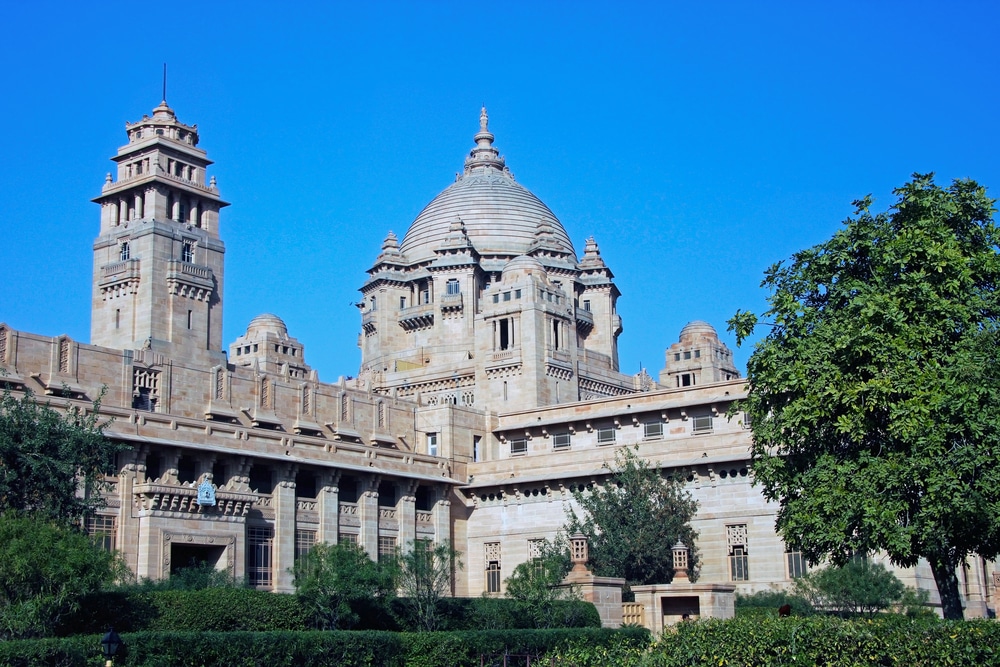
A marvelous example of the Indo-European architecture, the Umaid Bhavan was built during the 1920’s and is known as one of the largest private residences in the world. The palace was criticized for its expensive architecture but also helped the citizens of Jodhpur to sustain their living during a 3 year famine. It was commissioned by the 37th Rathore King Umaid Singh.
11. Jama Masjid, Delhi
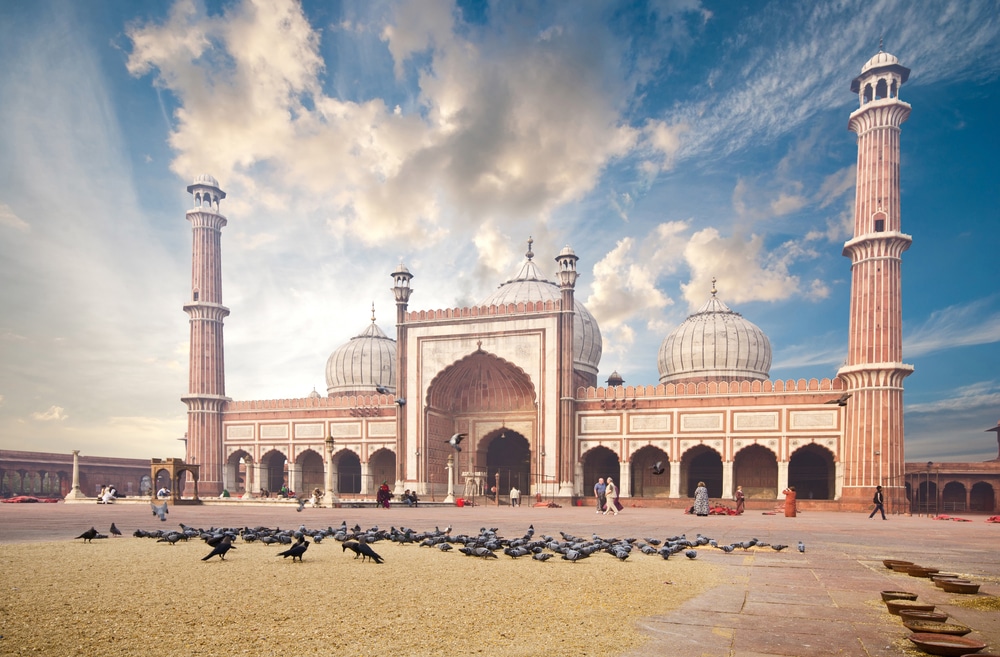
Known formally as ‘Masjid-i-Jahan-Numa’, the Jama Masjid was built by the Mughal Emperor Shah Jahan in the mid-17th century. The mosque is built in a majestic Indo-Islamic style mainly in Red Sandstone and marble. Jama Masjid has three gateways, 2 minarets and four towers that provide it with an imposing look.
12. Akshardham Temple, Delhi
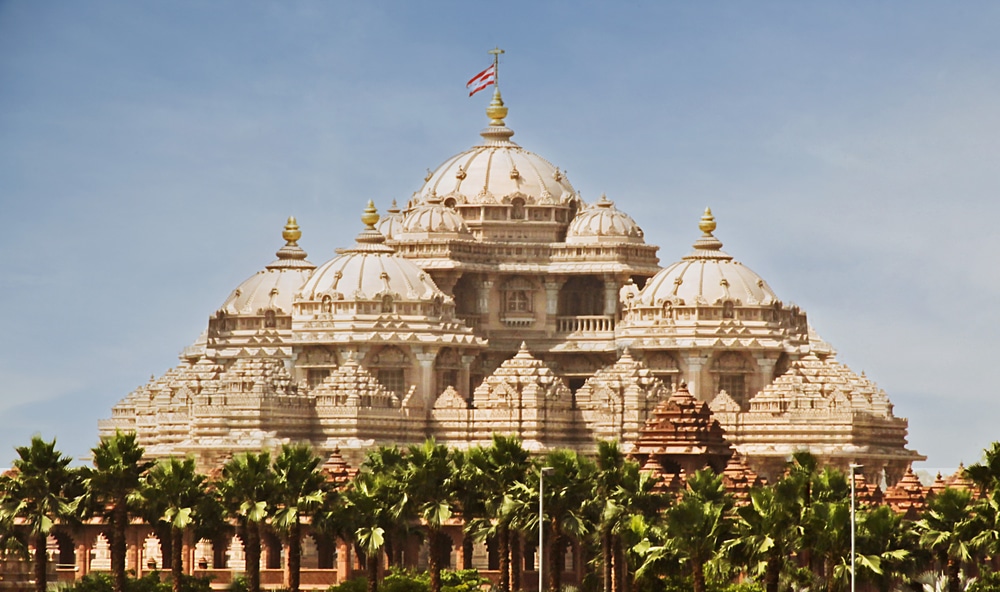
Inaugurated in 2005, the Akshardham temple in Delhi is known as one of the major Hindu temples in India. The structure of the temple is made from sculpted sandstone and took almost 7000 artisans to complete. The entire complex is decorated with sculpted pillars, sculptures depicting deities, sadhus and animals along with scenes from the Hindu mythology.
13. Old Bombay, Mumbai
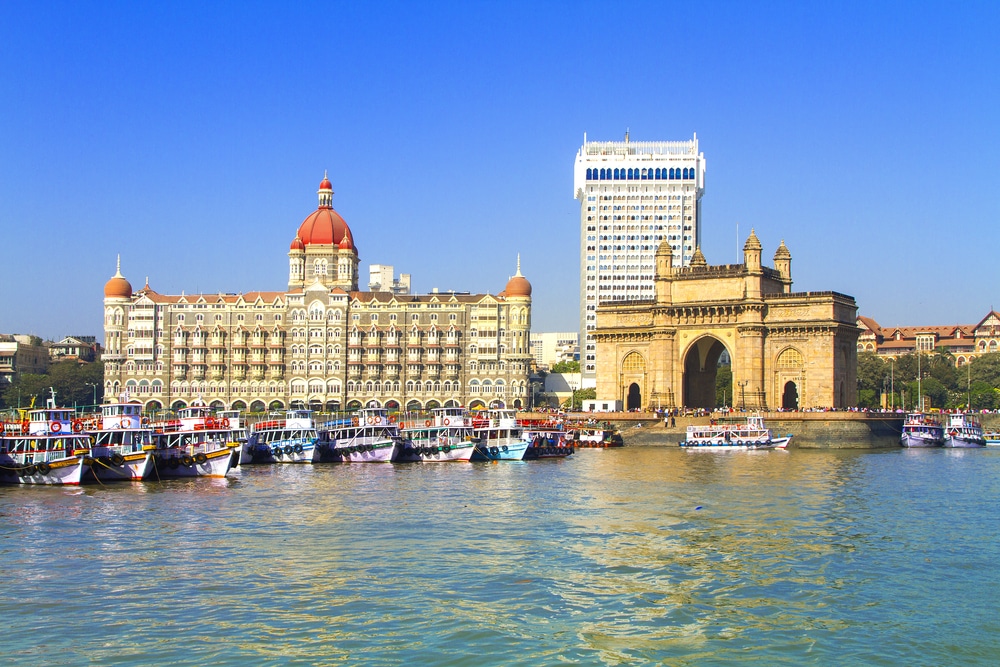
Before it was ceded to the British, the port city of Mumbai was a group of 7 islands, which were connected into a single landmass through land reclamation around the late 18th century. Since then the city was developed as a major port town in India after the construction the Suez Canal. The old town is known for its historic architecture and various tourist attractions in Mumbai.
14. Ajanta and Ellora Caves, Aurangabad
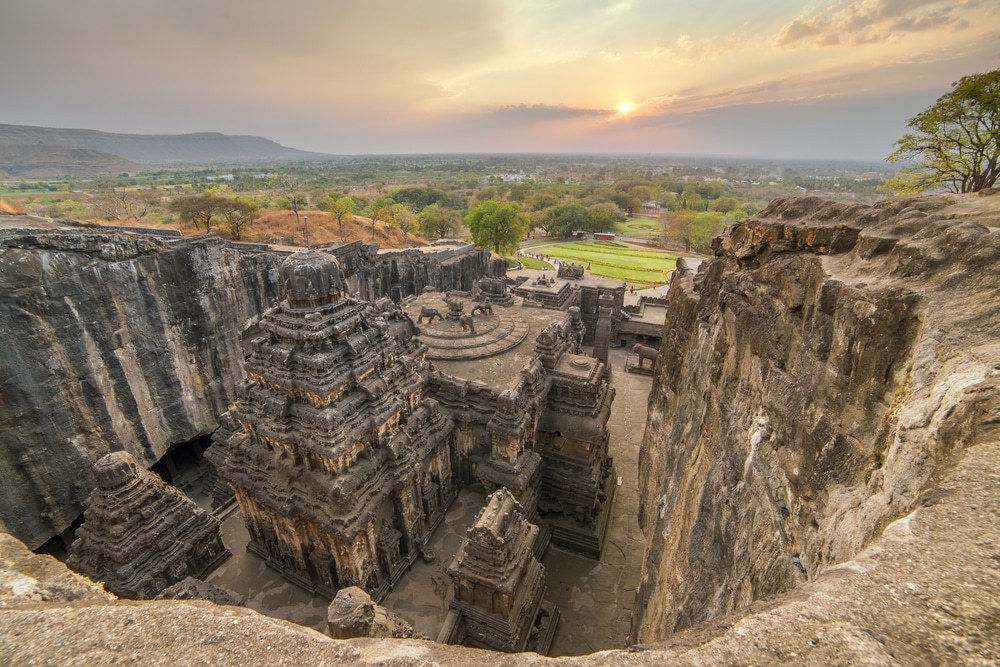
Ajanta and Ellora Caves in Aurangabad are rock cut Buddhist caves that date back as far as the 2nd century BC to 800 AD. The Ajanta Caves mainly consist of rock cut monuments dedicated to the ancient Buddhist traditions, while Ellora cave contain Hindu, Buddhist and Jain monuments built during the Rashtrakuta Empire.
15. The Golden Temple, Amritsar
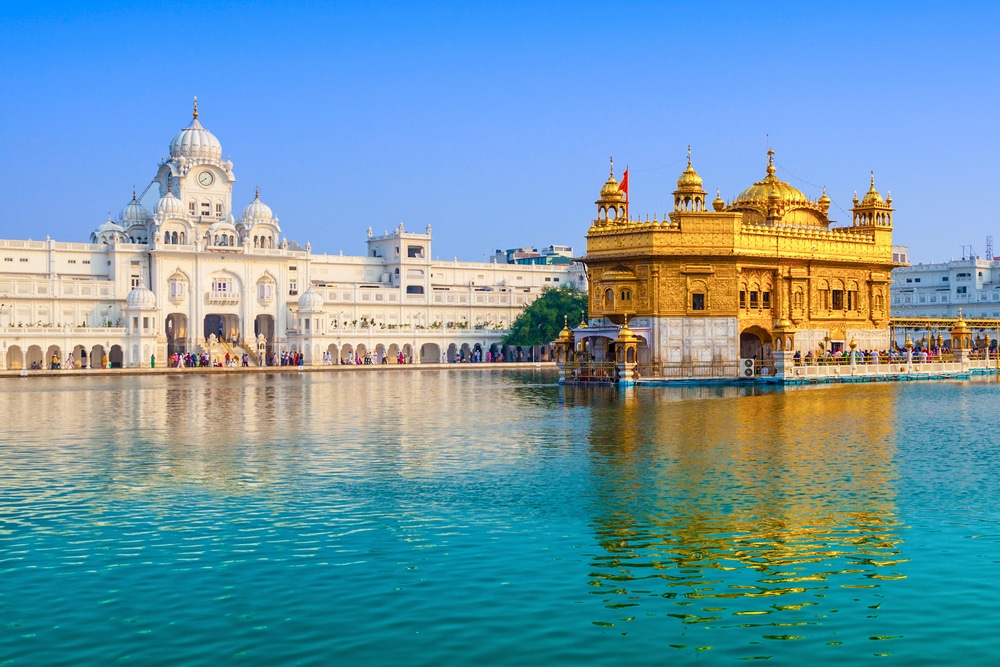
Known by its formal name Harmandir Sahib, The Golden Temple is one of the most revered places of worship for the Sikh community in India. Located in the pilgrim town of Amritsar in the State of Punjab, Harmandir Sahib is known for its gilded façade and the exquisite architecture that is one of a kind among all other religious places in India.
16. Charminar, Hyderabad
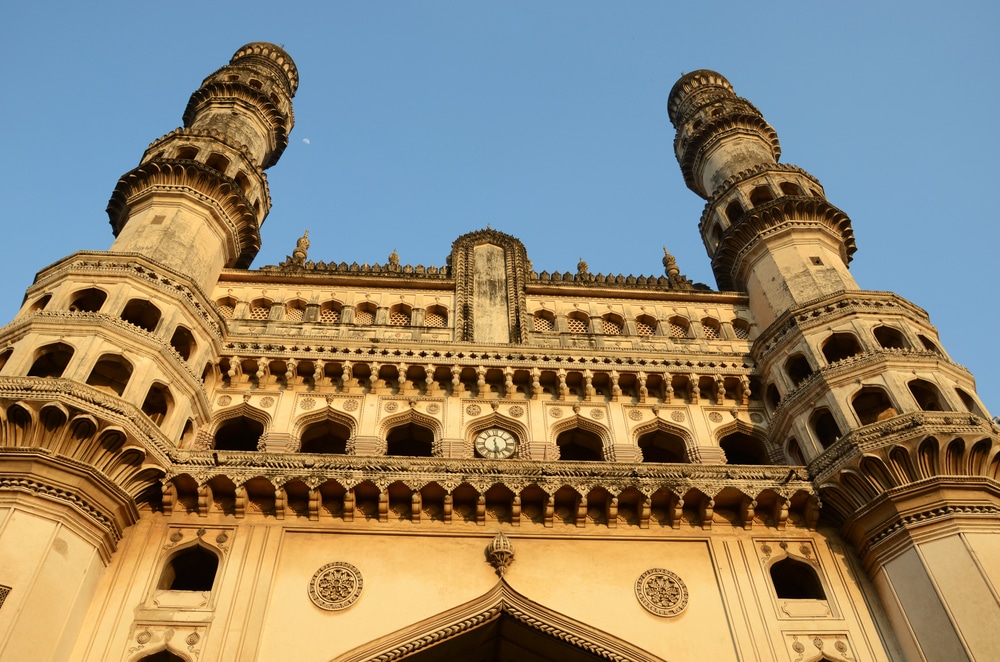
The Charminar or 4 Minarets is a historical monument that was built by the Qutub Shahi Dynasty during the late 16th century. Muhammad Quli Qutub Shah who was the ruler of Golkonda built the monument to commemorate the founding of the city of Hyderabad an important trade route. The structure is known for the signature 4 minarets, which are built in a marvelous Indo-Islamic style. The second floor of the structure also houses a mosque, which is also a remarkable work of medieval architecture.
17. Amber Fort, Jaipur
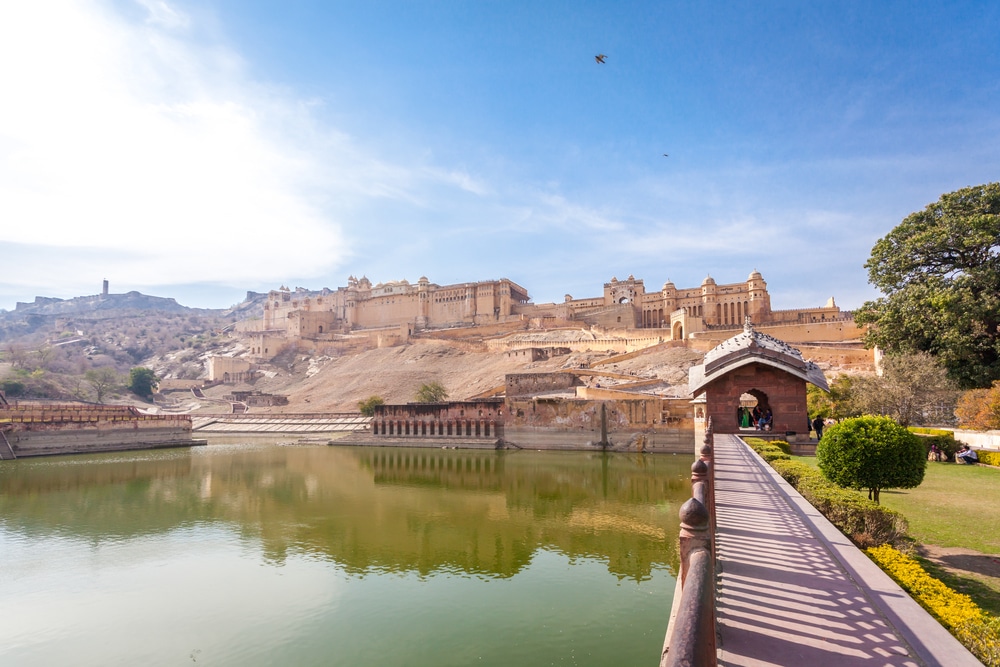
The medieval town of Amer was the former capital of the Kachwaha Rajputs, with the fort serving as their seat till the 18th century. The Amber fort is not only one of the most majestic monuments in India but its scenic location and preservation makes it a major tourist attraction in Jaipur.
18. Rashtrapati Bhavan, Delhi
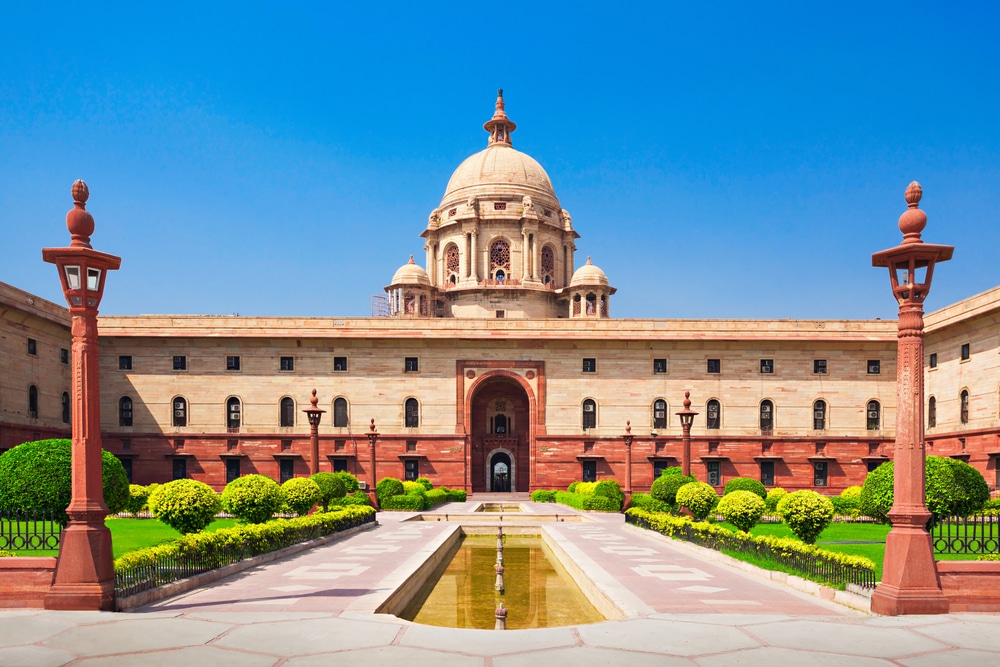
Known during the British Raj as the Viceroy’s House, Rashtrapati Bhavan is known as the seat and residence of the President of India. The structure is built in a vast area that encompasses 320 acres of land, in a marvelous style that incorporates styles from Indian and European architecture.
19. Mahabodhi Temple, Bodh Gaya
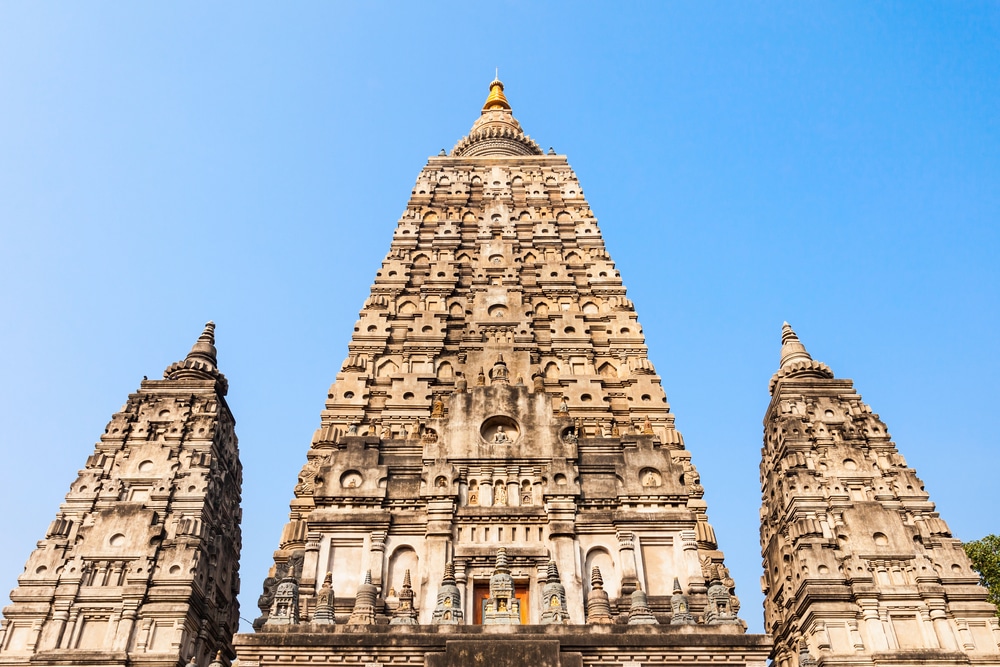
The Mahabodhi Temple is one of the major pilgrim site for the Buddhists as it the place where Lord Buddha received enlightenment. The temple is located at a distance of 96 kilometers from Patna and is also the sight of the Bodhi Tree, the exact spot where Siddhartha Gautama meditated in around 589 BC.
20. Meenakshi Amman Temple, Madurai
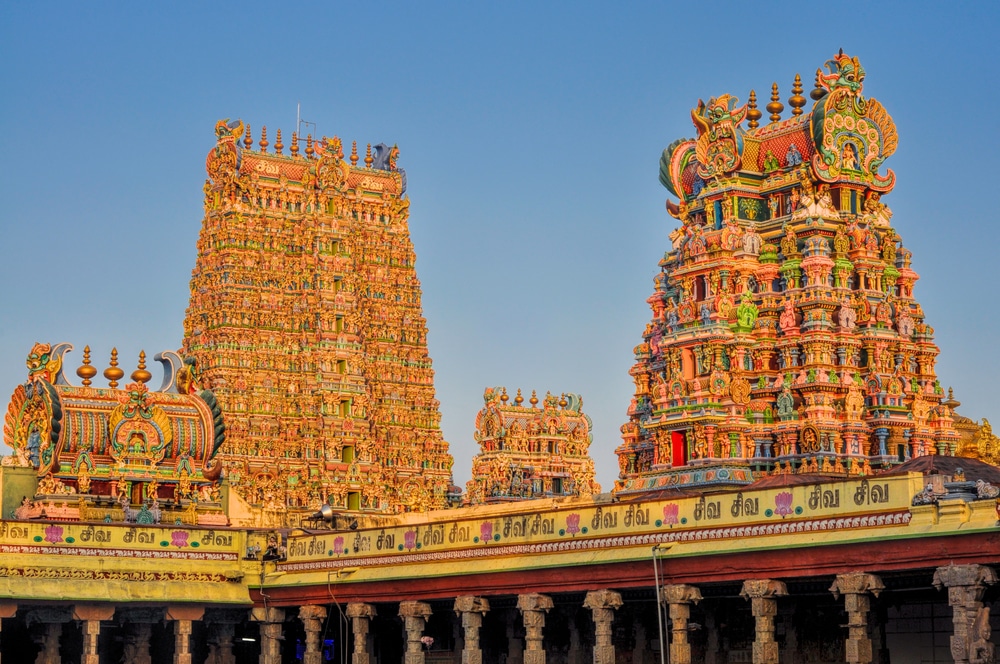
Dedicated to the Hindu deities Parvati and Lord Shiva, Meenakshi Amman Temple in Madurai is a typical Dravidian style temple, with a prominent Gopuram that reaches almost 50 meters high. The current structure was built during the 17th century, although the temple has existed since ancient times.
21. Khajuraho Temples, Chattarpur
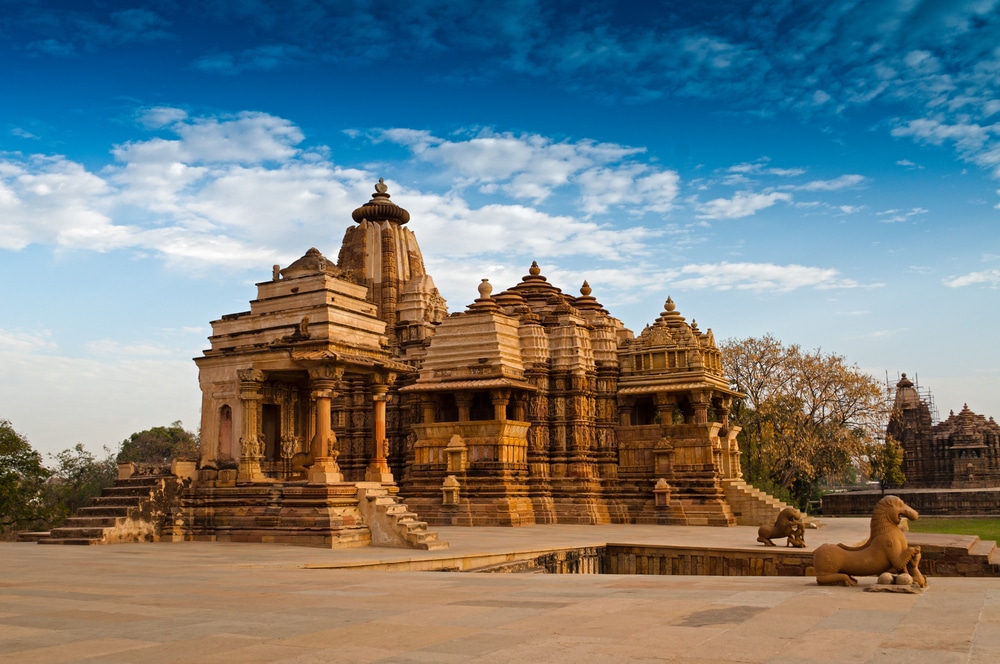
Located at around 175 kilometers from Jhansi, the Khajuraho Group of Temples is a UNESCO World Heritage Site built around the 1st century AD by the Chandela Rajputs. The construction of the temples is a remarkable example of the Hindu Nagara style architecture and is also famous for its sculptures depicting various deities, animals, mythical creatures and erotica.
22. Elephanta Caves, Mumbai
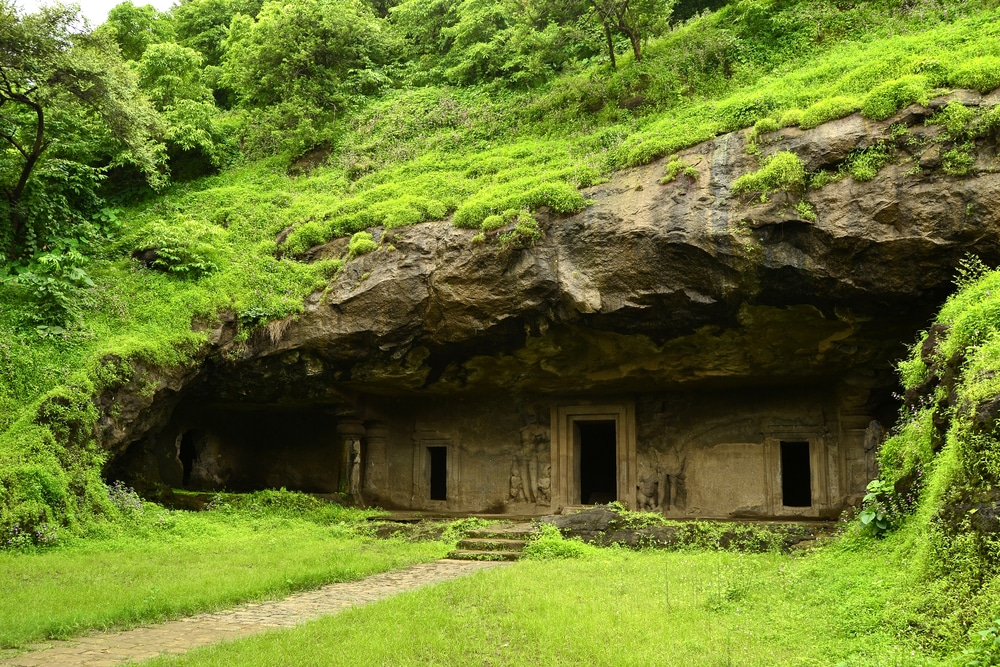
The Elephanta Caves are located on the Elephanta Island, at a short distance of 11 kilometers from the Apollo pier in Mumbai. A UNESCO World Heritage Site, the Caves are famous for their ancient rock cut temples dedicated to the Hindu and Buddhist traditions.
23. City Palace, Udaipur
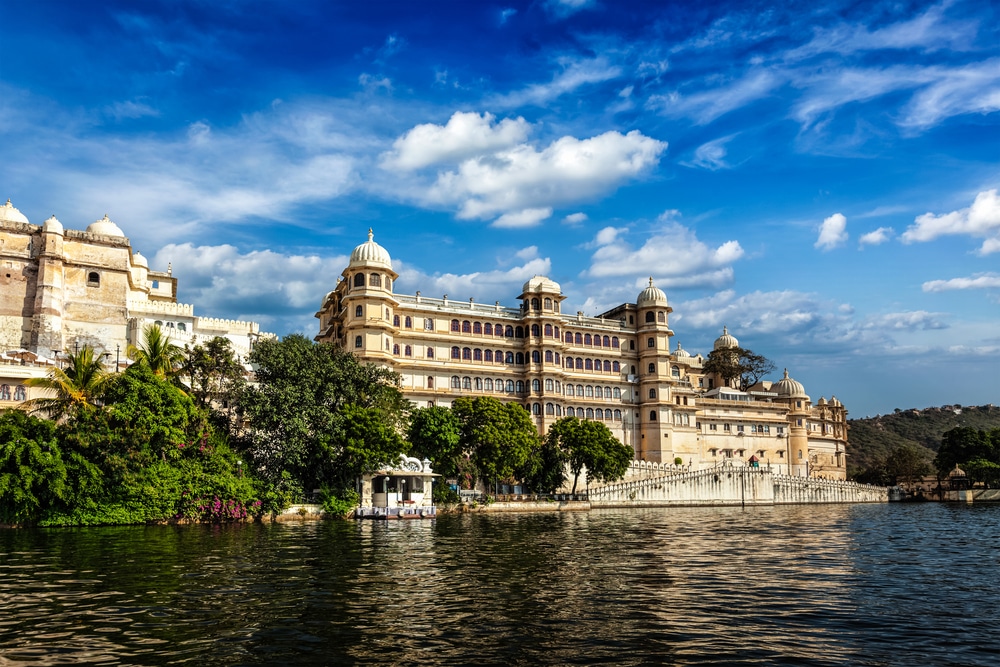
After leaving Chittor due to its strategic disadvantage, the Sisodiya Rajputs established their new kingdom as the city of Udaipur and made it the capital of Mewar. The construction of the City Palace was started in 1559 by Maharana Udai Singh and was improved by his successors for the next 300 years. The palace is one of the most visited monuments in India and is known for its opulent Hindu Rajput Architecture.
24. Havelock Island, Andamans
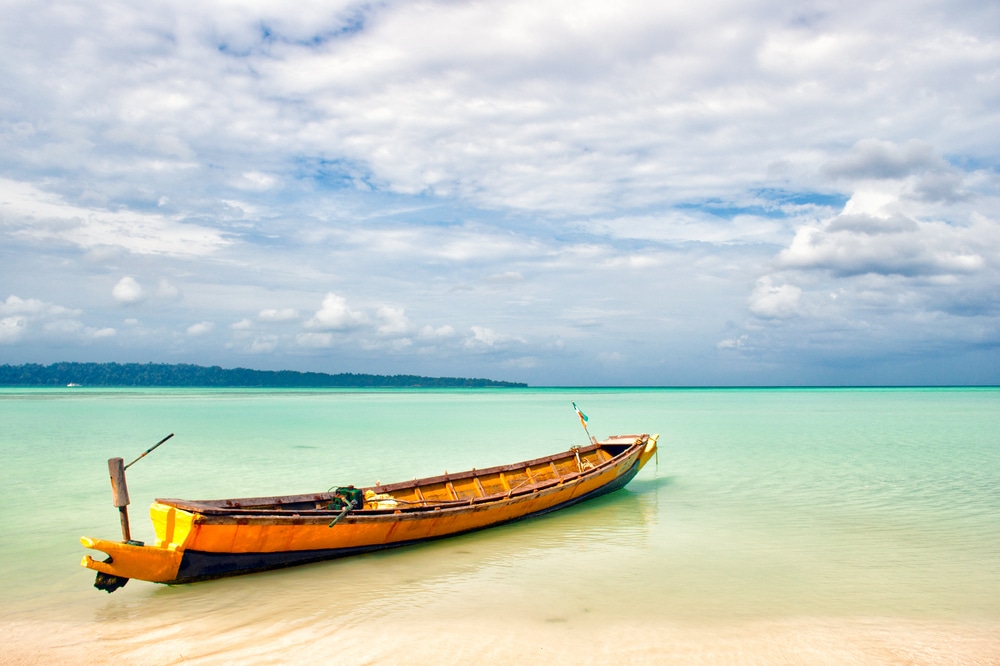
Havelock islands are located in the Andamans at a short distance of 57 kilometers from Port Blair. The island is one of the largest in the Andamans and is known for its exquisite beaches and white sands. The shoreline is strikingly different from most other beaches found in India and is one of the few must visit exotic locations in the country.
25. Tirupati, Chittoor
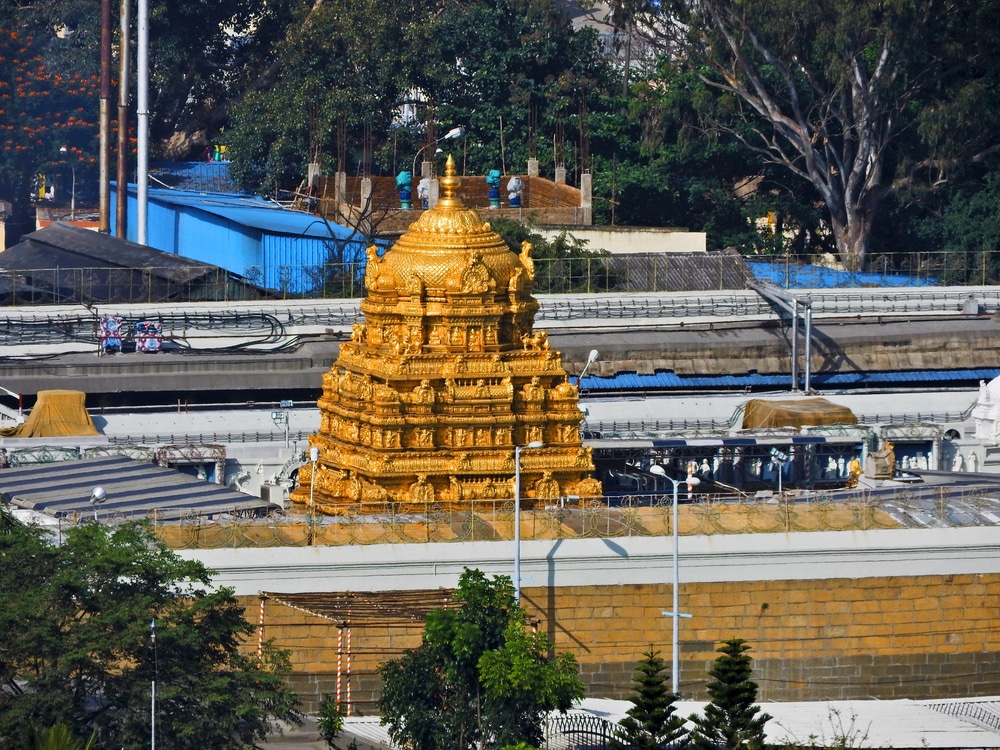
Dedicated to Lord Venkateshwara, a form of the Hindu deity Lord Vishnu, Tirupati is regarded as the richest Hindu temple in the world and is known for its remarkable Dravidian architecture. The temple is also located atop the Tirumala hill at an elevation of 853 meters above sea level.
26. Tawang Monastery, Tawang
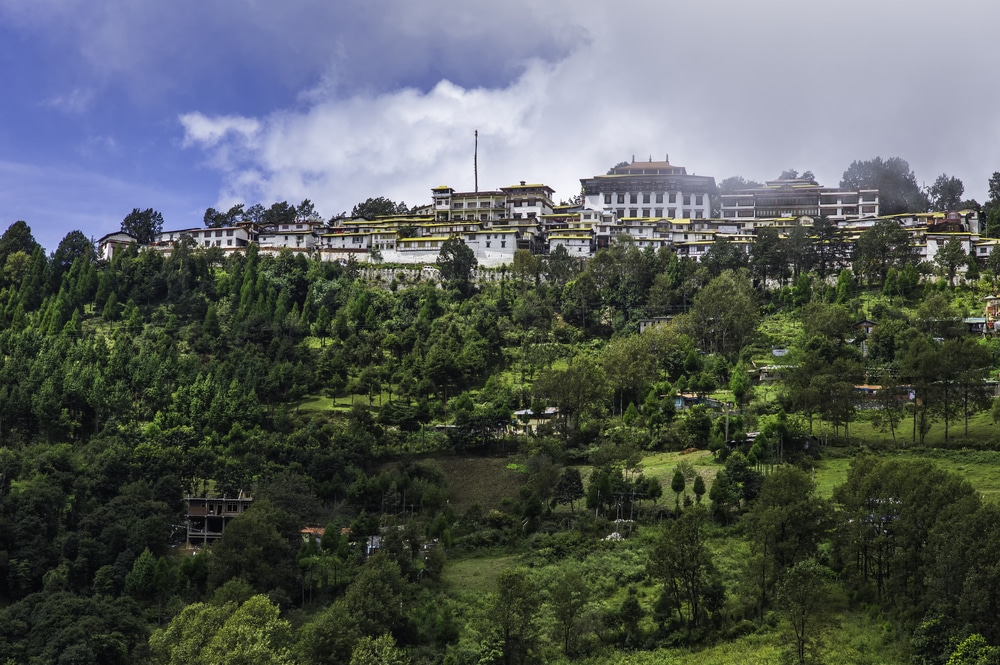
Known as the largest monastery in India, Tawang Monastery was founded in the 17th century, under the orders from the 5th Dalai Lama of the Tibetan Buddhist sect. The building is located at an elevation of 3000 meters above sea level and is known for its scenic views and remarkable architecture.
27. Kaziranga National Park, Assam
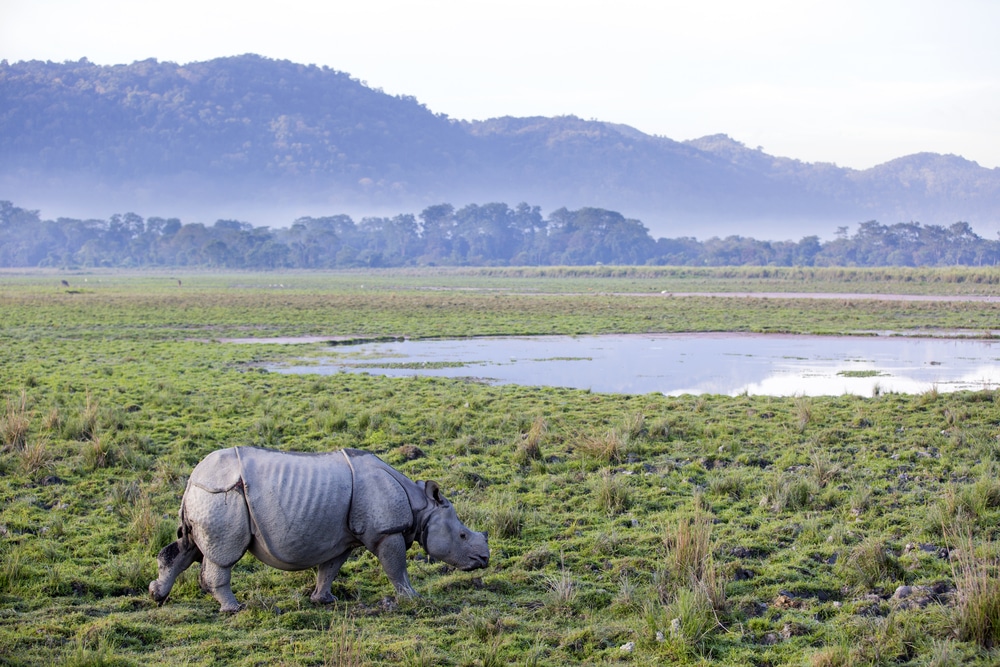
The Kaziranga National Park is a UNESCO World Heritage Site and is known to be one of the last few strongholds of the one-horned rhinoceros. It is spread around an area of 430 sq. kilometers and is known for its varied terrain and vegetation that houses a large number of wildlife species.
28. Kesaria Stupa, Kesaria
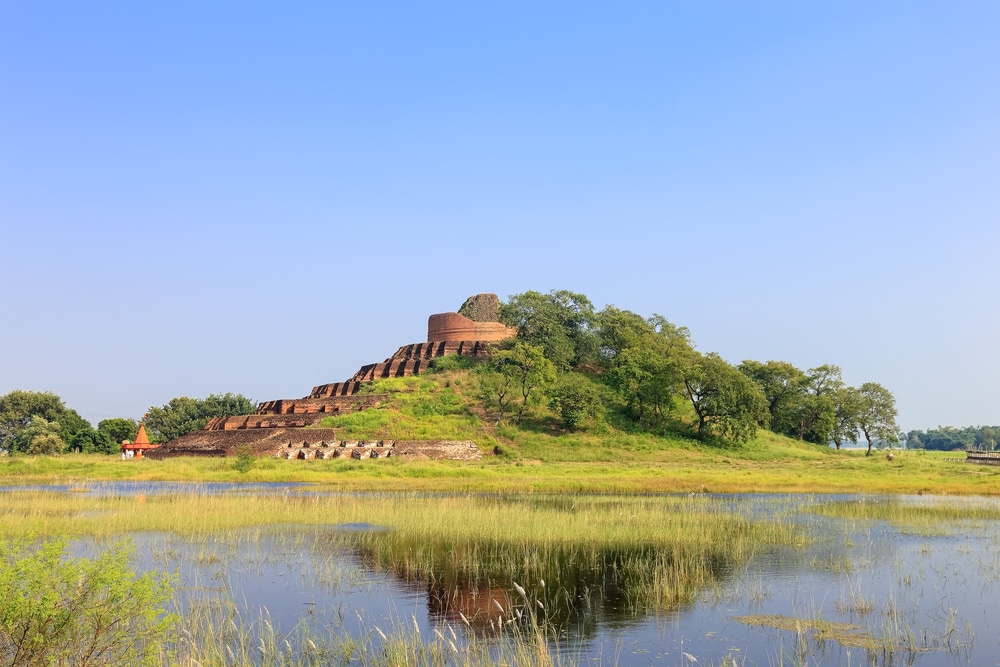
Located in Bihar, Kesaria Stupa is one the largest Buddist stupas in the world. It was built around the 2nd and 7th century AD and stands more than 300 feet in height. The stupa was also known to be visited by Lord Buddha and is also mentioned in the writings of Chinese traveller Heiun Tsang that signifies its historical importance.
29. Palitana Temples, Bhavnagar
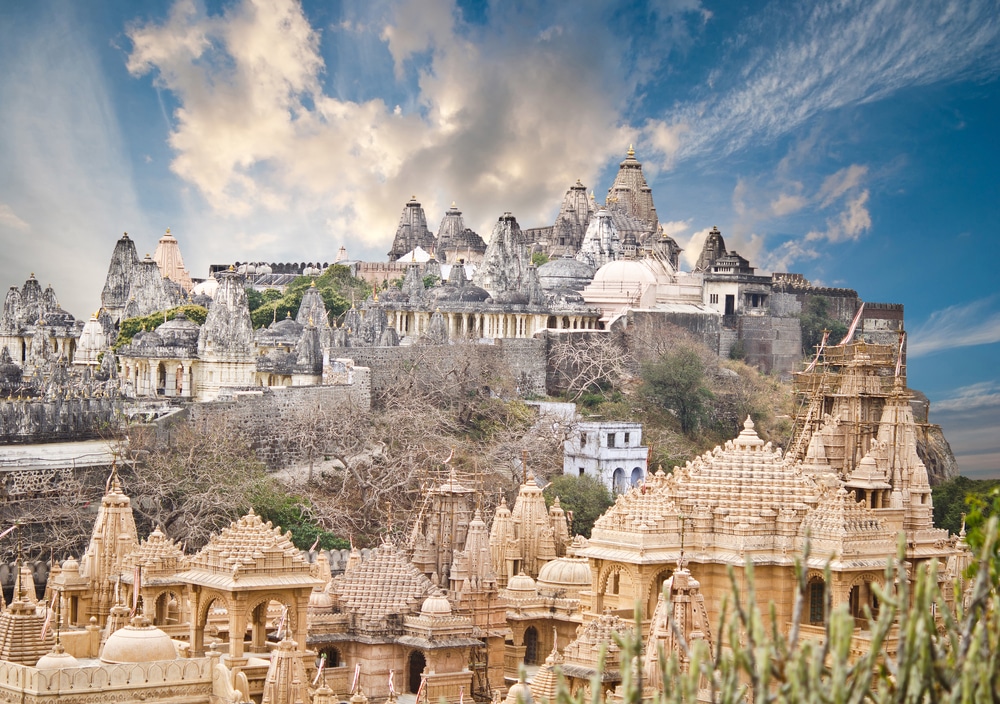
The Jain temples of Palitana are located in the Bhavnagar district of Gujarat and are known for its marvelous rock sculpted exteriors. The group of temples is known to be one of the most holy pilgrimage sites for the Jain community and is located at an elevation of 603 meters, accessible through climbing around 4000 steps.
30. City Palace, Jaipur
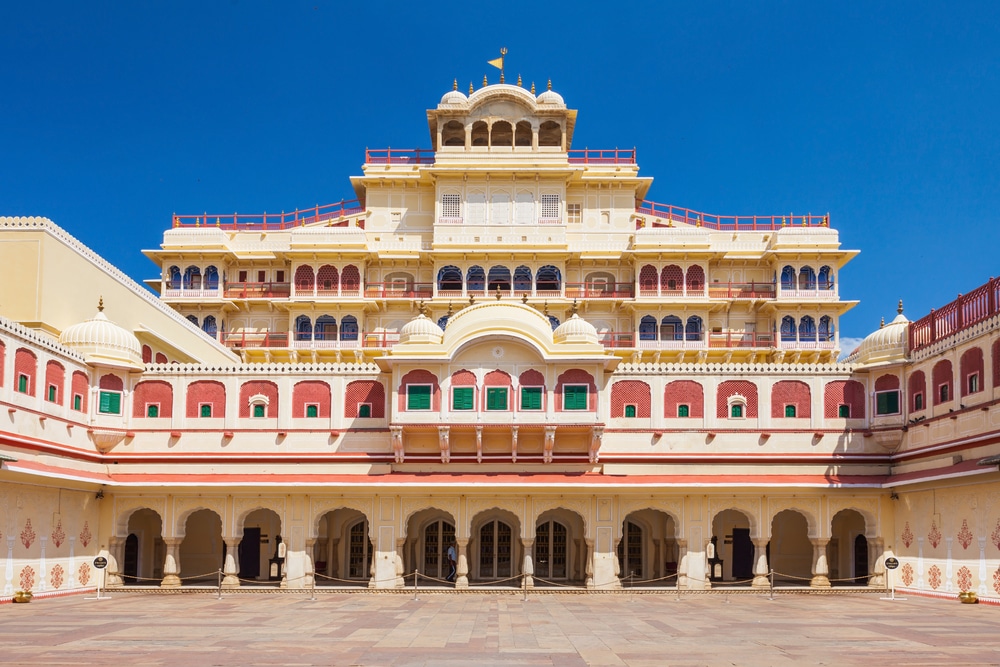
The city of Jaipur was established as the new capital of the Kachwaha Rajputs and the City palace is located in the heart of the walled city. Constructed during the 18th century, the palace is a remarkable example of Rajput architecture and combines traditional Hindu architecture with European elements. The building houses a museum and a portion is still used by the erstwhile royal family as their residence.
31. Sun Temple, Konark
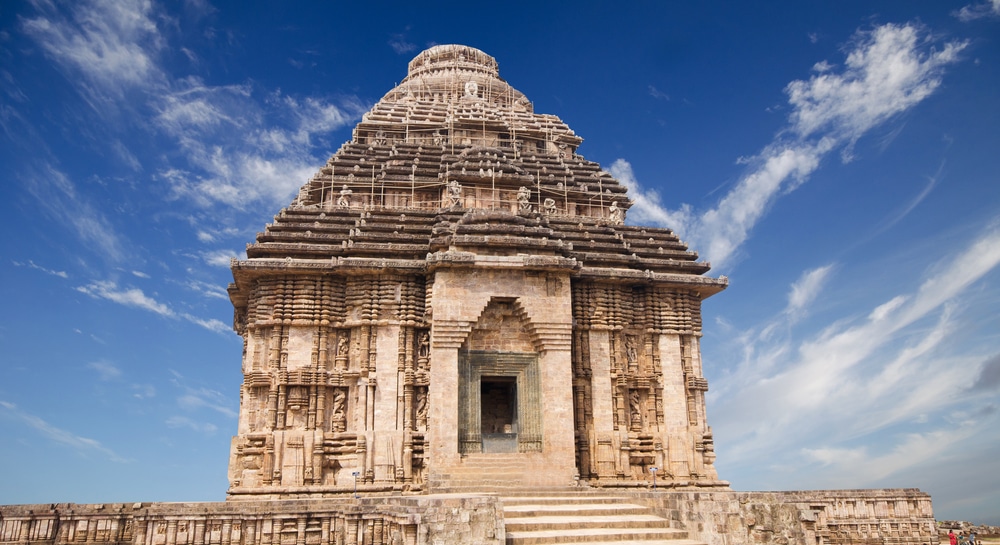
Sun temple of Konark was built during the 13th century by the kings of the Eastern Ganga Dynasty. Known for its remarkable architecture and antiquity, the temple is built by carving large boulders of rock and resembles a large stone chariot. It is also a UNESCO World Heritage Site and is believed to be the exact spot where Lord Krishna’s son Sambha meditated to cure his leprosy.
32. Rani Ki Vav, Patan
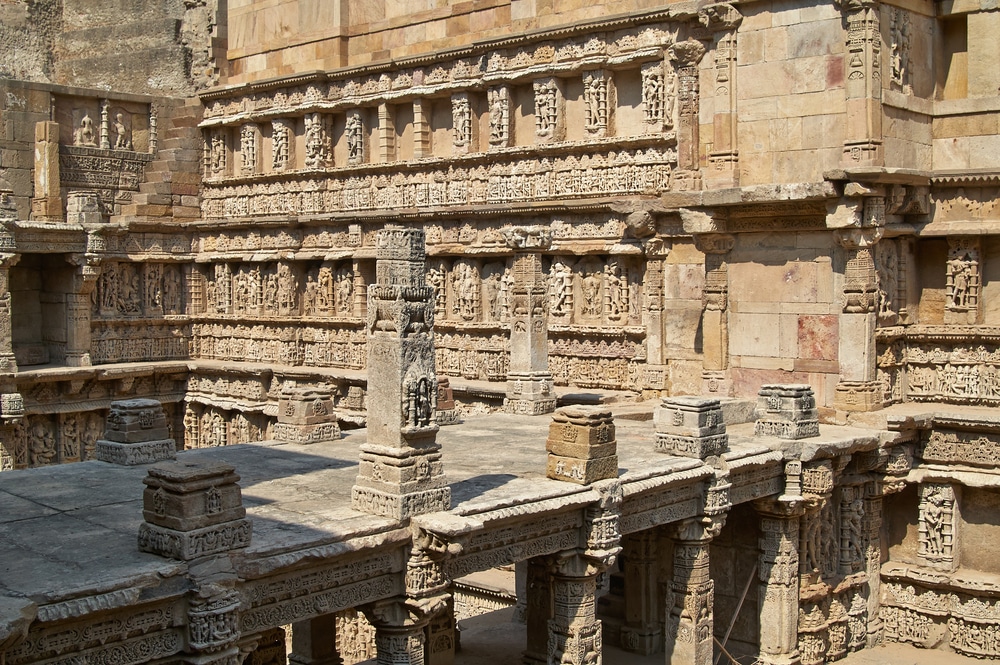
Constructed by the king of the Solanki Dynasty in Gujarat, Rani Ki Vav in Patan, is a stone step-well that is known for its intricate carvings and architecture. The construction of the place dates back to the 11th century AD and is one of the largest step-wells in India.
33. Chaturbhuj Temple, Orchha
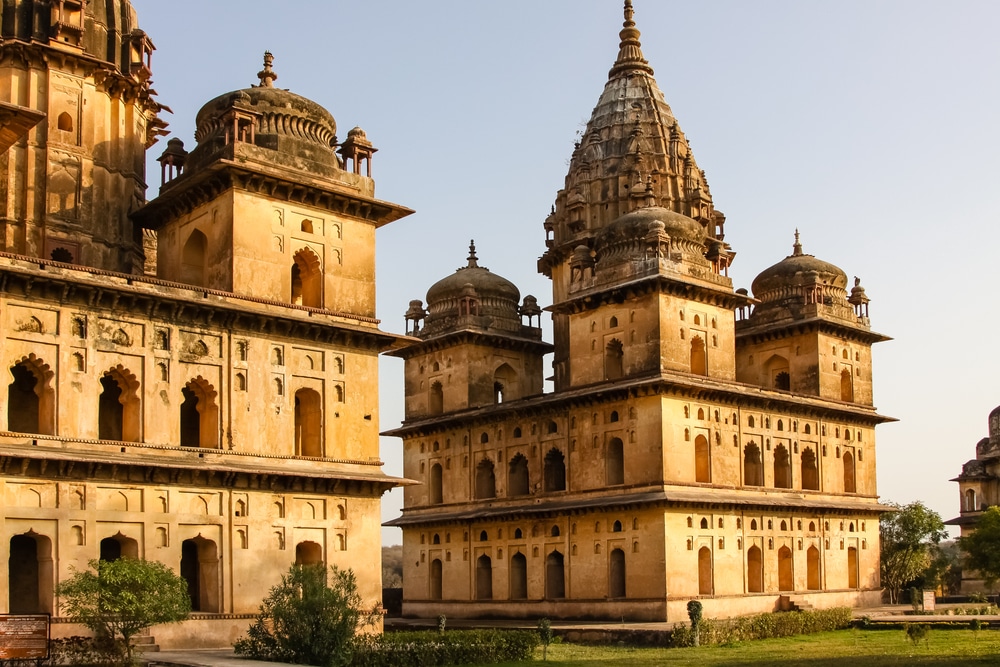
The temple is dedicated to Lord Vishnu and was constructed by the Bundela Rajputs of Madhya Pradesh around the 16th century AD. Chaturbhuj temple of Orchha is known for its remarkable architecture with tall spires, which give them an imposing look. The interiors and exteriors have also been extensively adorned with stone carvings depicting flowers, petals and geometric patterns.
34. Cellular Jail, Port Blair
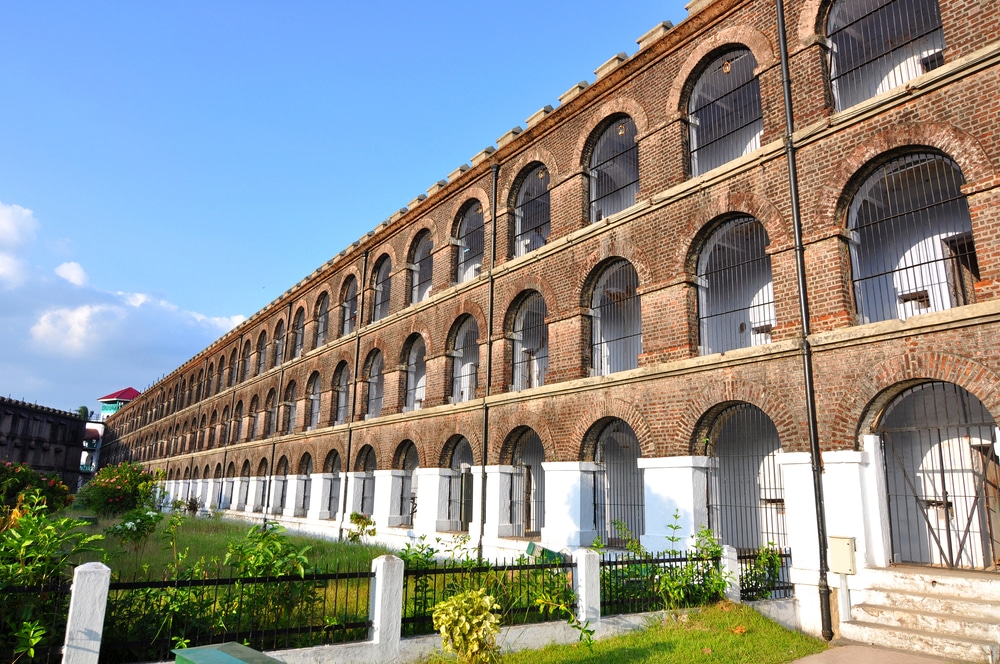
The Cellular Jail or Kala Pani is a historic Jail that was used to incarcerate political prisoners during the British Rule in India. The construction of the prison complex dates back to the late 19th century as a response to the revolt of 1857. The jail was also designed keeping in mind that the prisoners weren’t allowed to communicate amongst themselves.
35. Borra Caves, Vishakhapatnam
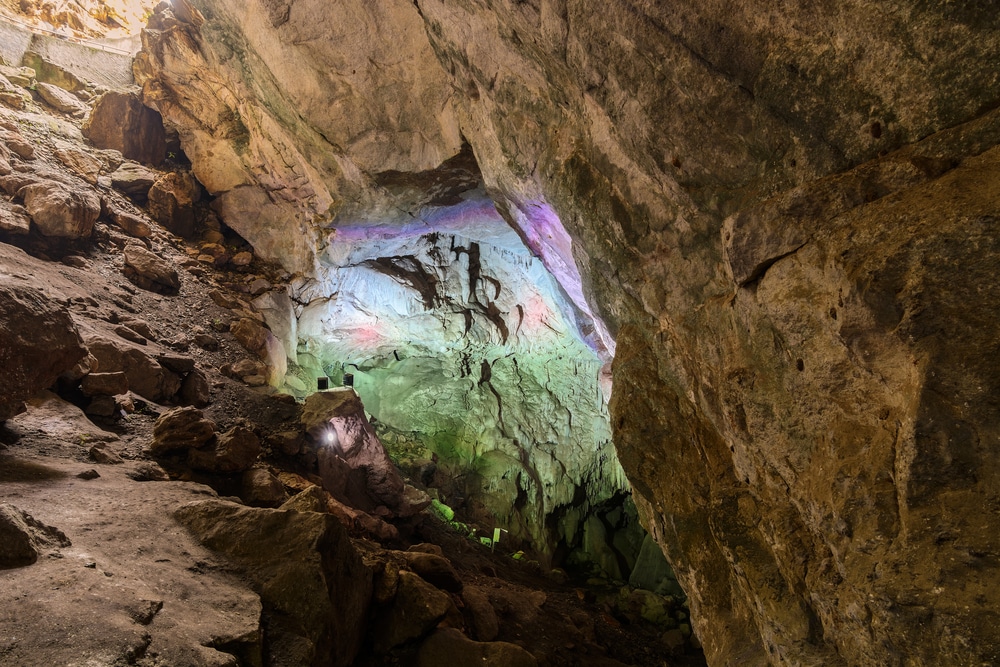
The Borra Caves in Vishakhapatnam are arguably the deepest cave in India that goes to a depth of 80 meters. The caves are covered with stalagmites and stalactites due to the limestone content in the walls. The caves are also a revered Hindu pilgrimage spot due to the presence of several stalagmite lingams, the representation of Lord Shiva.
36. The Ridge, Shimla
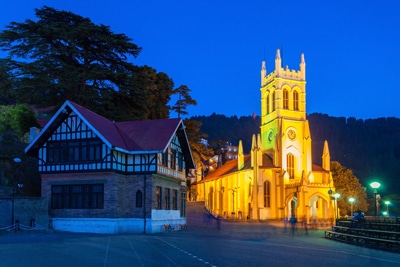
If you are on your visit to the enchanting city of Shimla, then you must visit ‘The Ridge’. The place is a large open area, located in the centre of Shimla and is the heart of all its commercial and tourist activities and connects several places of interest in Shimla.
37. Tso Moriri Lake, Ladakh
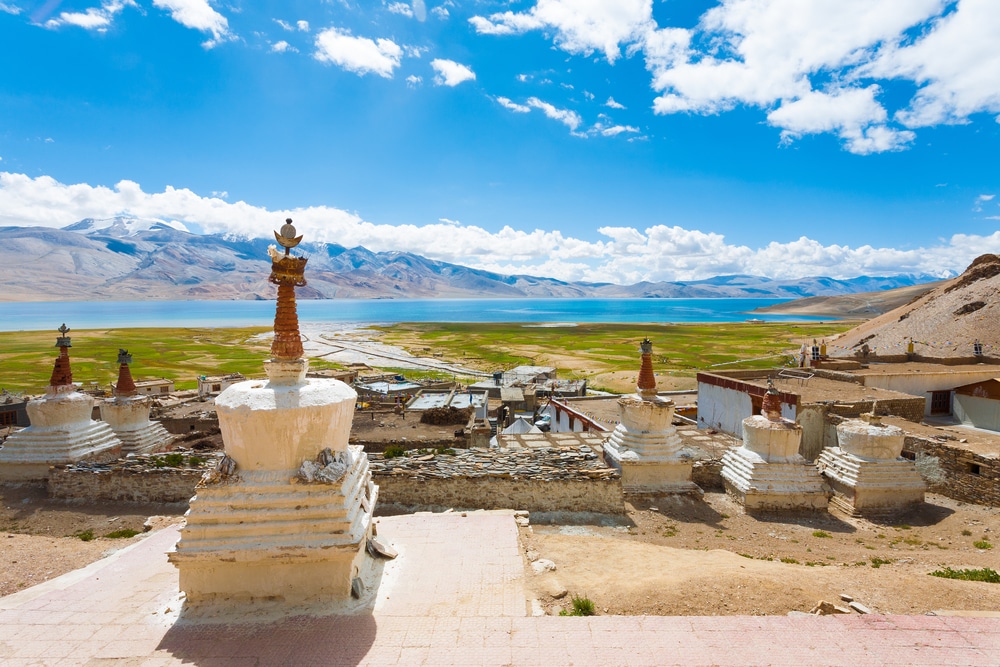
The Tso Moriri is another enchanting glacial lake, located in the high mountain escapades of Ladakh at a height of 4522 meters above sea level. The lake is accessible from Leh and can be reached easily from the Pangong Tso. The place is known for its pristine blue waters and views of the surrounding Himalayas.
38. Mysore Palace, Mysore
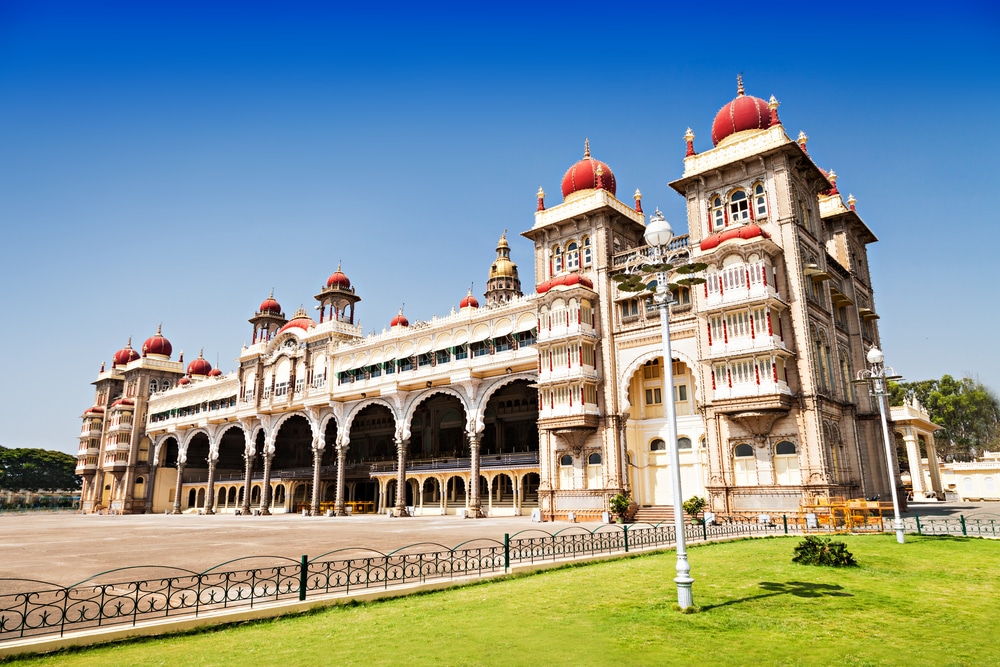
The Mysore palace was built between 1897 and 1912, by the Wodeyar Kings of Mysore and is known for its remarkable architectural design, receiving more than 6 million visitors each year. The design of the palace beautifully combines elements from Hindu, Mughal and Gothic architecture decorated with ornamental designs.
39. Bangalore Palace and Grounds, Bangalore
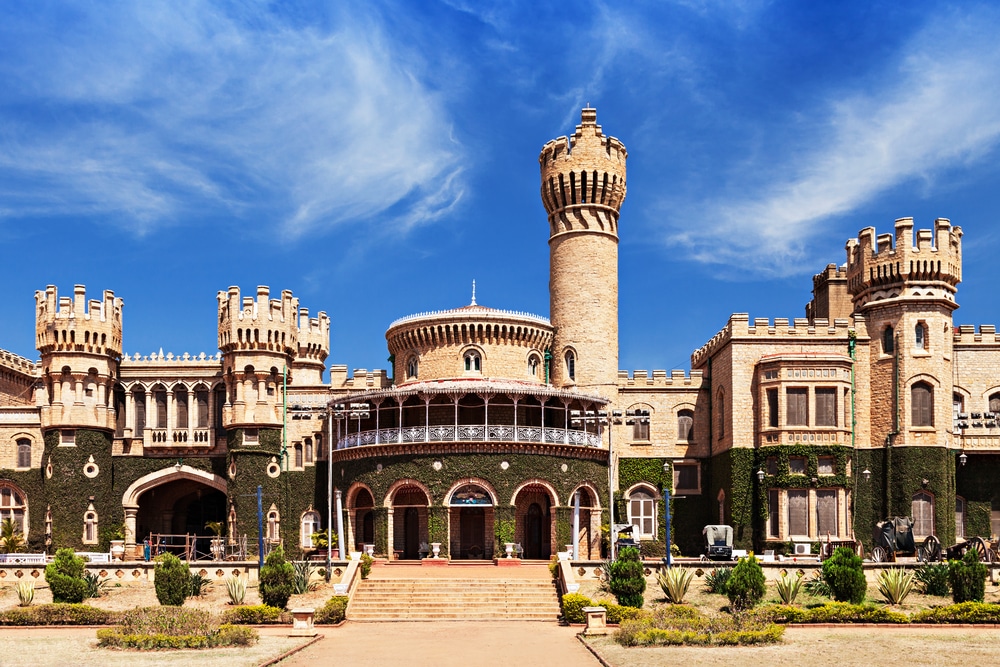
One of the few buildings in India to be built in Tudor Style, the Bangalore Palace was constructed by the Maharaja of Mysore during the early 20th century and is one of the must visit places in Bangalore. The palace was initially started as the residence for the principal of the Central High School, but the site was later bought by the Maharaja. The grounds of the palace are known for hosting various cultural events and appearances by music icons such as Deep Purple, Rolling Stones, Metallica, Aerosmith, Mark Knopfler, Roger Waters and Elton John etc.
40. Gwalior Fort, Gwalior
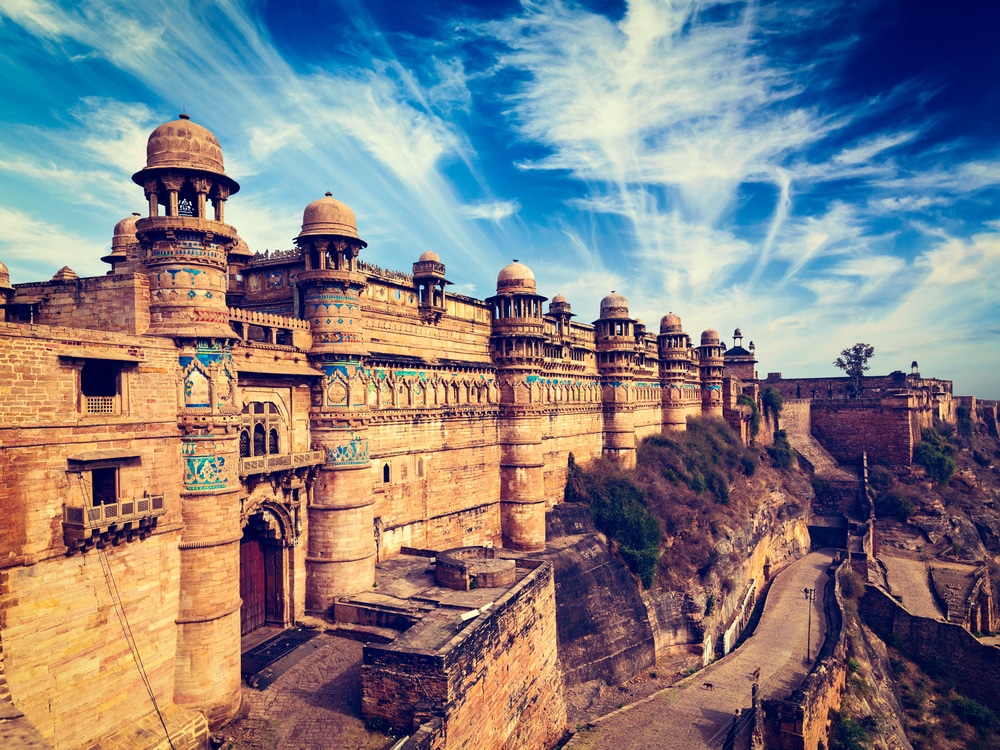
Although the fort has seen a large number of various dynasties and empires, it was said to have been constructed by Suraj Sen Kachwaha during the 5th century. Gwalior fort in Gwalior comprises of two main palaces and several temples that are dedicated to Hindu, Buddhist and Jain traditions.
41. Bhimbetka Rock Shelters, Raisen
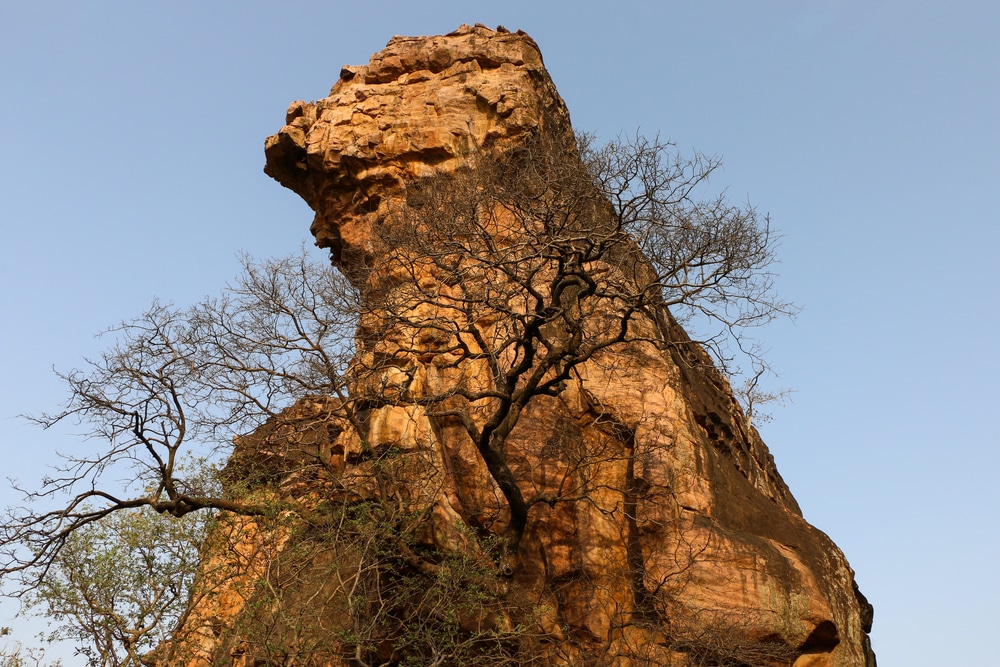
A UNESCO World Heritage Site, the Bhimbetka Rock Shelters are known to be one of the oldest archeological sites in the world. Believed to have been used since the time of Homo erectus, the caves contain an extant number of ancient cave drawings that date back to more than 30,000 years old.
42. Victoria Terminus (Chattrapati Shivaji Terminus), Mumbai
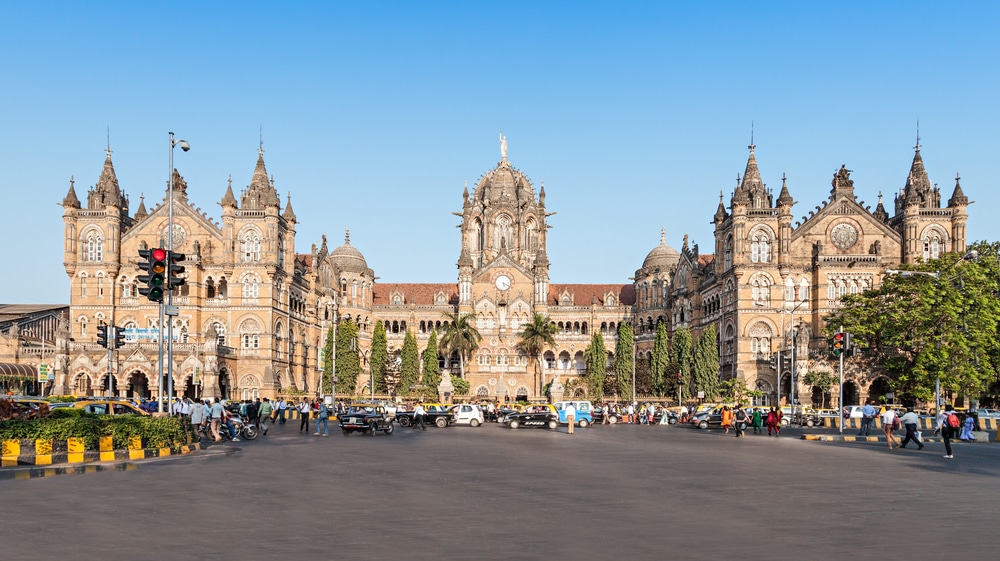
One of the finest examples of Indo-Gothic Revival architecture, Victoria Terminus or Chattrapati Shivaji Terminus is one of the busiest railway stations in India. The construction was completed in 1888 and the design of the building is attributed to Fredrick William Stevens. The station has become an icon of the city of Mumbai and is one of its most recognizable landmarks.
43. Jagannath Temple, Puri
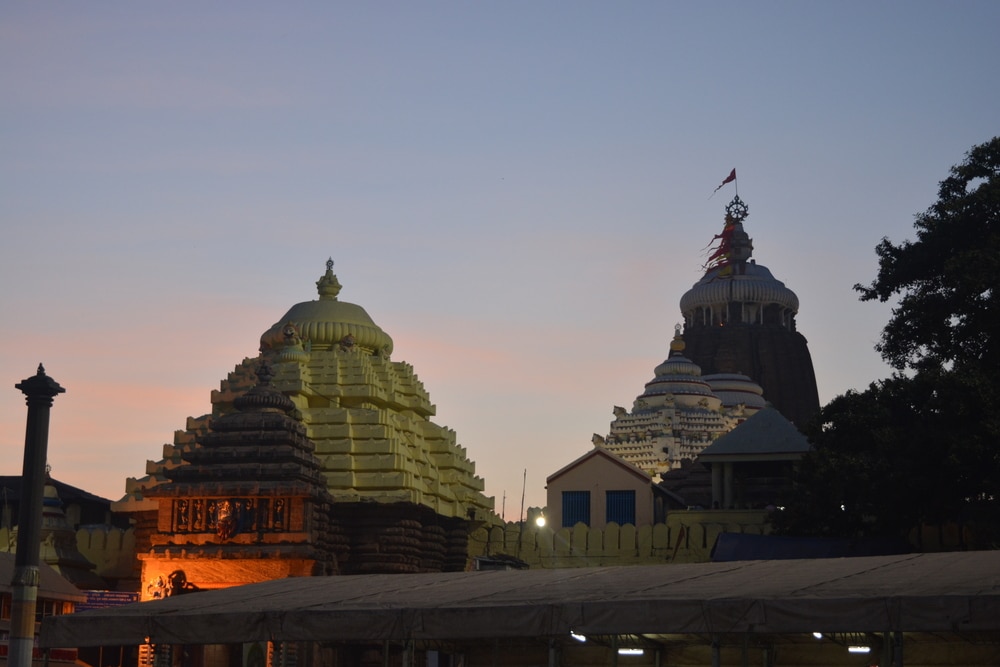
The site of the temple has been used for worship since the ancient times, but the existing structure was built by the Kings of the Eastern Ganga Dynasty during the 12th century AD. Jagannath Temple in Puri is known as a major Hindu pilgrimage site and is also a part of the Char Dham pilgrimage in Hindu traditions.
44. Lingaraja Temple Complex, Khurda
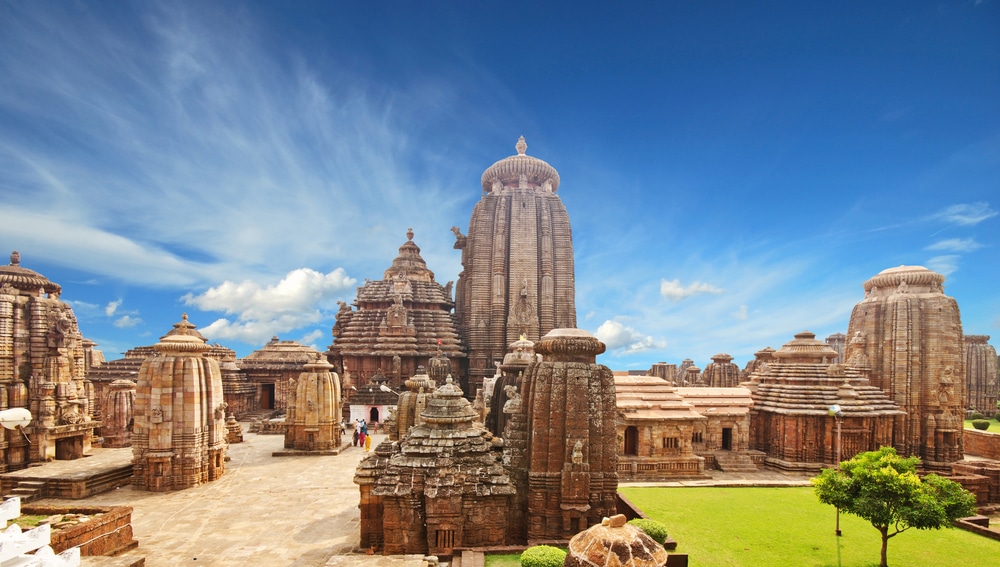
Dedicated to Lord Shiva, the Lingaraja Temple is one of the largest Hindu temples in Bhubaneswar and was built during the 11th century. The temple is also one of the few remaining specimens of the Kalinga style architecture and was built by the rulers of the Ganga dynasty.
45. Udayagiri Caves, Bhopal
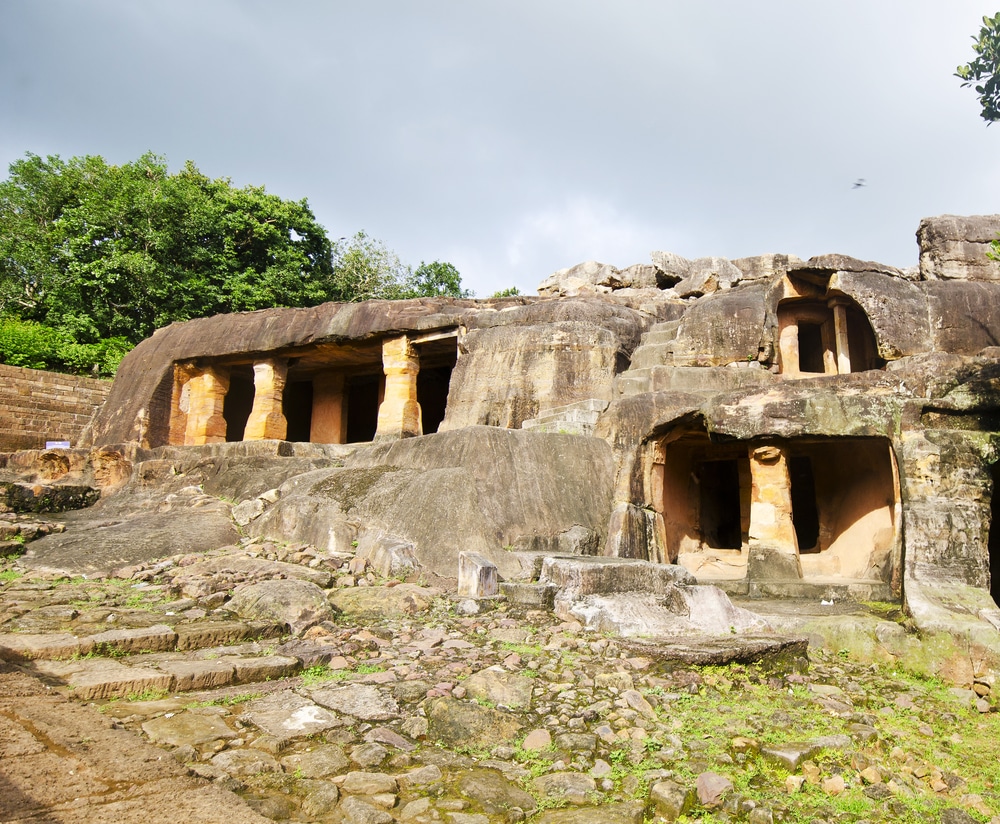
The Udayagiri Caves are known to be some of the oldest Hindu structures in India and were said to have been constructed by the Gupta Empire around the 5th century AD. The caves are one of the most visited tourist destinations in Bhopal. They are known for their rock cut depictions of various Hindu deities and their incarnations.
46. Qila Mubarak, Bhatinda
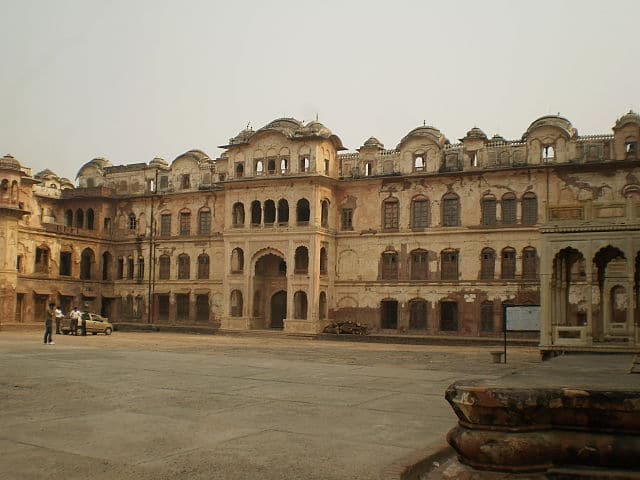
Known to have been built by the Kushan Emperor Kanishka during the 1st century AD, The Quila Mubarak is one of the oldest forts in India. The fort is notable for being the final resting place of Razia Sultan, the first female monarch of Delhi who was incarcerated here.
47. Jallianwala Bagh, Amritsar
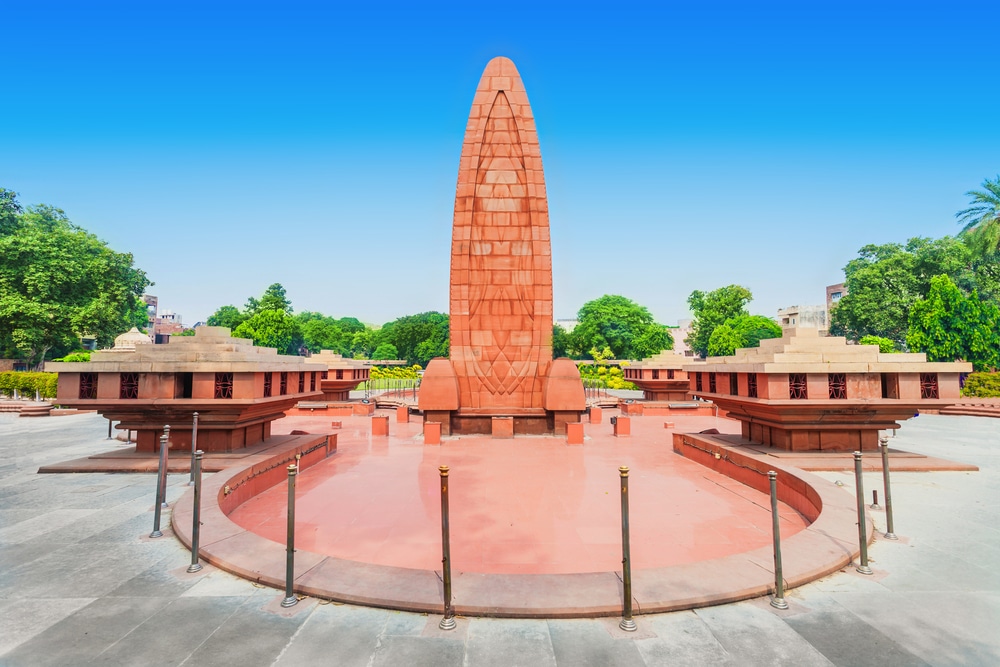
One of the major sites of the Indian struggle for Independence, the Jallianwala Bagh is a monument of National importance. It was here that the British officials opened fire on a rather peaceful Indian crowd including women and children. The garden is spread across an area of 6.5 acres and still contains several bullet marks left by the British.
48. Chhatrapati Shivaji Maharaj Vastu Sangrahalay, Mumbai
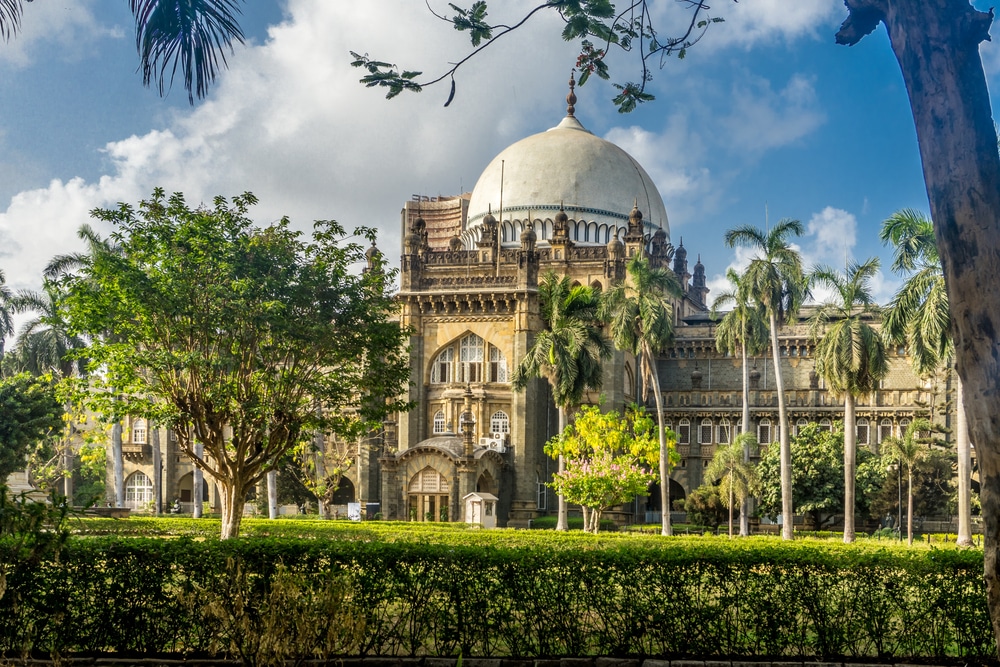
The building was initially built as the residence to the Prince of Wales who visited India in 1904. After his departure, the building was turned into a museum to promote the arts and crafts of India. Chhatrapati Shivaji Maharaj Vastu Sangrahalay is one of the largest museums in India and is known for its extant collection of artifacts and archeological findings that provide a view of the country’s history.
49. Lake Palace, Udaipur
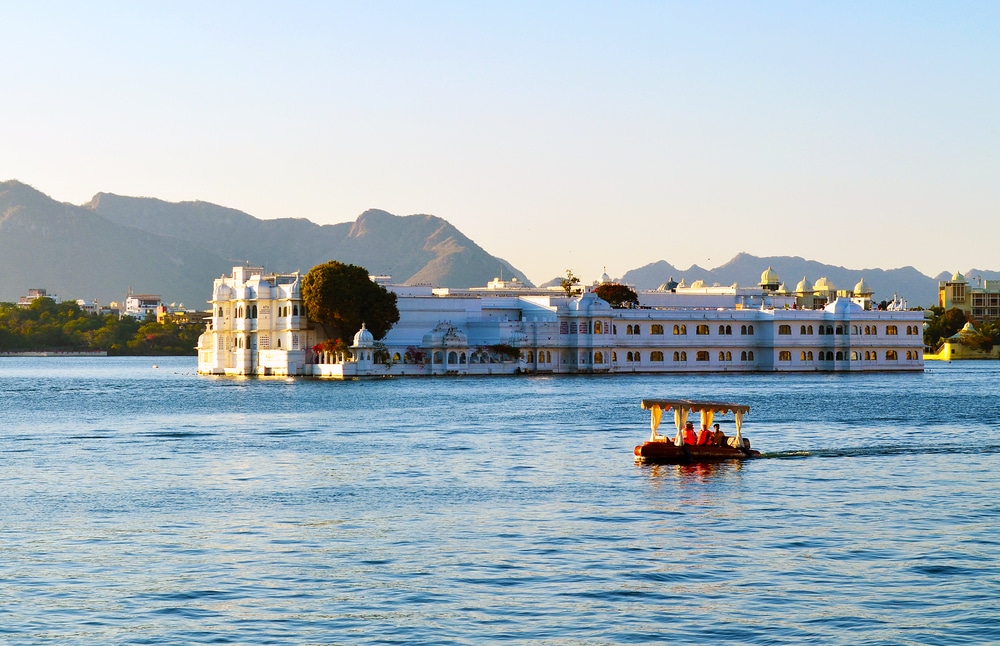
Marketed as one of the most romantic luxury hotels in India, Lake Palace was constructed by Maharana Jagat Singh II of Mewar in the mid-18th century. The palace derives its name from its remarkable location, right in the middle of the enchanting Lake Pichola. The monument can only be reached via a speed boat that operates from a nearby jetty.
50. Ghats and Old City of Pushkar, Pushkar
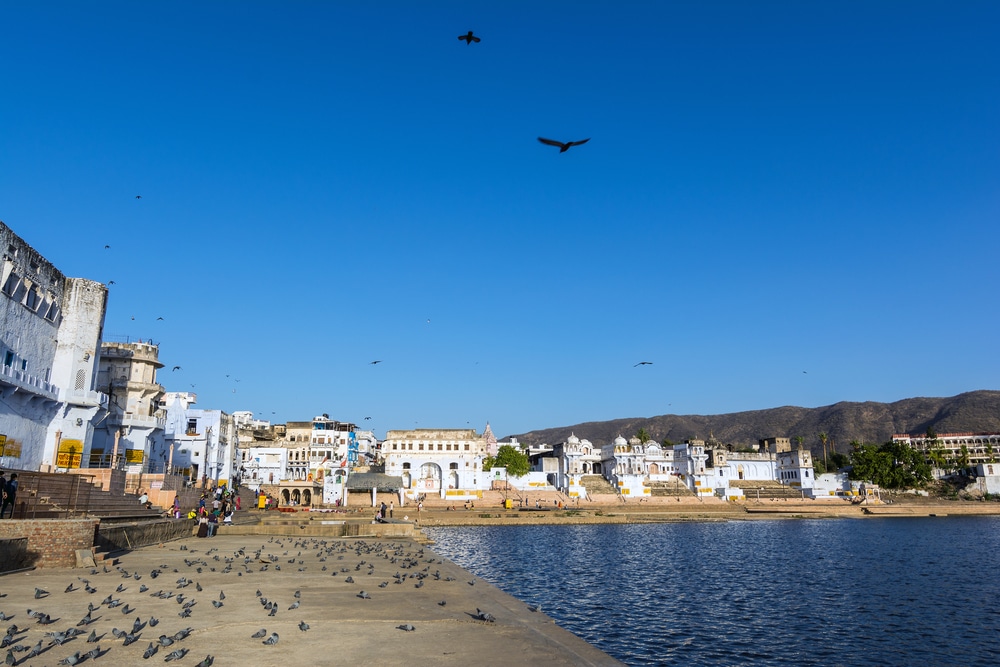
The holy town of Pushkar is one of the most revered places by the Hindus and is often called as the ‘King of pilgrimage sites’. The lake is said to have been created by the blessings of Lord Brahma and the surrounding city is one of the oldest in India. The city of Pushkar is also known for its Brahma temple, one of the few sites in the world dedicated to the Hindu god of creation.
51. Ranakpur Jain Temple, Ranakpur
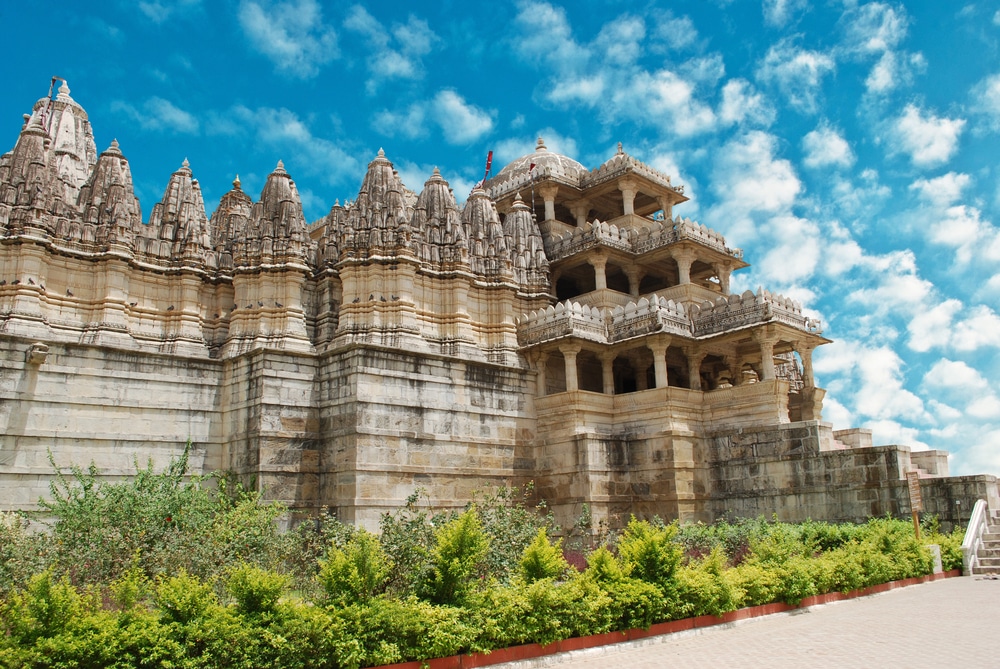
One of the finest examples of the Maru-Gurjara Architecture, The Ranakpur Jain Temple is located in Pali district of Rajasthan. The temple was constructed in 1437, under the patronage of the Maharana of Mewar. The temple is constructed entirely in white marble and adorned with elaborate carvings.
52. Bada Imambara, Lucknow
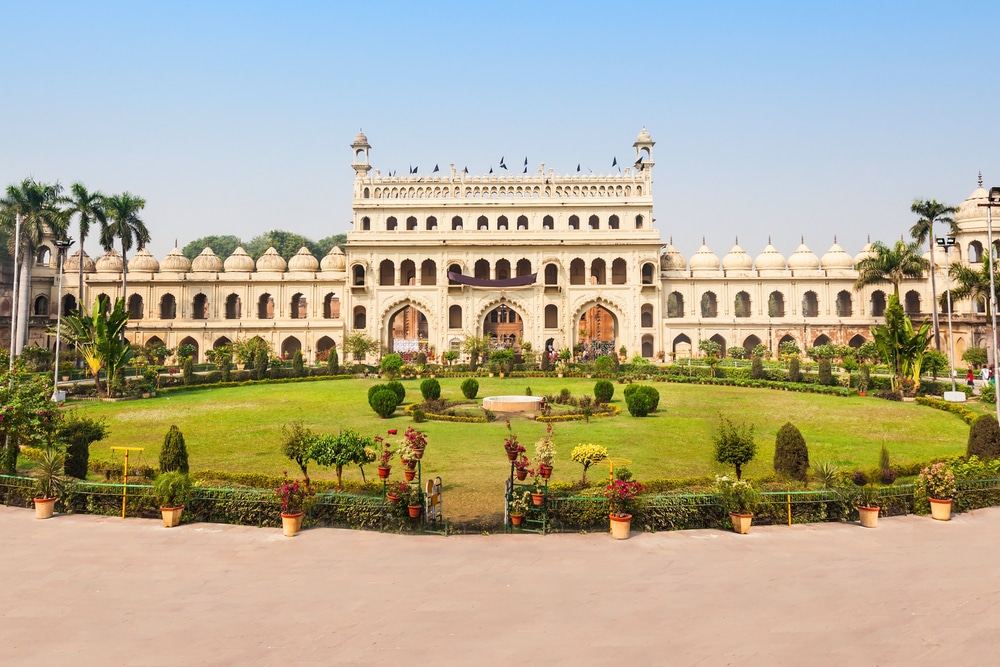
Constructed in the late 18th century, Bada Imambara in Lucknow is one of the largest Shia monuments in India. The construction of the congregation hall was commissioned by the Nawab of Awadh, and reflects a striking Mughal inspired architecture. The monument is also famous for its maze like labyrinth called ‘Bhulbhulaiya’ that contains 489 identical doorways.
53. Fatehpur Sikri, Agra
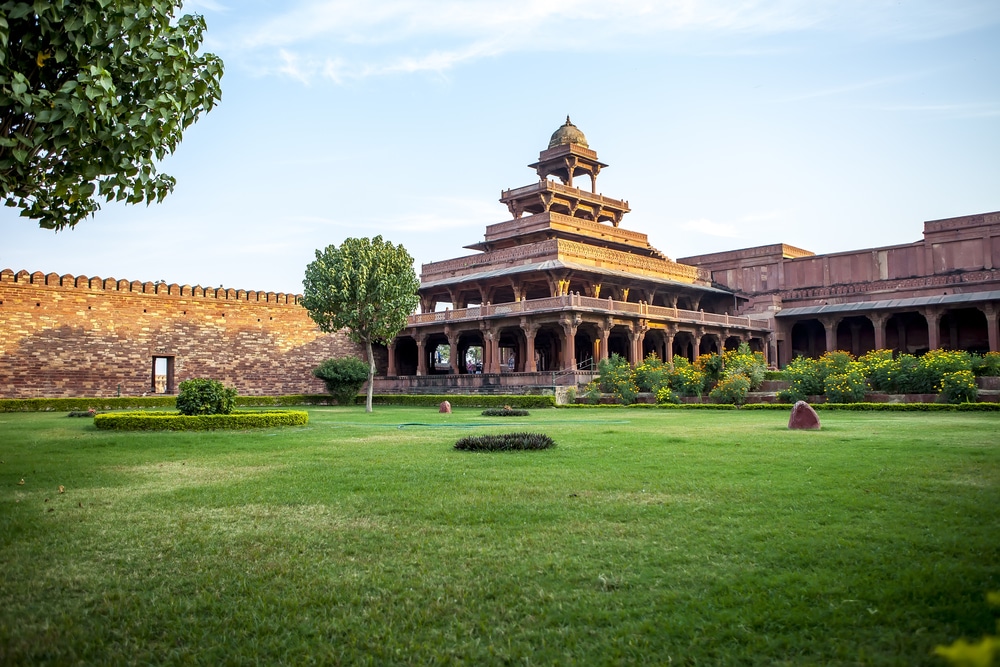
Fatehpur Sikri is a historic town located near Agra in the state of Uttar Pradesh. It was built by the famous Mughal Emperor Akbar as the capital of his empire. The city was abandoned later due to water shortage and fear of invasion by the nearby Rajput states. Nevertheless, the site is one of the best specimens of the Mughal Architecture, which crosses several styles from Indian and Persian styles.
54. Humayun’s Tomb, Delhi
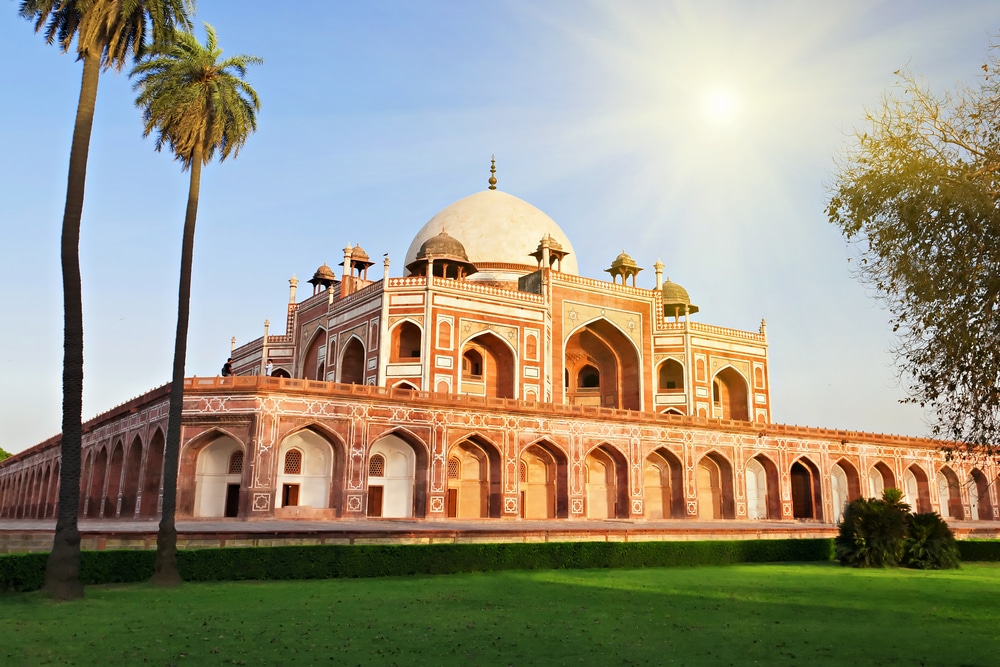
Famous as the architectural precursor to the Taj Mahal, Humayun’s tomb was built in 1572 by the Mughal Empress Beda Begum. The construction of the monument was overseen by Akbar and is one of the first garden mausoleums in India. The design of the tomb incorporates various styles from the Persian, Turkic and Rajput architecture with exquisite work of stone carving and lattice work.
55. The Great Stupa, Sanchi
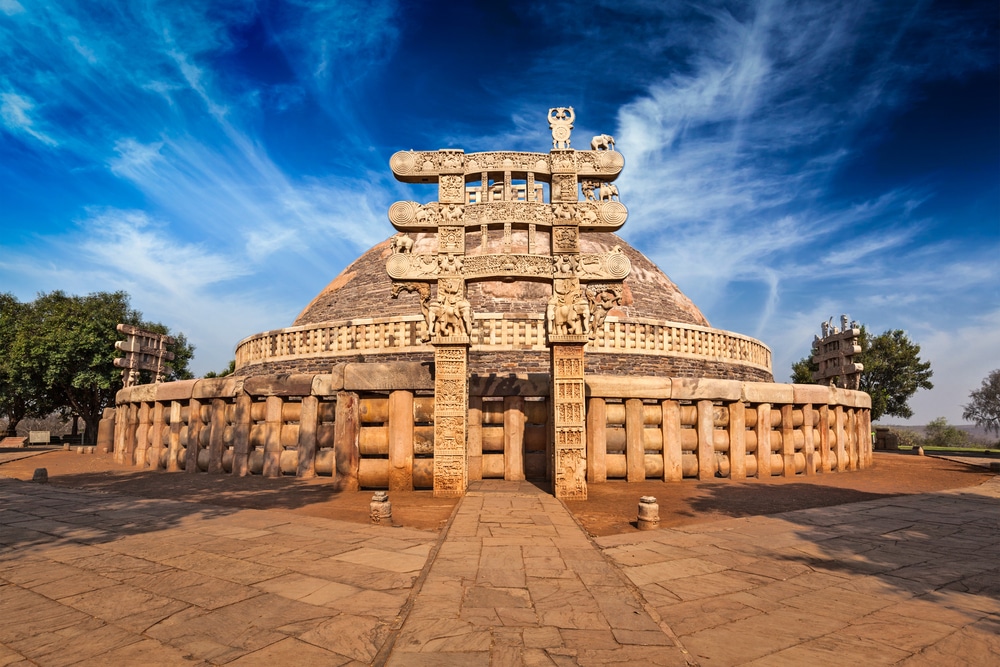
One of the few surviving examples of the Mauryan era buildings, The Great Stupa is located in Sanchi, Madhya Pradesh. Being built over the relics of Lord Buddha, it was also a major pilgrimage site for the Buddhists. It was built during the 3rd century BC by the Mauryan emperor Ashoka and was later expanded by the Shunga and the Satavahana empires that followed.
56. Jantar Mantar Observatory, Jaipur
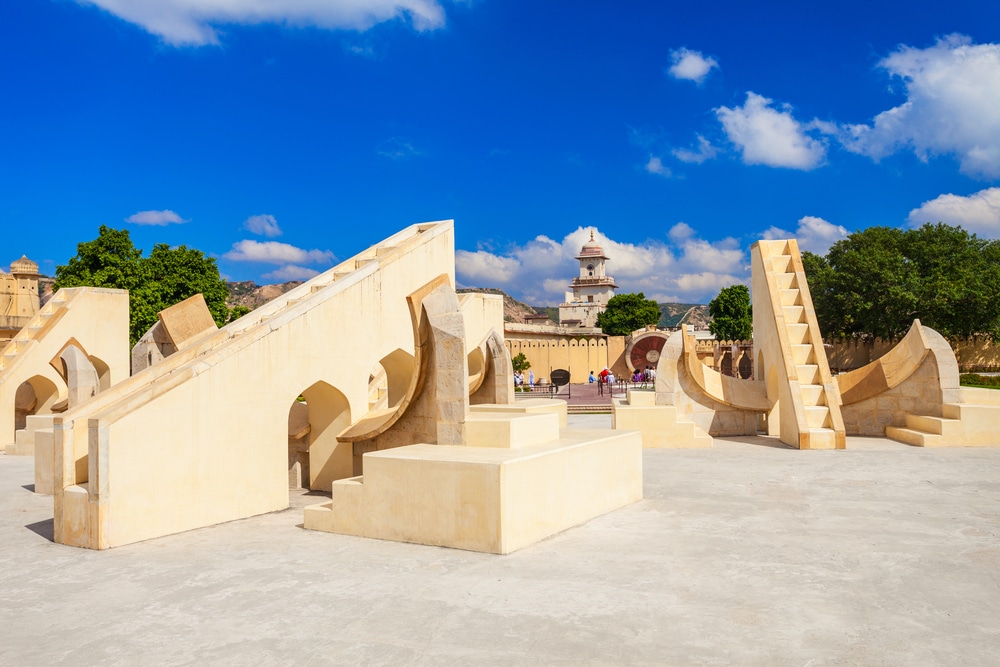
Home to the world’s largest stone sundial, Jantar Mantar in Jaipur is one of the 5 astronomical observatories in India, built by Sawai Jai Singh II of Jaipur. The observatory complex is located in the center of the walled city, close to the City Palace and Hawa Mahal.
57. The Great Living Chola Temples, Thanjavur
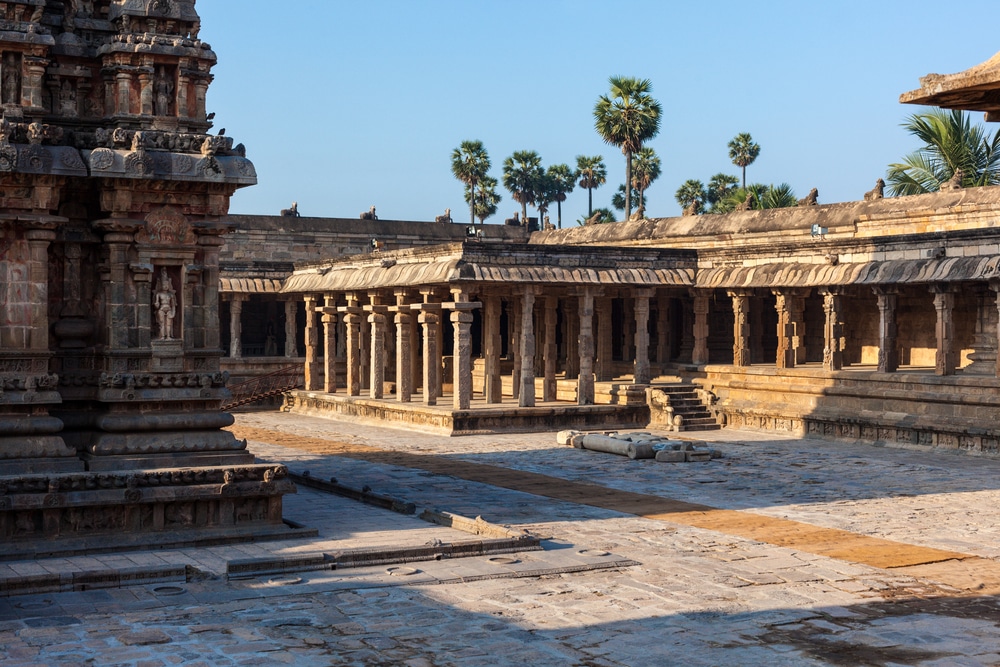
Built during the 11th and the 12th centuries, the Living Temples at Thanjavur are a UNESCO World Heritage Site in Tamil Nadu. The construction of the temples is attributed to the Chola Dynasty who ruled southern India from 200-1246 AD. The temples are dedicated to the Hindu deity Shiva and are remarkable examples of Dravidian architecture.
58. Mahabalipuram, Kanchipuram
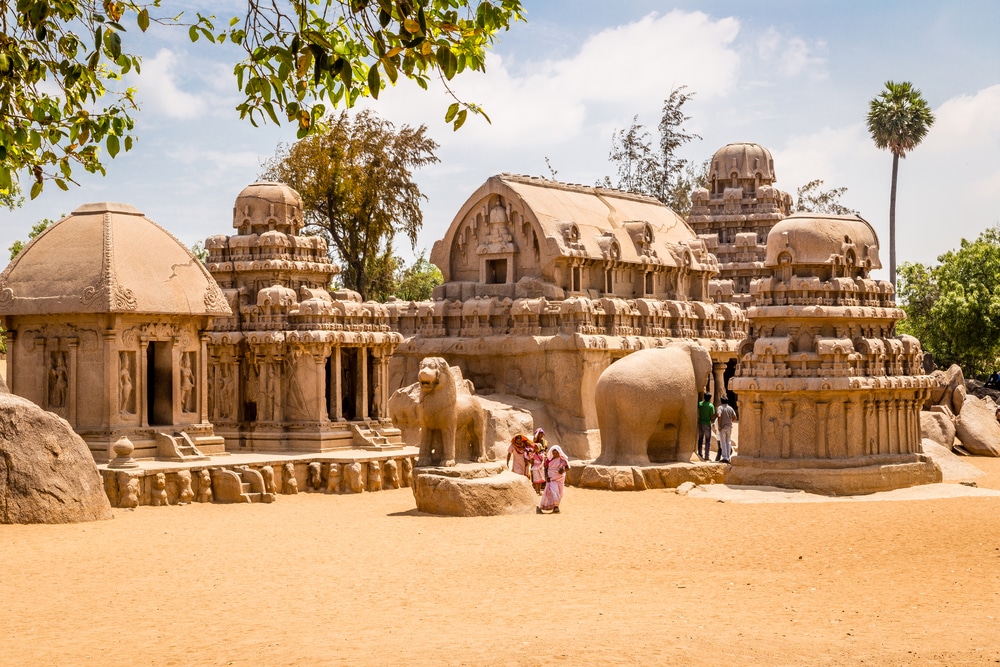
Mahabalipuram is an ancient port city that houses several monuments and buildings from the Pallava Era. The group of monuments is also classified under the UNESCO World Heritage Site and contains various temples, rock-cut sculptures, megaliths and cave temples that date between 1st and 9th century AD.
59. Agra Fort, Uttar Pradesh
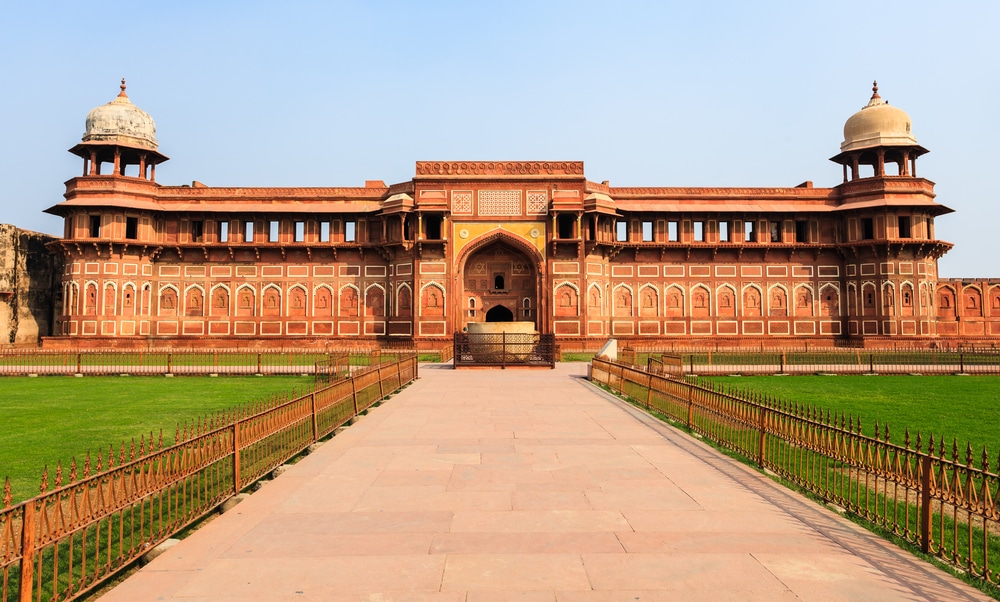
The red fort of Agra (not to be confused with Red Fort of Delhi), was built by the Mughal emperor Shah Jahan after his ascension to the Mughal throne. An older fortified building called the Badalgarh was located at this site and came under the reign of several northern Indian empires such as the Delhi Sultanate, Afghans, Maratha and the Mughals. Agra fort was also the final resting place of Shah Jahan when he was imprisoned by his son Aurangzeb.
60. Cave Temples, Badami
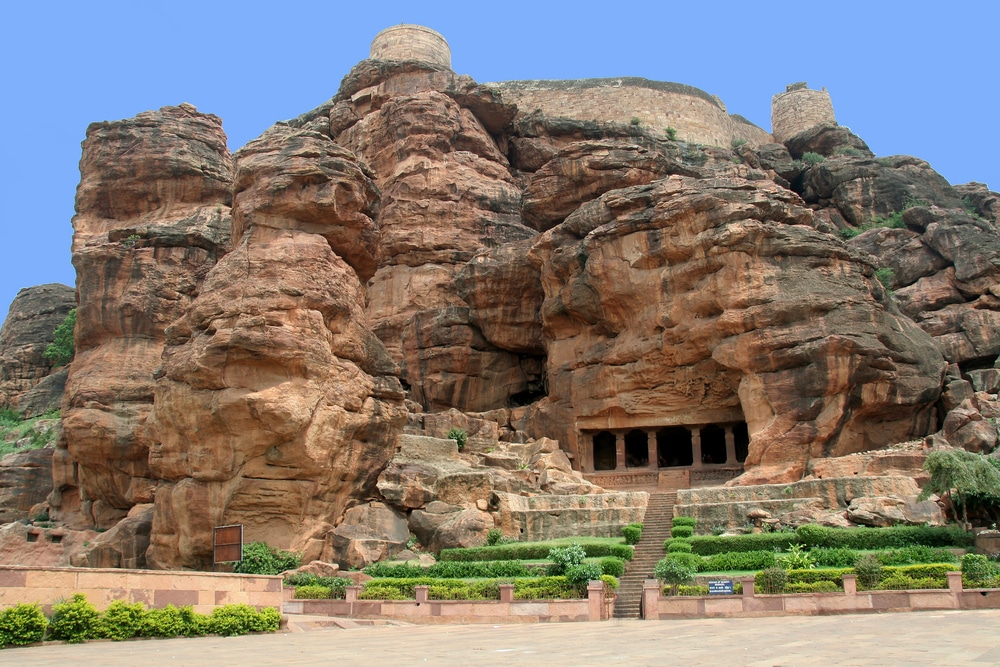
Located in Badami, Karnataka – The cave temples were built during the 6th and the 8th centuries by the Badami Chalukyas. There are 5 cave temples in total, with 3 dedicated to the Hindu holy trinity Brahma, Vishnu and Shiva and the 4th cave is dedicated to Jain traditions. The caves are also a part of UNESCO World Heritage Sites and are a major tourist attraction in Karnataka.
61. Nalanda University, Bihar Sharif
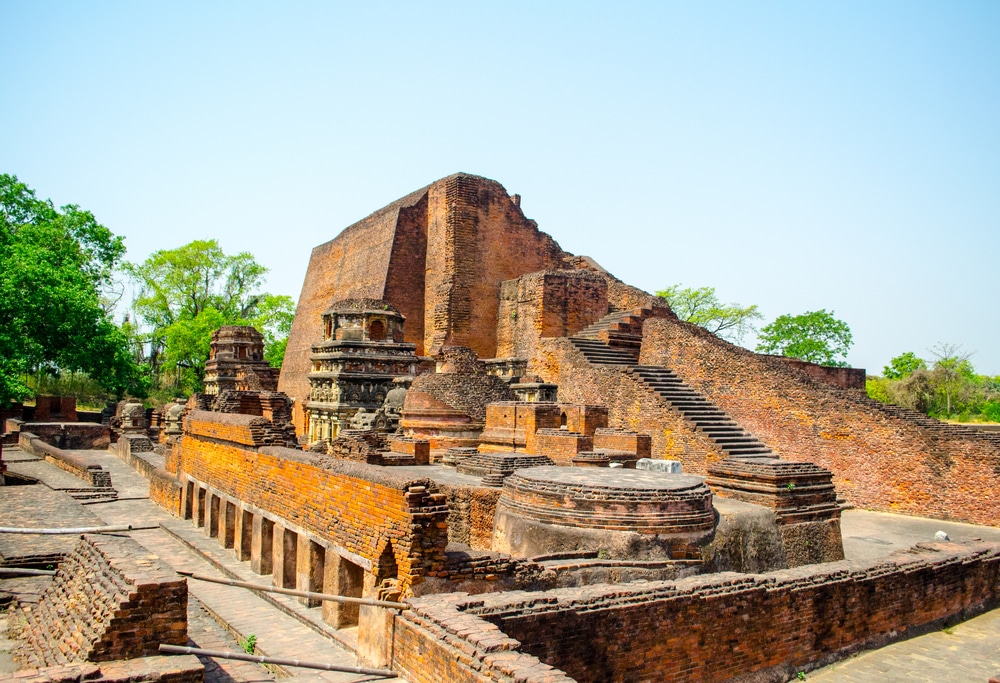
Known to be an ancient Buddhist learning center between the 5th and 12th centuries, Nalanda is one of the Archeological gems of India. The site has been linked with Gautama Buddha, Mahavira and Ashoka and flourished as a center of learning under the Gupta Empire. Unfortunately, the site was desecrated by the Turkic chieftain Bakhtiyar Khilji in the 12th century AD.
62. Junagarh Fort, Bikaner
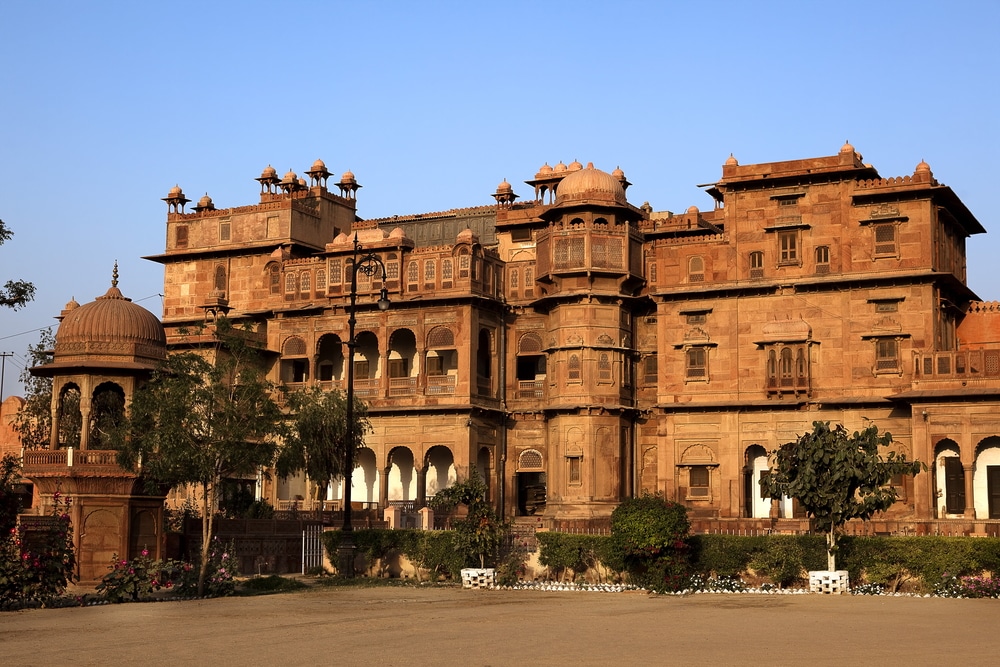
Unlike the other forts in Rajasthan, which are usually built atop a hill, the Junagarh fort is located in heart of the old city of Bikaner. The fort was first built during the reign of Rao Bika who founded the city of Bikaner in the 15th century. It was later refurbished during the British Raj and displays a remarkable Rajput architecture.
63. Cooch Behar Palace, Cooch Behar
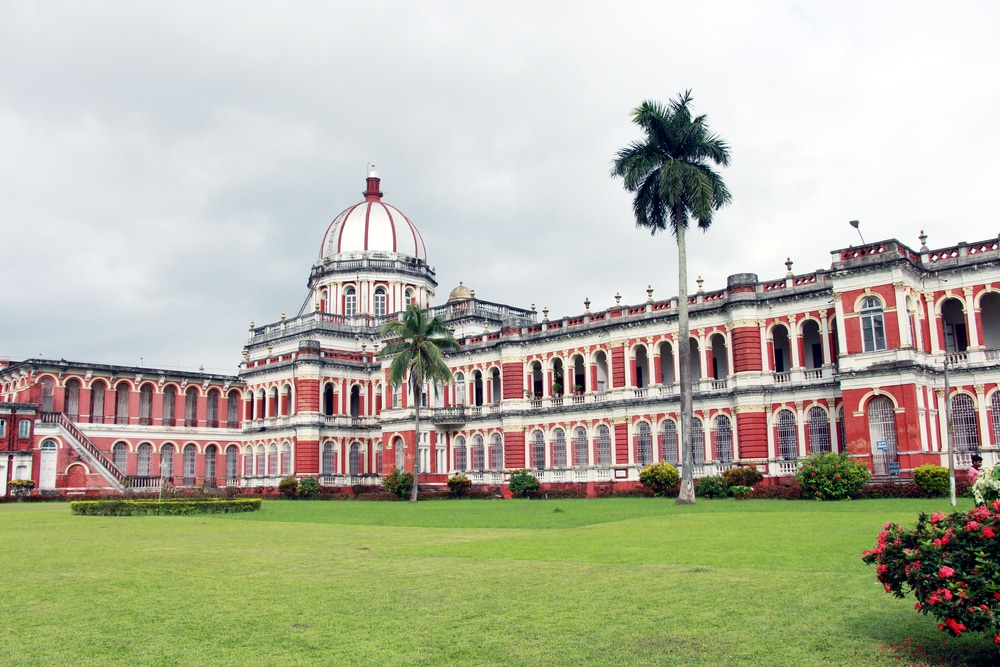
Modeled after the Buckingham Palace of London, the Cooch Behar Palace is located in Cooch Behar, West Bengal. The construction was commissioned by the Maharaja of Cooch Behar in 1887. Despite of being an Indian palace, the building is known for its elaborate renaissance style architecture.
64. Nizamat Imambara, Murshidabad
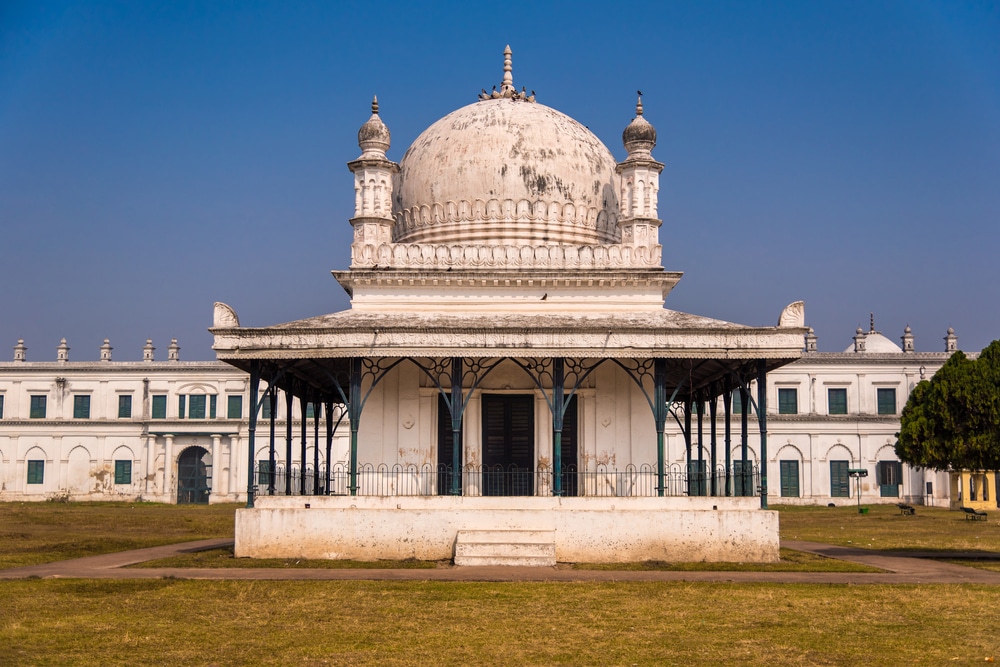
The largest Shia congregation hall in India, Nizamat Imambara was built by the Nawab of Bengal during 1847 in Murshidabad. The building was constructed atop an older Imambara, which was destroyed by a fire in 1846. The building’s design speaks of a fine cross between Islamic and European styles.
65. Belur Math, Belur
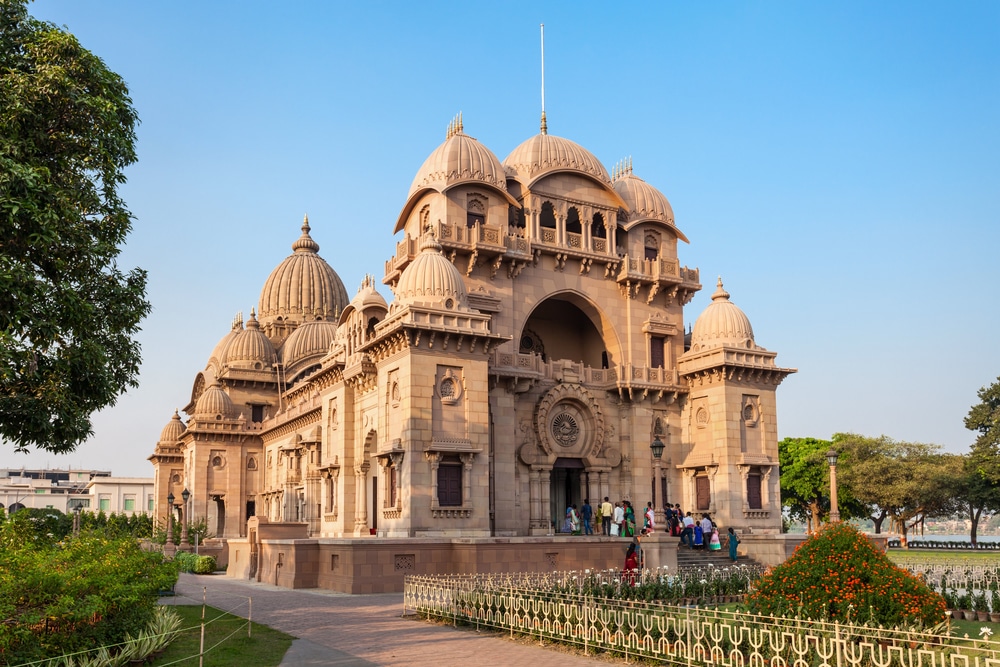
Marvelously combining artistic elements from Hindu, Islamic and European traditions, Belur Math is also the headquarters of the Ramakrishna Mission. It was founded by Swami Vivekananda and is one of the most important institutions for spiritual learning.
66. St. Paul’s Cathedral, Kolkata
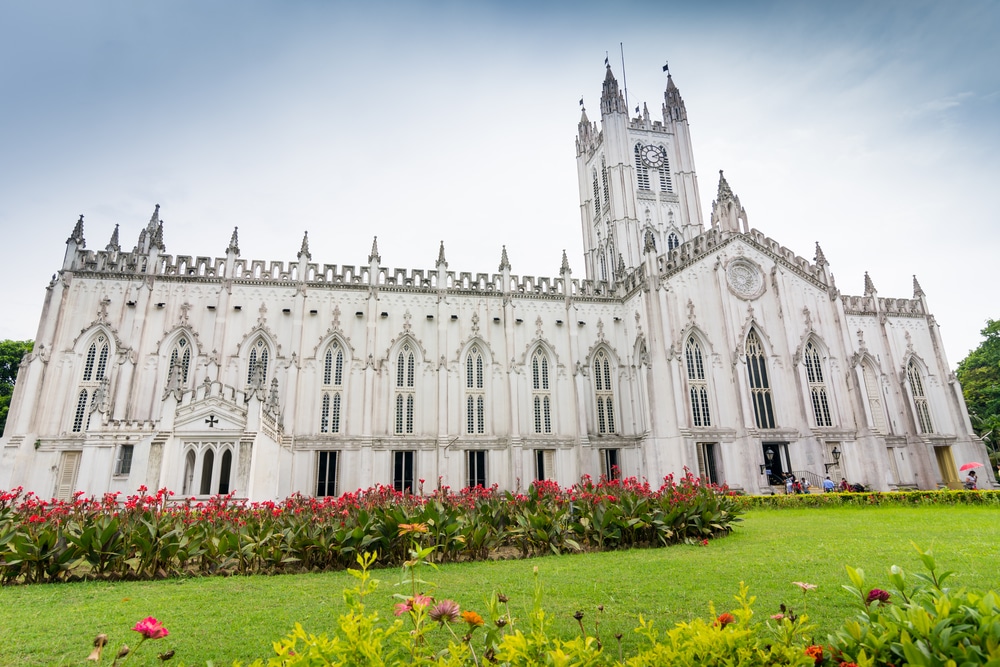
The Angelical St. Paul’s Cathedral was built in 1847 and displays a remarkable Gothic Revival architectural design. The building suffered massive damage during an earthquake in 1934 and was rebuilt with a new design. The church’s construction is attributed to the British rule in Calcutta and is perhaps one of the few buildings with Indo-Gothic Architecture.
67. Akbar’s Tomb, Agra
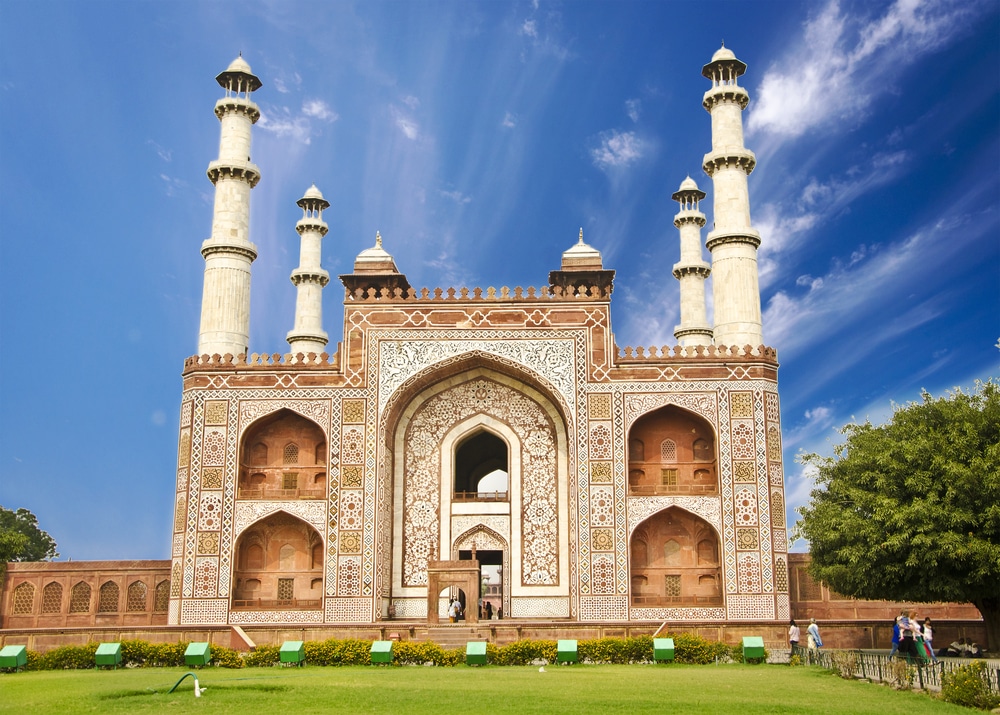
Known to be the final resting place of the Great Mughal emperor Akbar was constructed during 1605 and was completed in 1613. The construction was started by Akbar himself and was finished by his son Jahangir who succeeded him as the Mughal Emperor. The design is very much similar to the Buland Darwaza, which is the main entrance of Fatehpur Sikri.
68. Chota Imambara, Lucknow
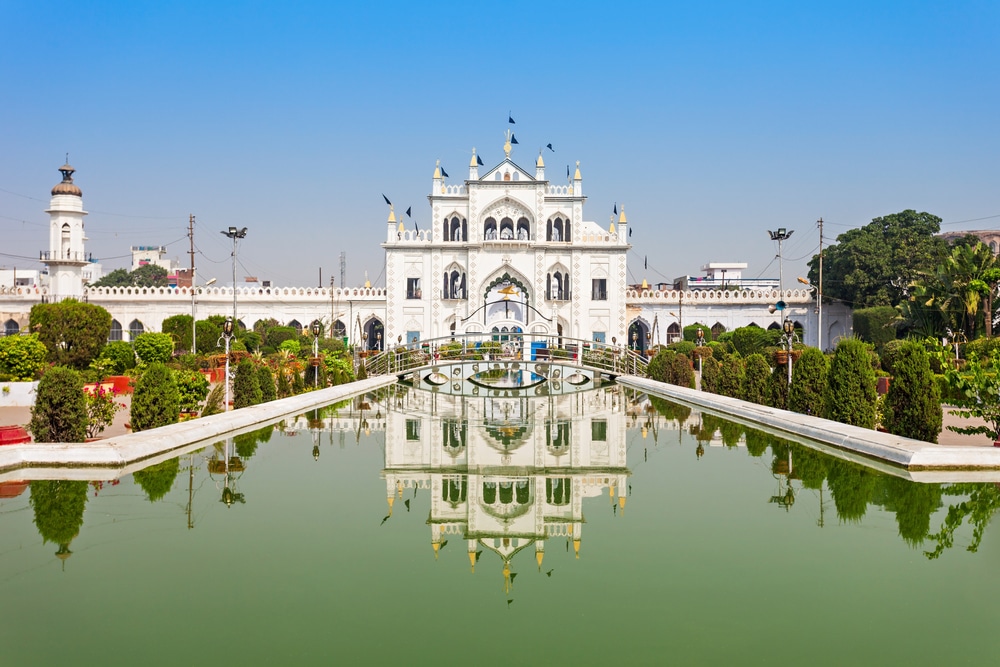
Also known as, Hussainabad Imambara, the Chota Imambara was built by the Nawab of Awadh and is located in Lucknow. Located in close proximity to the larger Bara Imambara, the Chota Imambara is also referred to as the Palace of Lights due to its gilded dome and enchanting decorations during Muharram.
69. Sundarbans National Park, South 24 Parganas
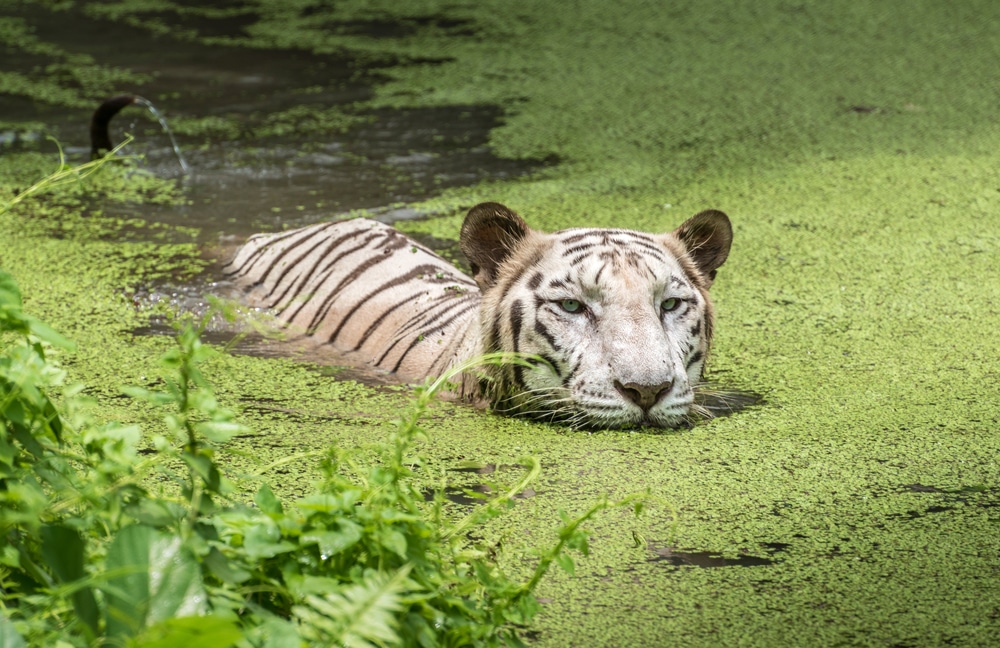
With an area of approximately 1,330 sq kilometers, the Sundarbans National Park is one of the major habitats of the Bengal Tiger and a large number of wildlife and plant species. The terrain at Sundarbans mostly comprises of deltas and river channels covered with mangrove forests. The forests of Sundarbans are also known for a teeming population of saltwater crocodiles.
70. Makkah Masjid, Hyderabad
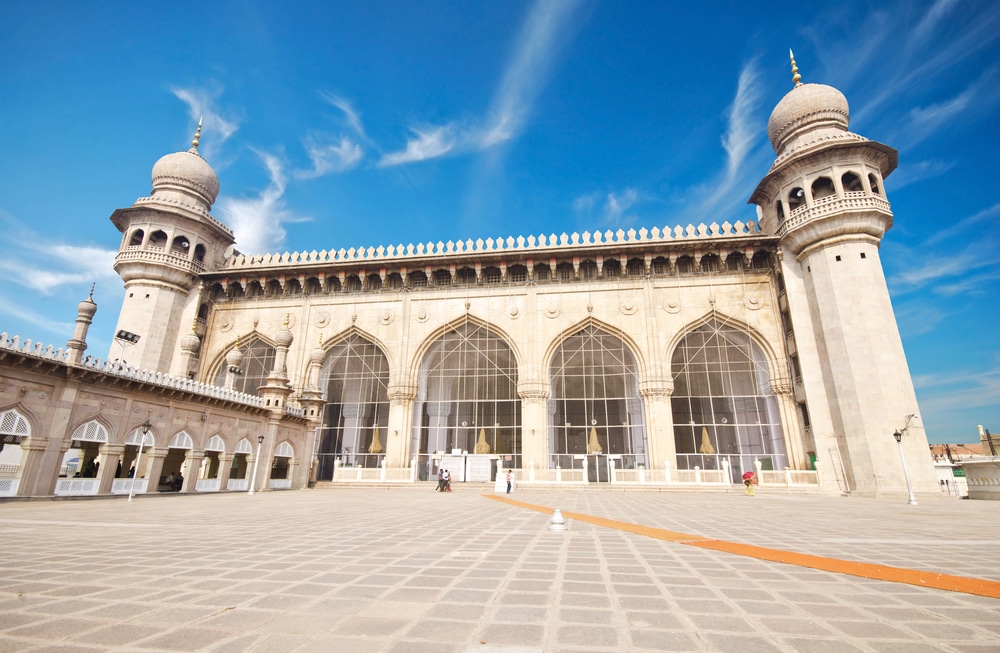
One of the oldest mosques in Hyderabad and India, the Makkah Masjid is also one of the largest Islamic centers of worship in India. The bricks of the mosque are said to have been built with the soil brought by the rulers of Qutub Shahi Dynasty. The construction was completed in 1694 and is built in a highly ornamental Indo-Islamic style.
71. Ramanathaswamy Temple, Rameswaram
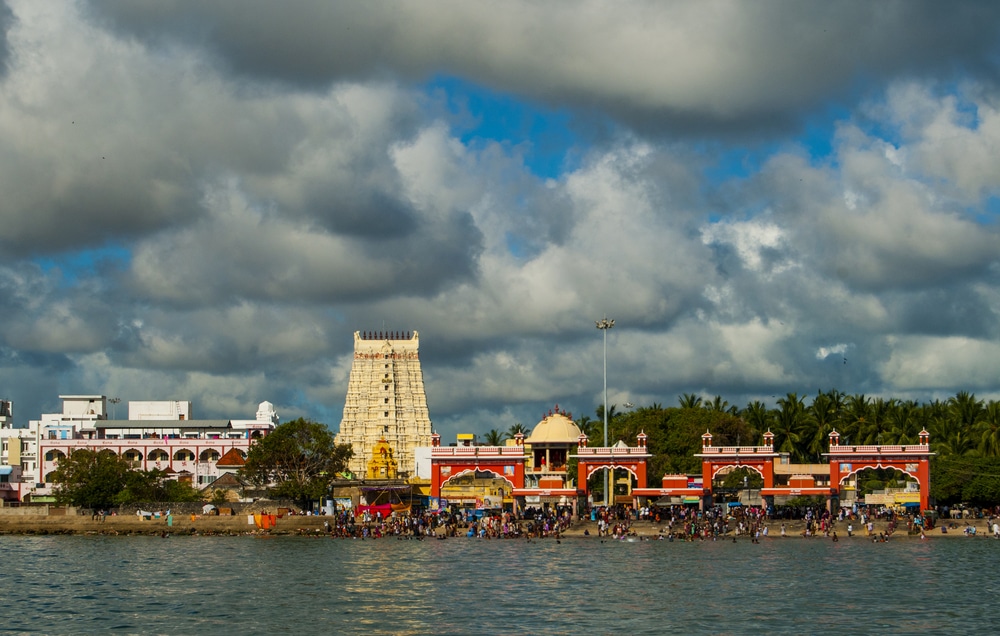
Dedicated to the Hindu deity Shiva, the Ramanathaswamy Temple also houses one of the 12 Jyotirlingas in India. The temple is believed to mark the site where Lord Rama prayed to Lord Shiva following his victory against Ravan, the demon king of Lanka. The temple is also famous in Rameswaram for its long corridors with more than 1200 pillars.
72. Basilica of Our Lady of Good Health, Velankanni
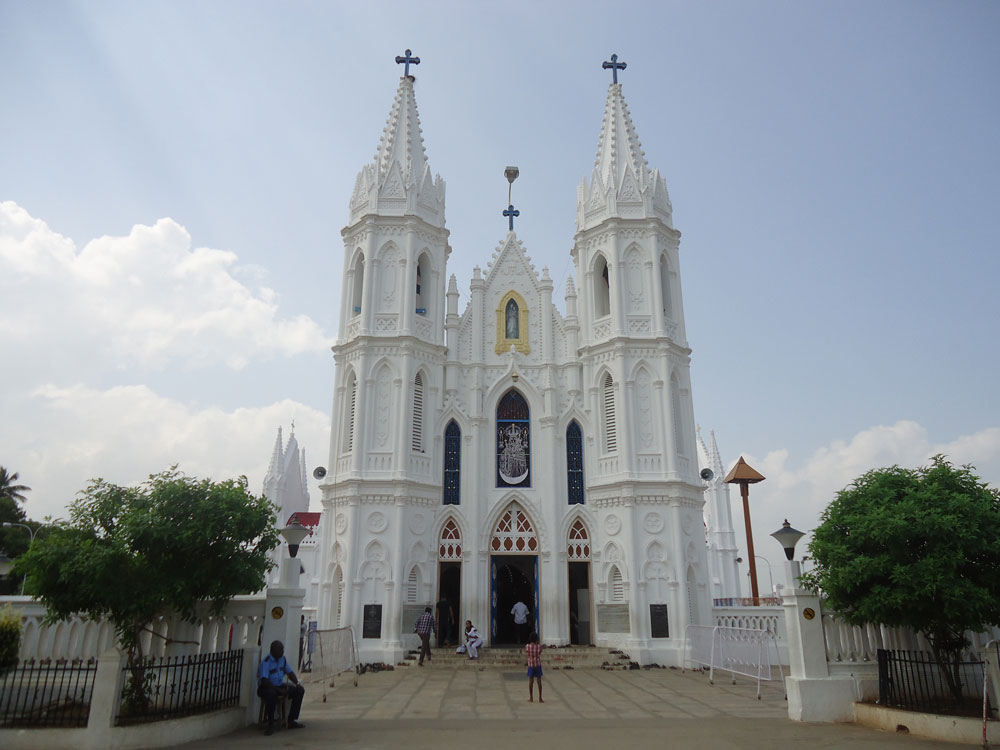
The Roman Catholic Basillica is located in Velankanni, Tamil Nadu and is also nicknamed the ‘Lourdes of the East’. Several reports of supposed miracles have been attributed to this place, especially during the 16th century making it a major pilgrimage center for the Christians in India. The church is built with a remarkable gothic architecture, which was only added during the 20th century.
73. Marina Beach, Chennai
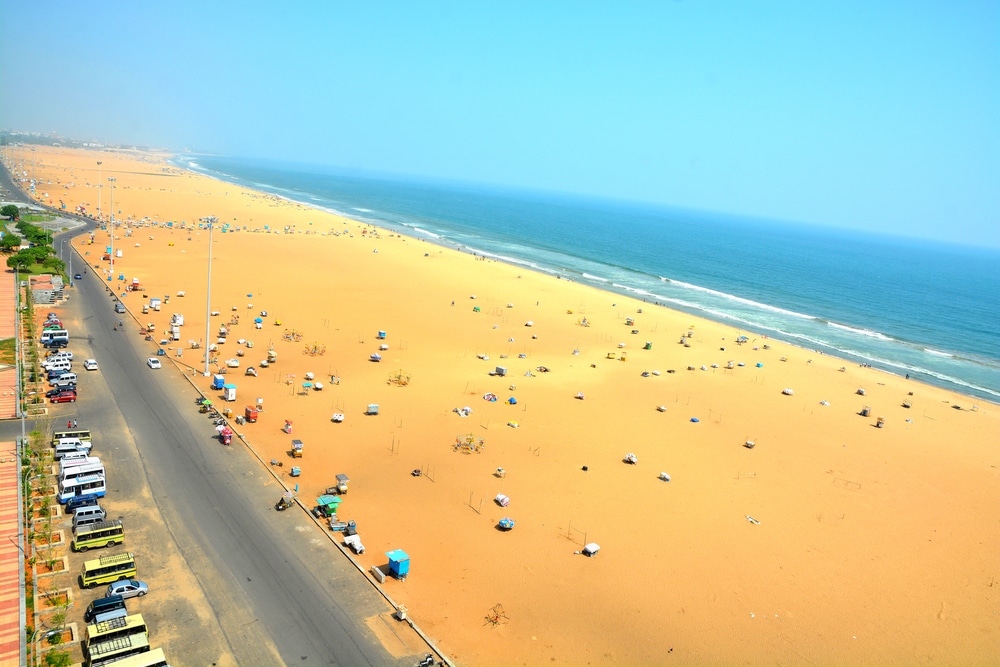
One of the longest beaches in the world, the Marina Beach is a major tourist attraction in Chennai and sees thousands of visitors on a daily basis. The beach was developed only after the construction of the Madras Harbor in 1881, when the British Governor of Madras commissioned the construction of a promenade near the shoreline.
74. Gagron Fort, Jhalawar
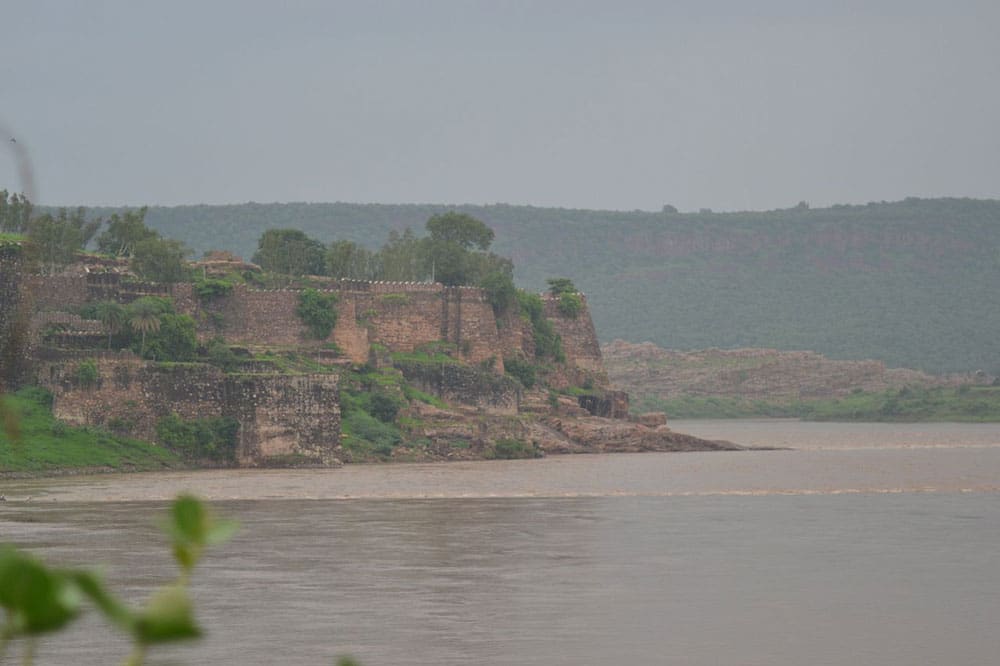
Bounded on three sides by Rivers, the Gagron Fort is also a UNESCO World Heritage site and is located in Jhalawar district, Rajasthan. The fort was constructed by the chieftains of the Doda Rajput clan in the 8th century but was conquered numerous times by various monarchs until it was granted as a gift to the Maharaja of Kota by Aurangzeb.
75. Sariska Tiger Reserve, Alwar
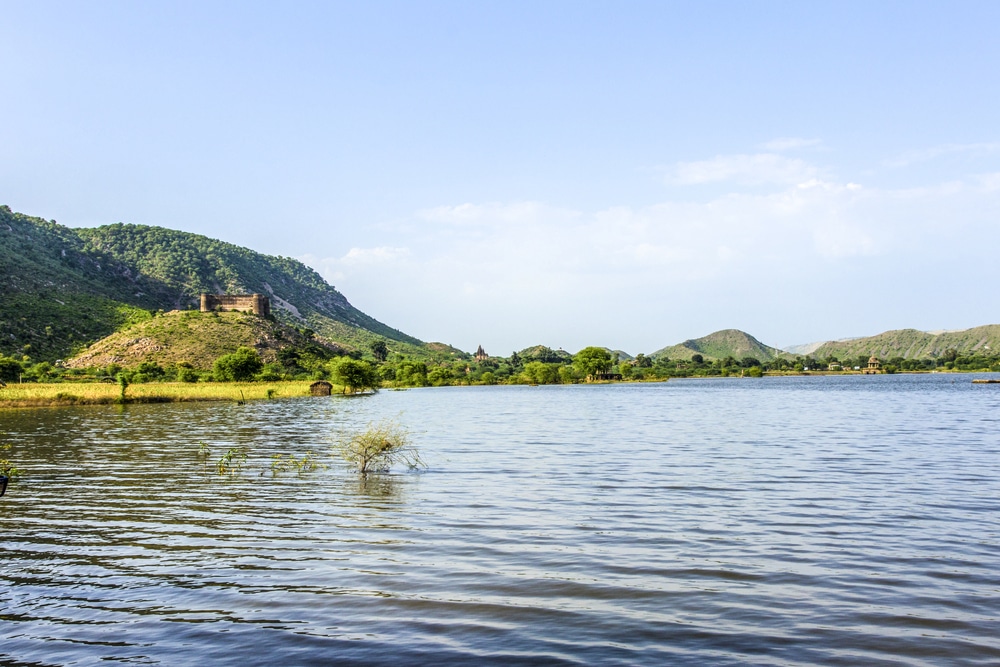
Located near the foot hills of the Aravalli Range, The Sariska Tiger Reserve is famous for its population of the Bengal Tiger and other wildlife species. It is also home to the Sariska Palace, which was used as a hunting lodge by the Maharaja of Alwar. The forested area also contains other attractions such as Pandupol temple and the Kankwadi Fort.
76. Gateway of India, Mumbai
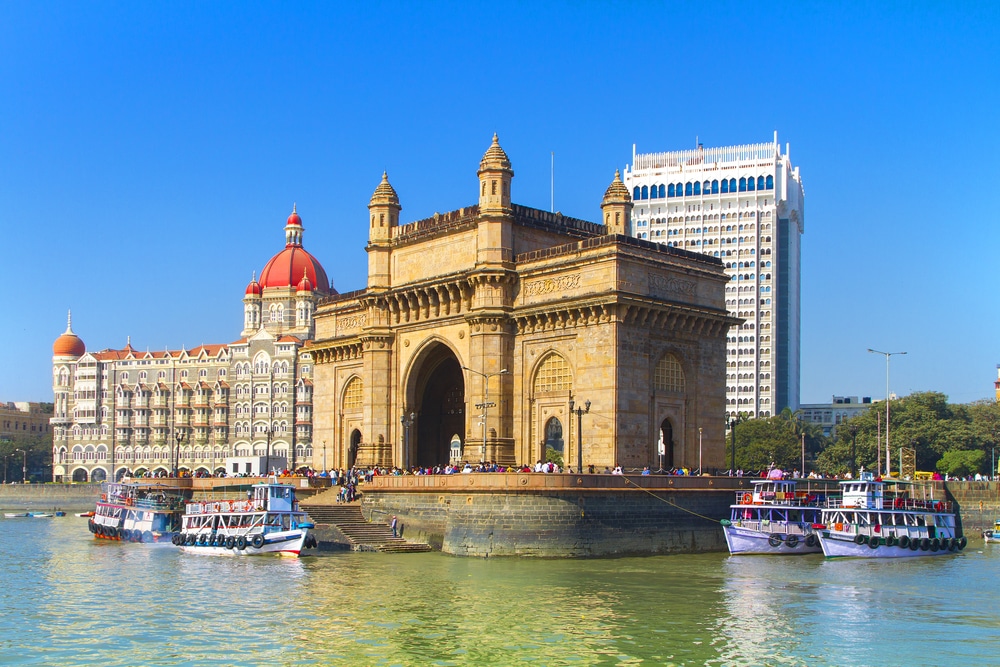
The Monument was built during the British Raj in India to mark the visit of King George V and Queen Mary in 1911. The design of the building crosses elements from the Hindu and Mughal Architecture with European elements. The 26 meters tall gateway is located at the tip of the Apollo Jetty and is one of the prominent buildings to be seen while entering India by Sea.
77. Kumbhalgarh Fort, Rajsamand
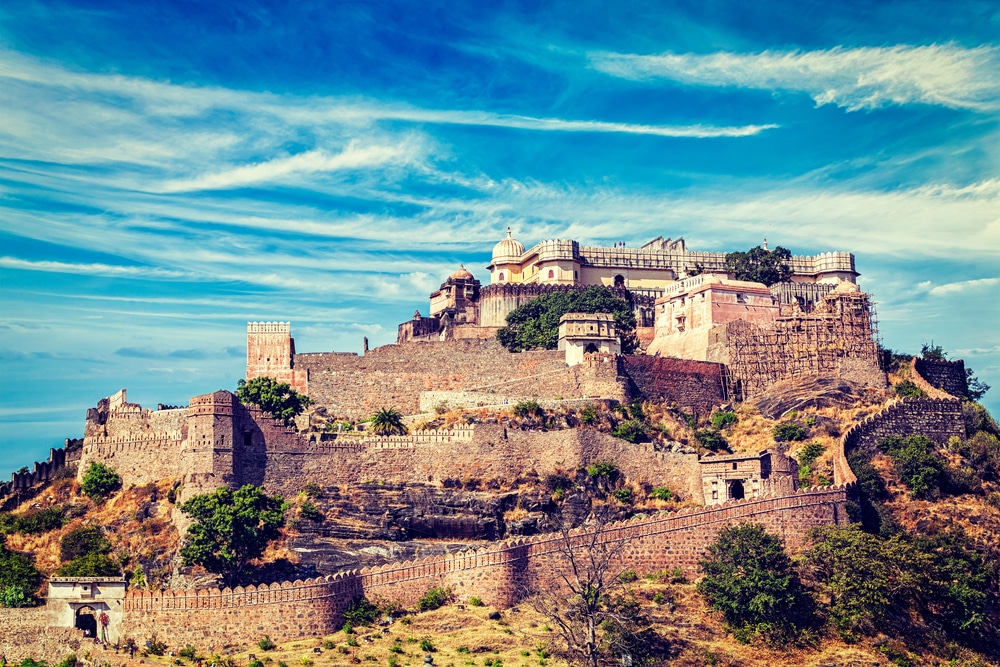
Bound by the second largest wall after the Great wall in China, the Kumbhalgarh Fort is a UNESCO World Heritage Site built during the 15th century. The fortified complex was established by Rana Kumbha the Chieftain of the Sisodiya Rajputs who ruled Mewar. The fortress contains more than 300 temples, surrounded by 36 kilometer long wall that are around 15 feet in width and is often nicknamed as ‘The Great Wall of India’.
78. Ranthambore National Park, Sawai Madhopur
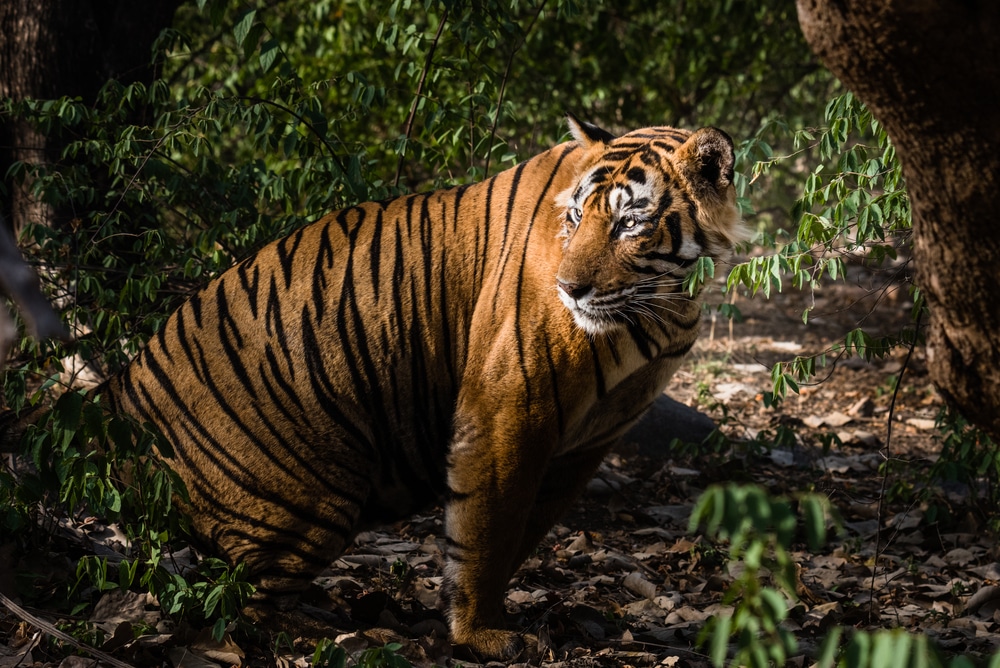
Known for its teeming population of highly camera friendly Tigers, the Ranthambore National Park is situated in the Sawai Madhopur district of Rajasthan. It is surrounded by the Chambal and the Banas rivers and contains the historic fort of Ranthambore built during the 10th century. The forests were used for game hunting by the royal families of Jaipur before they were declared a protected area after the Indian independence in 1947.
79. Mehrangarh Fort, Jodhpur
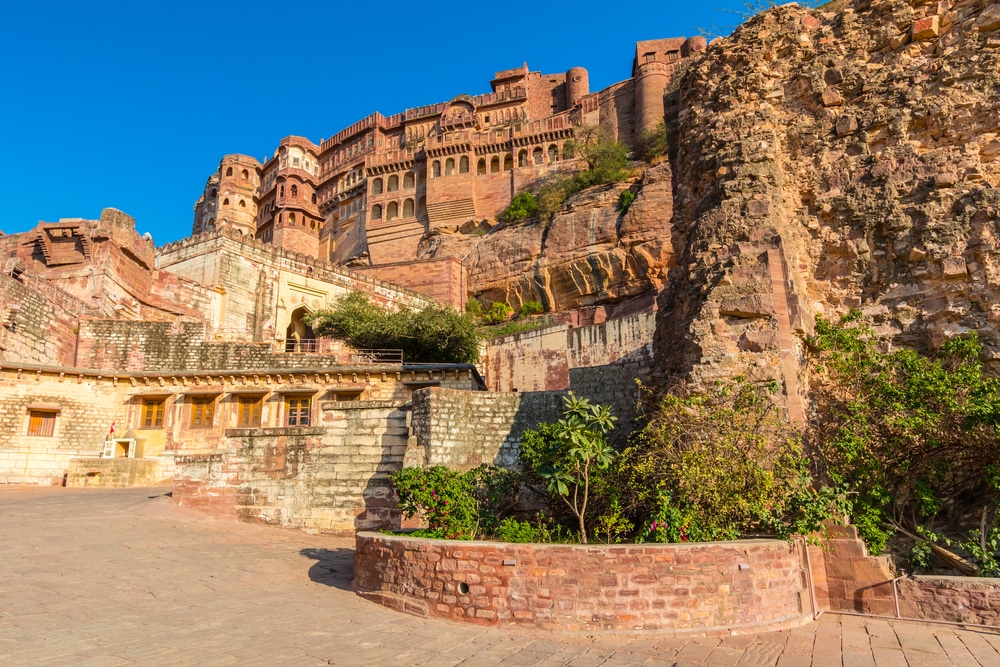
Built in 1459 as the new capital of Marwar, The Mehrangarh Fort is located atop a hill, right above the historic city of Jodhpur. The fortress is one of the few, which never fell to the invading armies and is exemplary of the imperial might of the Rathore Rajputs. The thick walls of the fort also contain several palatial structures that contain a plethora of artifacts, weapons, armor and paintings.
80. Munnar Hills, Idukki
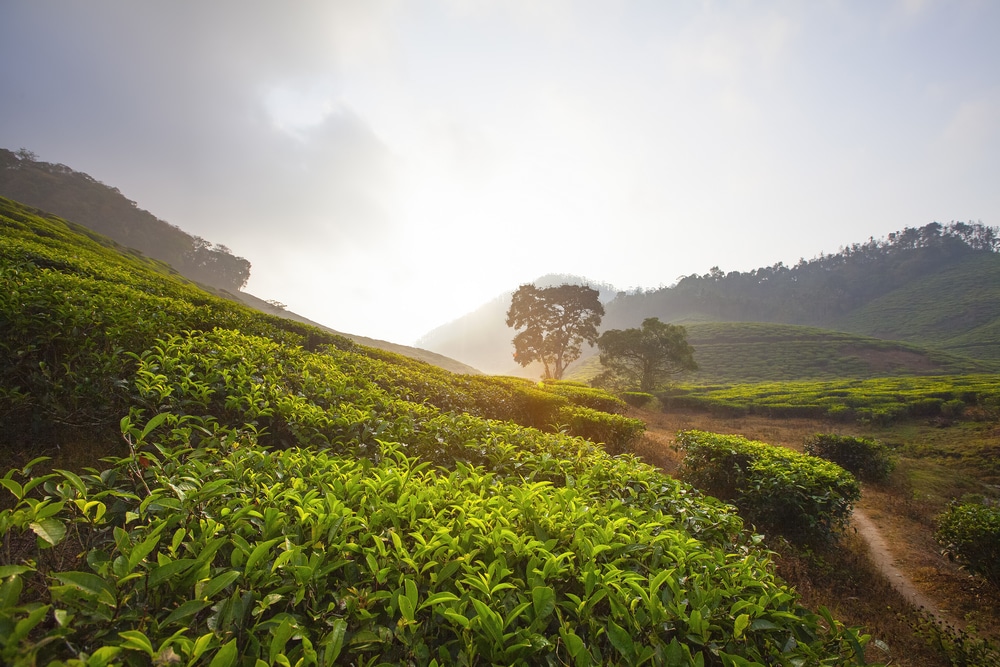
The green hills of Munnar are located in the Idukki district of Kerala amidst the Western Ghats Mountains. Placed at an elevation of approximately 1,600 meters above sea level, Munnar is a major hill station in Kerala. The hill town is known for its sprawling green hills, covered with tea and spice plantations.
81. Loktak Lake, Moirang
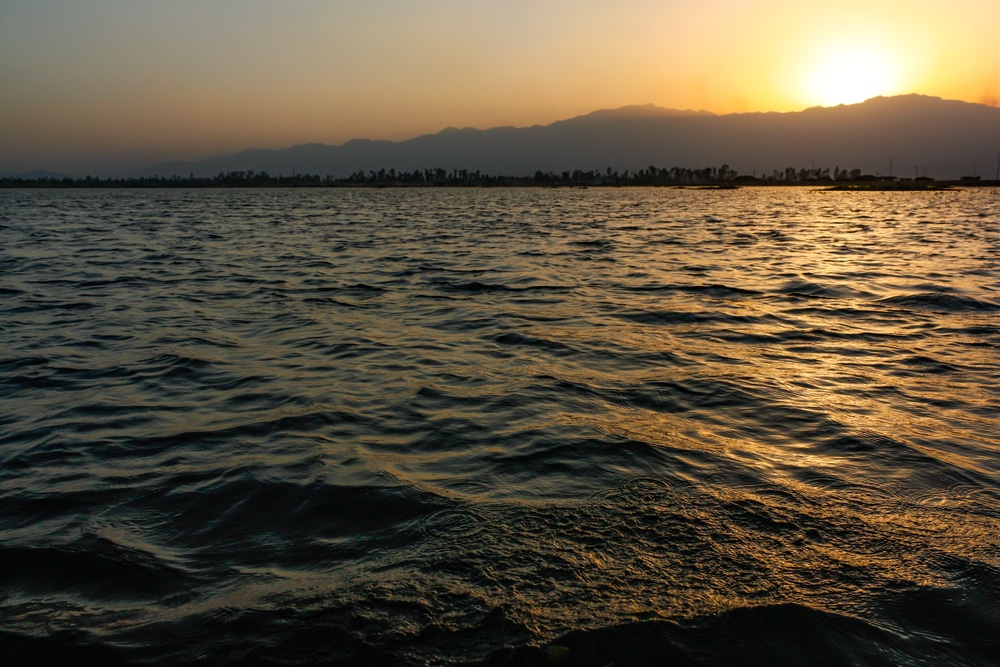
Loktak Lake is situated near the town of Moirang in Manipur and is the largest freshwater lake in North-Eastern India. The lake is known for its several floating islands including the largest, which is home to the Keibul Lamjao National Park. The nature reserve is not only known for its scenic locations, but also houses several wildlife and plant species.
82. Kodaikanal Lake, Kodaikanal
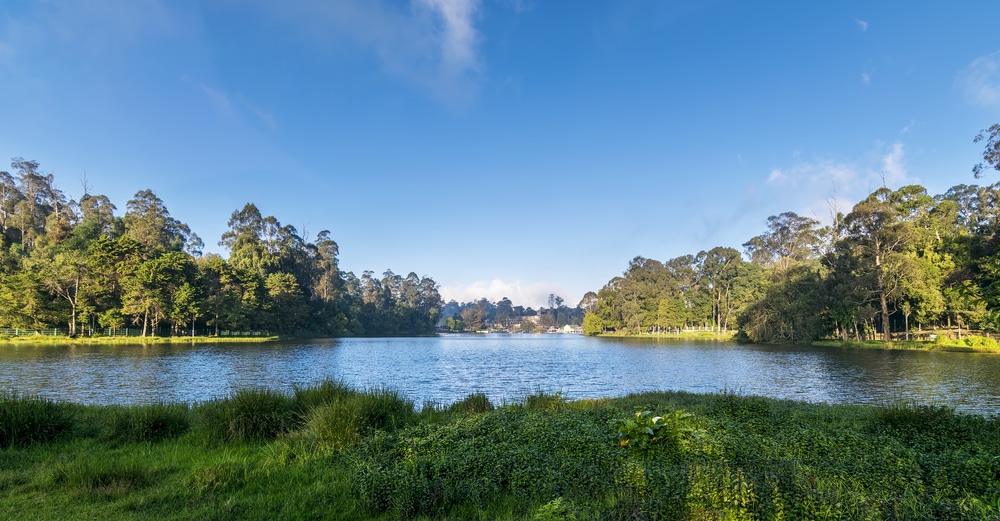
The lake is located in the heart of the scenic hill town of Kodaikanal and serves as a major tourist attraction in Kodaikanal. The construction of the lake is attributed to the former collector of Madurai Sir Vere Henry Levinge, who commissioned the construction in 1863. The lake’s precincts contain a ferry and boat service, a boat club and regular flower shows and exhibitions are conducted here.
83. Nainital Lake, Nainital
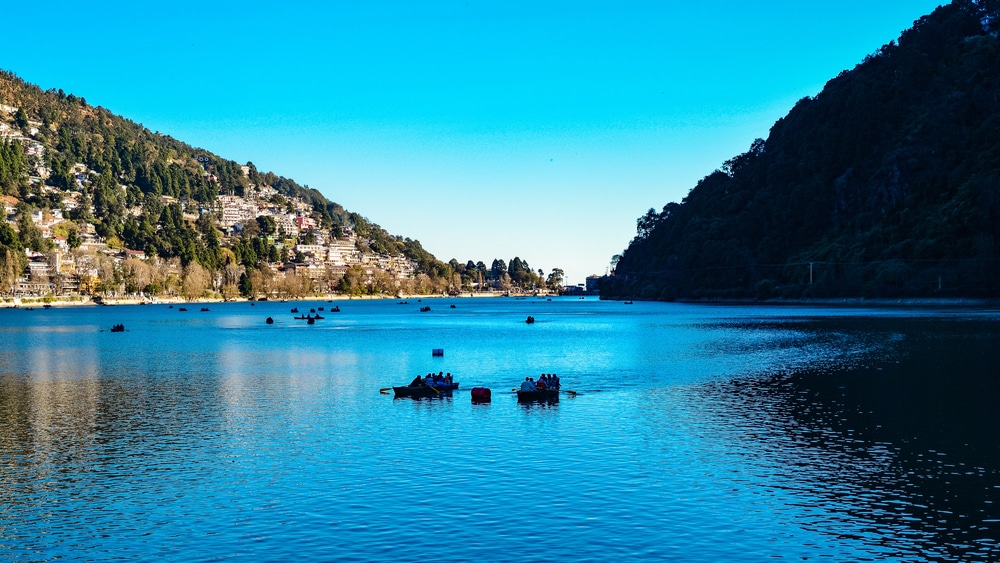
Nainital Lake is located in the Nainital District of Uttarakhand and serves as the major tourist attraction in the hill town. One can engage in a number of activities such as boating, Yachting and various exhibitions and festivals that are organized near the banks of the Nainital Lake.
84. Jaigarh Fort, Jaipur
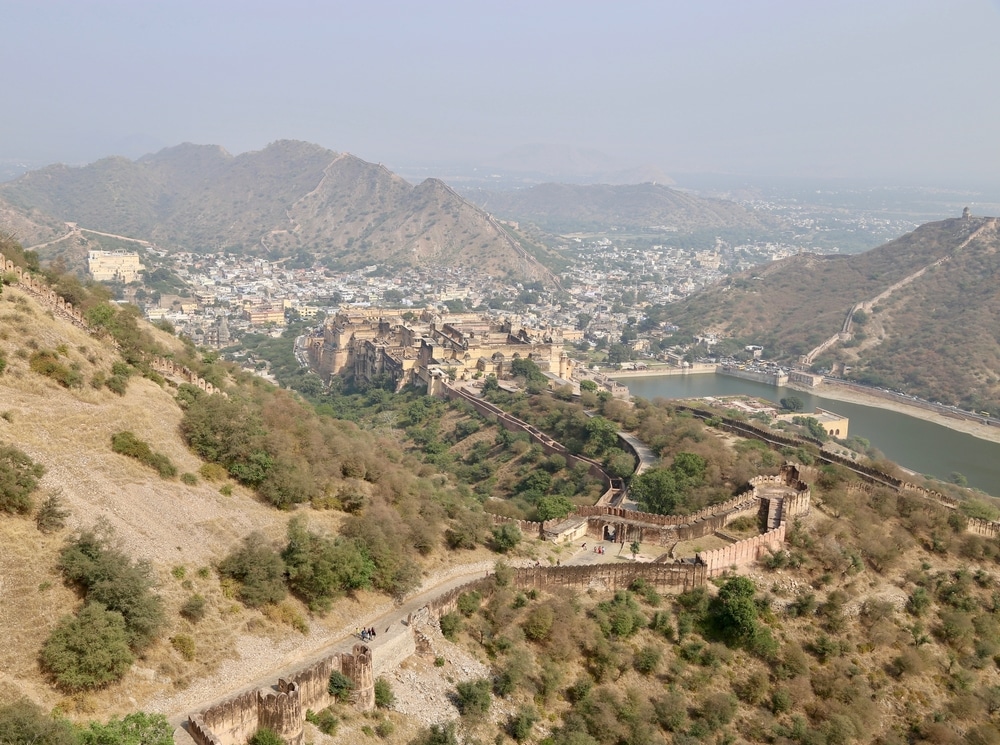
Housing the world’s largest cannon on wheels, the Jaigarh Fort was built in 1726, by Sawai Jai Singh II of Jaipur. The construction of the fort was done in order to protect the Amber fort from the invading army and is located 400 meters above the Amber palace. The fortress also served as a cannon foundry for the Rajputs and Mughals and also houses a beautiful garden and a museum.
85. Jim Corbett National Park, Nainital
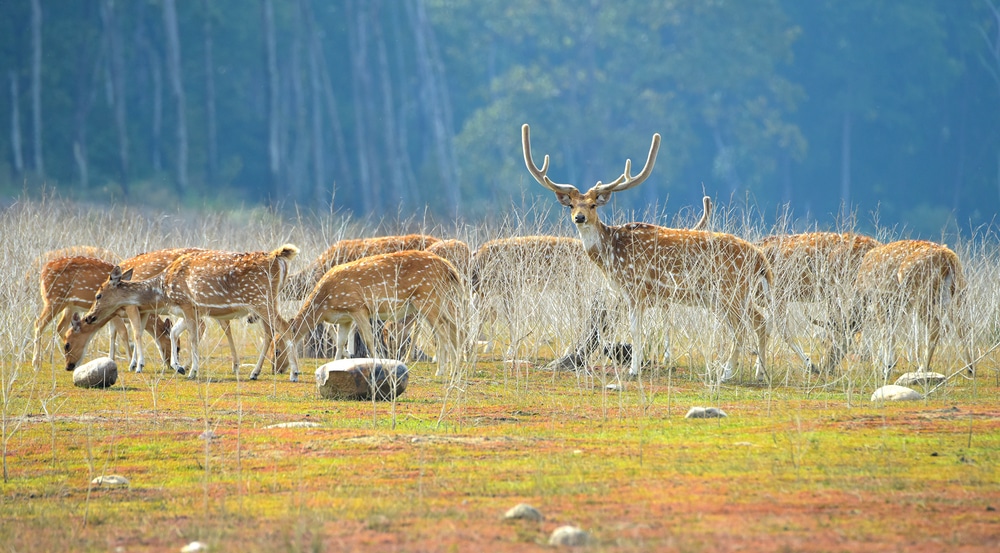
Jim Corbett National Park is the oldest protected regions in India and is a major stronghold of the Bengal Tiger. Located in Nainital, Uttarakhand the Jim Corbett National Park was established in 1936 and is openly funded by the World Wildlife Fund and is famous for its vast species of flora and fauna.
86. Dharamshala, Kangra
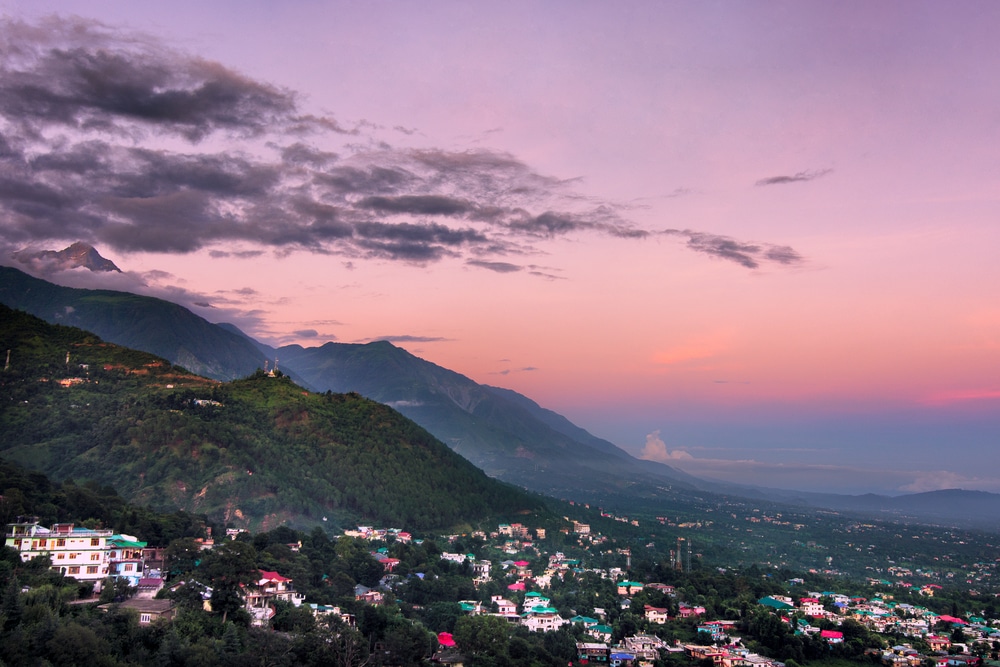
Located in Kangra district, Himachal Pradesh, Dharamshala is the seat of the Dalai Lama and also the headquarters of the Tibetan Government in exile. A majority of the population here belongs to the Tibetan exiles and hence is also known as mini Tibet. The town contains several monasteries, scenic views of the Himalayas and various other tourist attractions.
87. Laxmi Vilas Palace, Vadodara
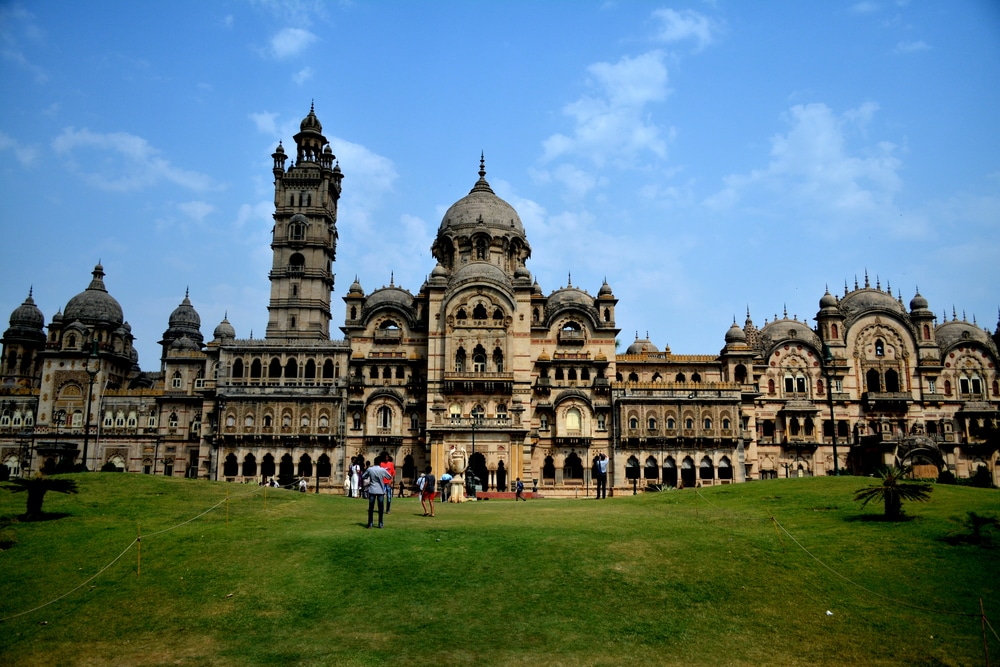
Built by the Gaekwads in 1890, the Laxmi Vilas Palace of Vadodara is one of the largest private residences in the world. Its construction was commission by Maharaja Sayajirao Gaekwad III who was a Maratha chieftain and the King of Baroda state. The building’s design is the true amalgamation of Hindu and European architecture and contains a museum, gardens, assembly halls and a zoo that has been reduced to a crocodile pit.
88. Gir National Park, Junagarh
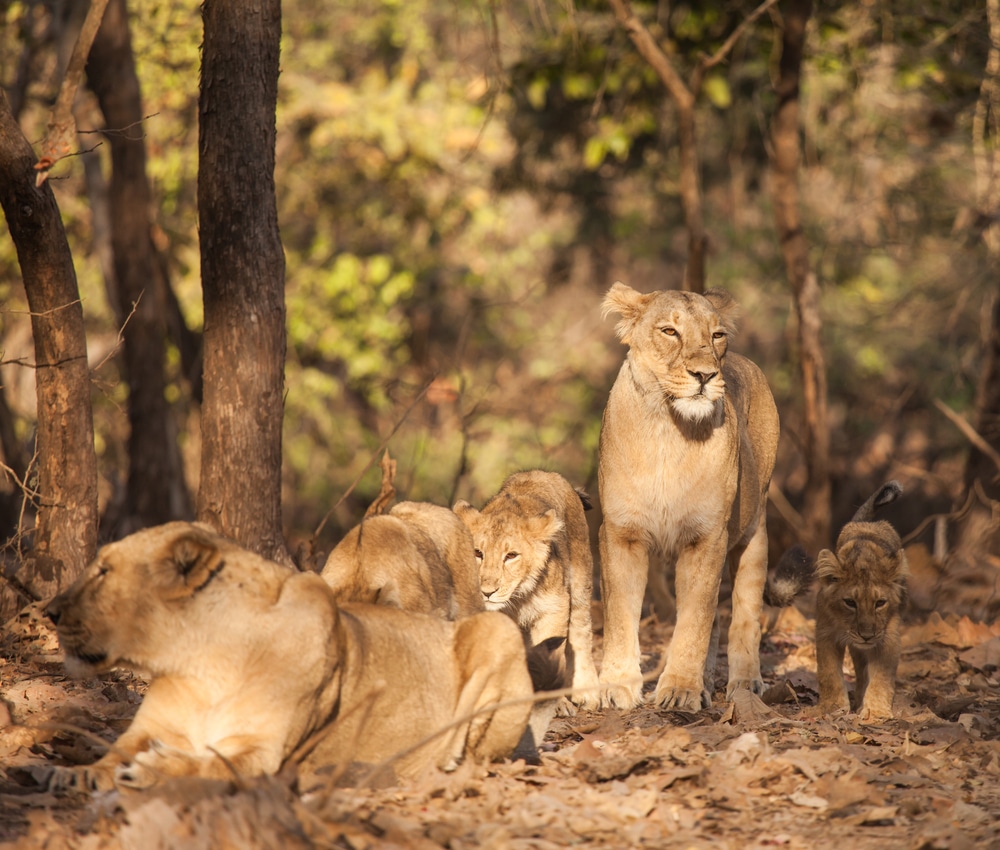
The Gir National Park is famous for its thriving population of the Asiatic Lions and is major protected wildlife reserve in the State of Gujarat. The forests were once the hunting reserves of the royal family of Junagarh who later played a pivotal role in the conservation of lions in the region. Apart from the Lions, the forests of Gir are also home to a varied species of animals, birds and reptiles.
89. Marine National Park, Gulf of Kutch
Known as the first National Marine Park in India, the Marine National Park is located in the Gulf of Kutch near Jamnagar in Gujarat. Spread across more than 150 sq kilometers, the Marine National Park is known for its abundant coral reefs that surround the 42 islands that form the protected area. Apart from the corals, one can also witness several other marine species in the crystal clear waters.
90. Tughlaqabad Fort, Delhi
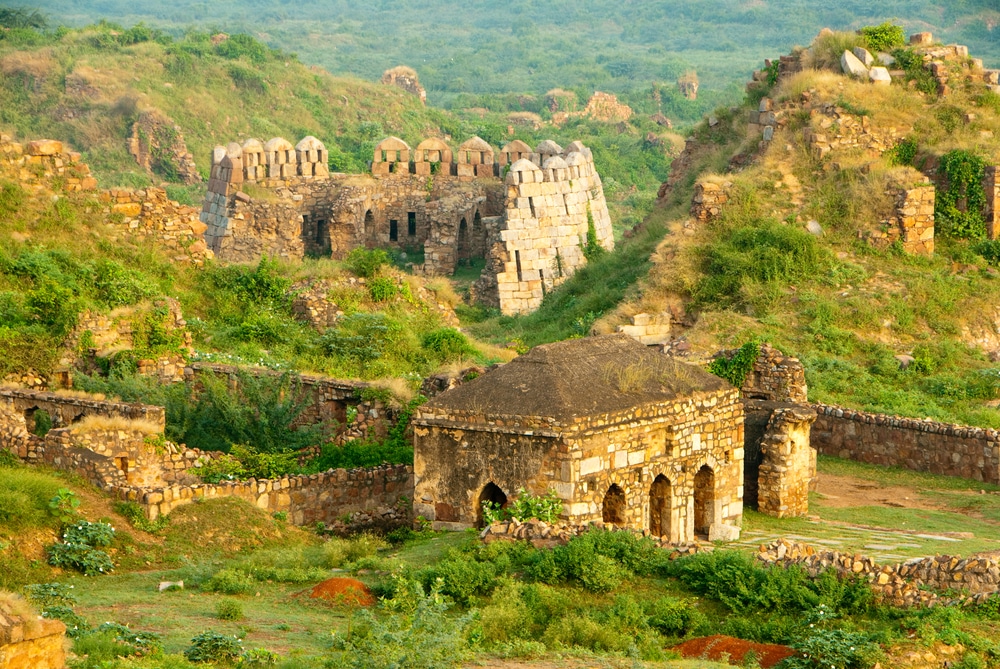
Located in the national capital city of Delhi, the Tughlaqabad Fort was built in 1321, by Ghiyas-ud-din Tughlaq who founded the Tughlaq dynasty. The construction of the fort was intended to keep the marauding Mongolian raiders at bay and was known as the 3rd historic kingdom of Delhi. The fort is also connected to the tomb of Ghiyas ud-din Tughlaq, which sits at a scenic location beside a highly ornamental causeway.
91. Pattadakal, Bagalkot
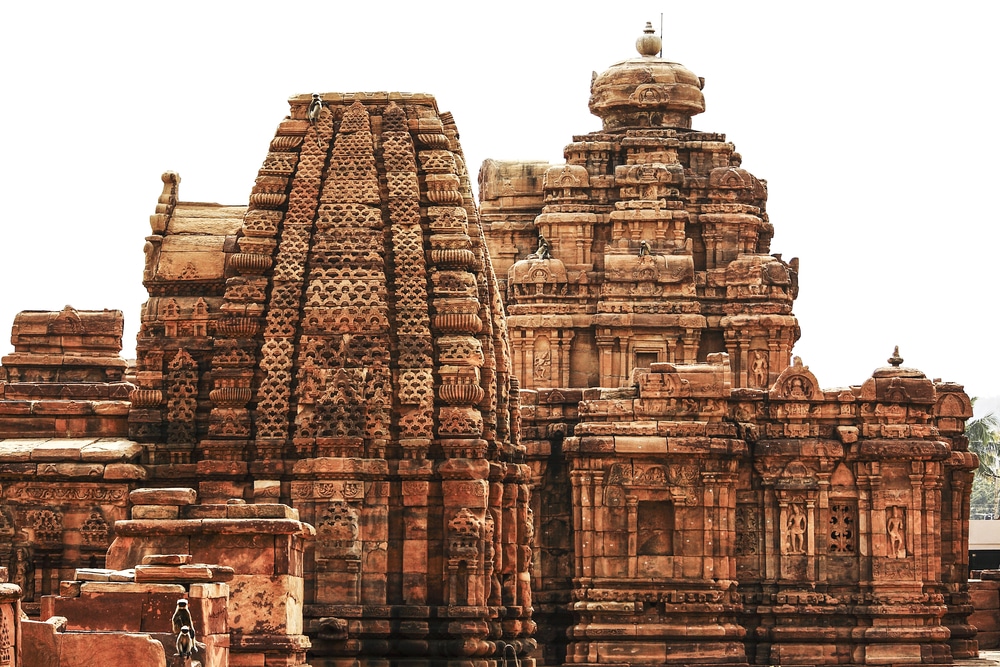
Known as the capital of the Chalukya Dynasty, the group of monuments at Pattadakal is also a UNESCO World Heritage Site. Despite of being built by the south Indian kingdoms, the architectural styles displayed here crosses various styles such as Nagara, Dravidian, Rekha and Prasada in their designs. The temples were mostly built during the 6th and the 8th centuries providing them with a vast historic value.
92. Bishnupur Temples, Bankura
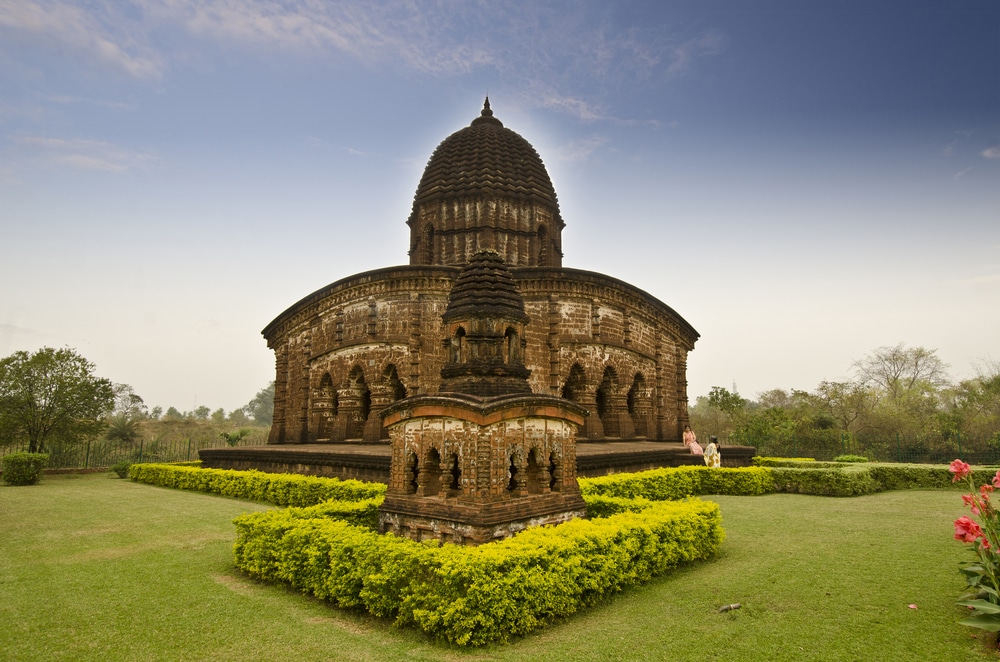
Initially a small region under the Gupta Empire, the town of Bishnupur flourished during the reign of the Malla Kings in the 18th century. The most famous example of their patronage is the several terracotta temples that are located here. The temples were built by the Malla kings who employed various local artisans and craftsmen to build a series of temples dedicated to the various Hindu deities.
93. Monuments at Mandu, Dhar
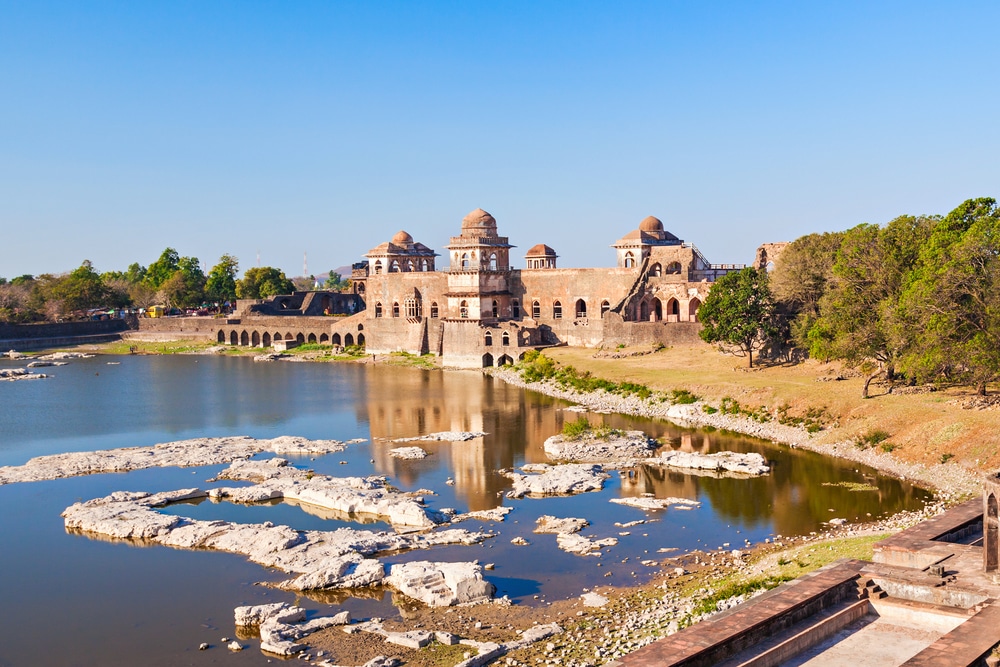
Mandu or Mandavgarh is located in the Dhar district of Madhya Pradesh. It was said to have been established in the 6th century BC and later came under the reign of the Parmara Kings. The city was fortified by Raja Bhoj in the 10th century but was later captured by the Delhi Sultanate and the Mughals. The monuments contain several Jain temples, mosques and royal palaces that provide a great view of the varied cultural influences in India.
94. Shalimar Bagh, Jammu and Kashmir
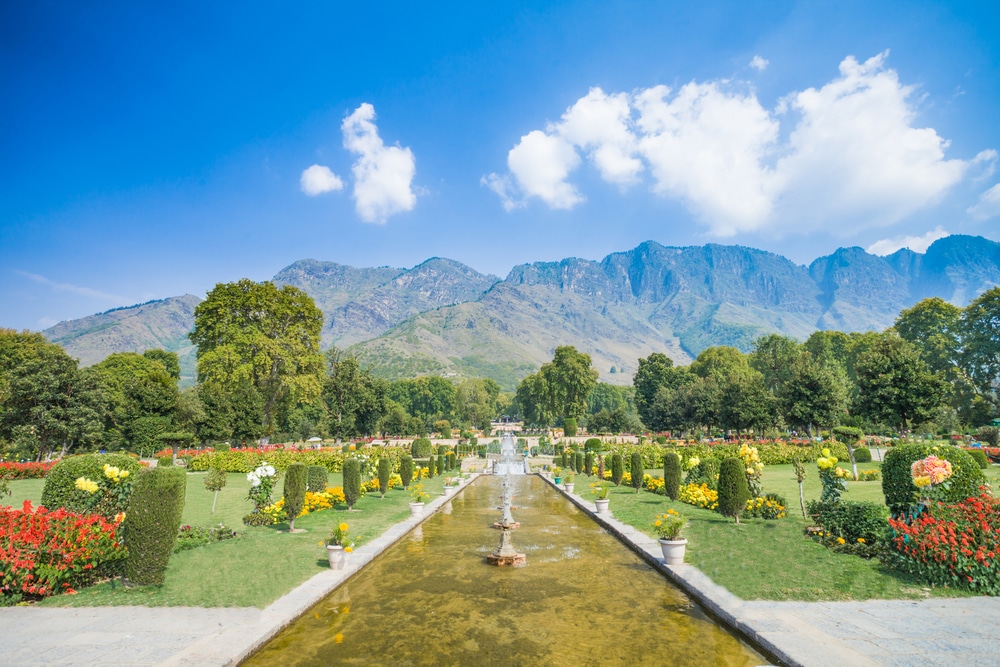
The Shalimar Bagh is the largest of all terraced gardens built by the Mughals in India and is located in Srinagar, Jammu and Kashmir. The garden is located near the picturesque Dal Lake and was built by the Mughal Emperor Jahangir during the 17th century. Nevertheless, the design of the gardens was expanded and improved by the following rulers and is now a major tourist attraction in Srinagar.
95. Lotus Temple, Delhi
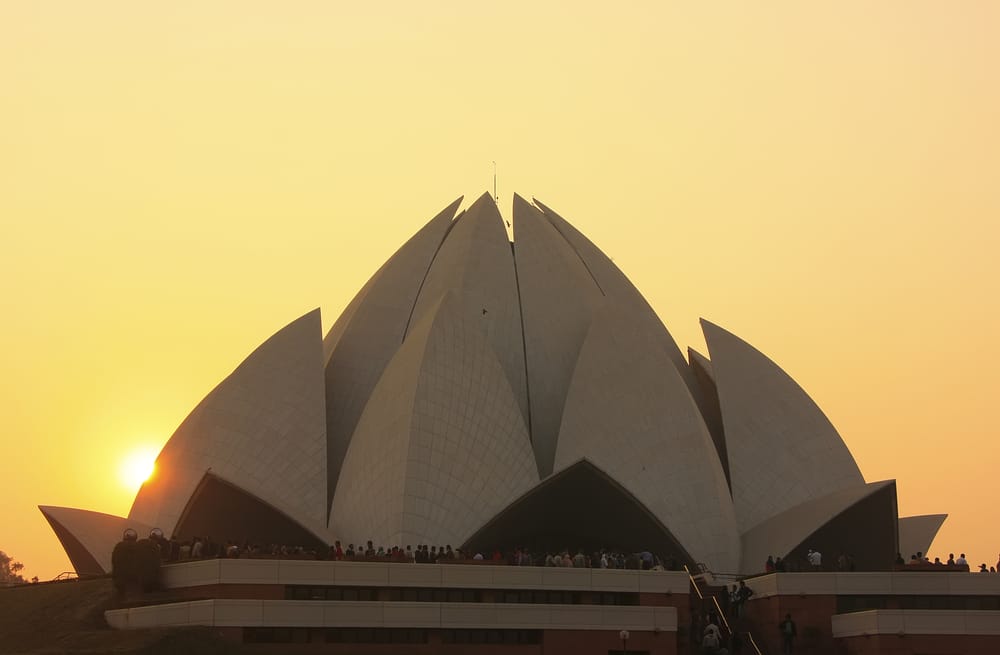
The only Baha’i place of worship in India, the Lotus temple is an exquisite work of architecture built in 1986. The design of the building resembles a budding lotus flower and is thus called as the Lotus Temple. The monument is located in the Fahapur suburb of Delhi and attracts millions of visitors each year.
96. Kakatiya Temple, Warangal
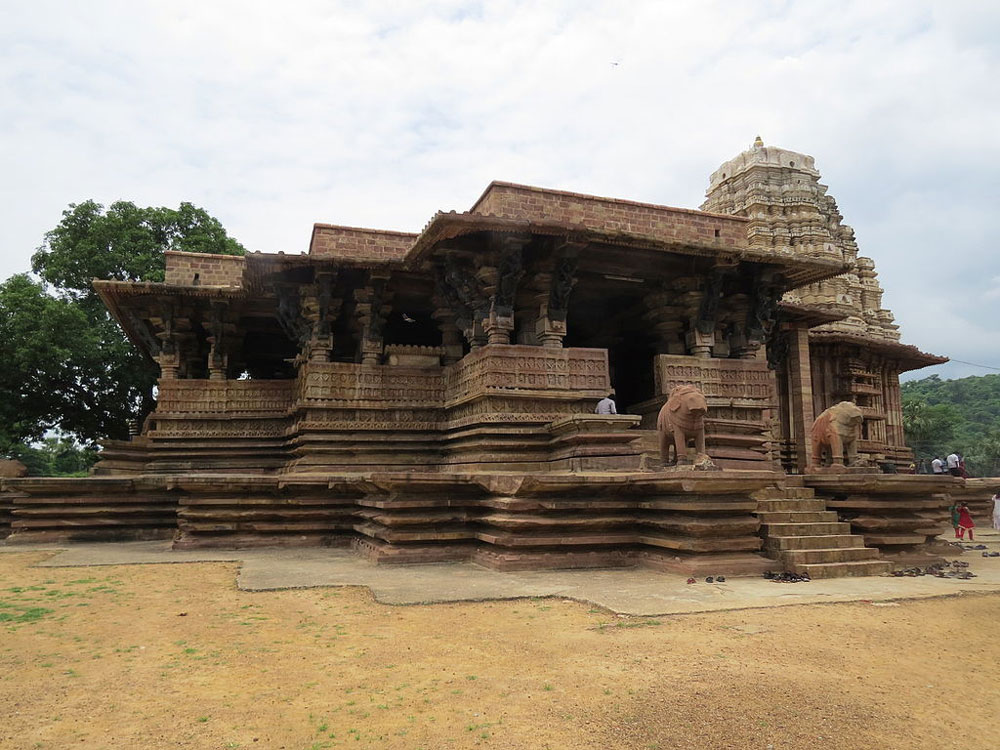
The monument is also referred to as the ‘Thousand Pillar Temple’ built by the Kakatiya Dynasty in the 12th century AD. The temple complex in Warangal houses several lingams, 3 shrines dedicated to the Hindu deities Surya, Shiva and Vishnu and is surrounded by a picturesque garden. Although it was desecrated by the Tughlaqs, it was restored by the efforts of the state government.
97. Silent Valley National Park, Palakkad
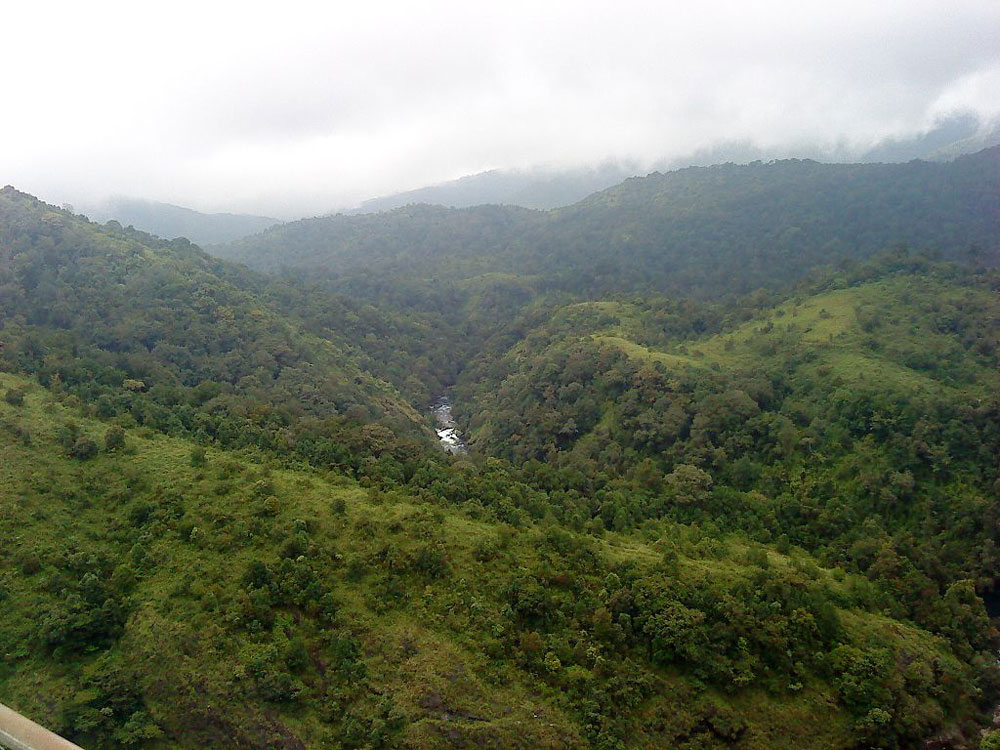
Mentioned in the Indian epic Mahabharata, the forests of Palakkad are now preserved as the Silent Valley National Park in the state of Kerala. Located in the Western Ghats, the forests are also a part of the Nilgiri Biosphere Reserve and are famous for its vast collection of flora and fauna.
98. Srirangapatna, Mandya
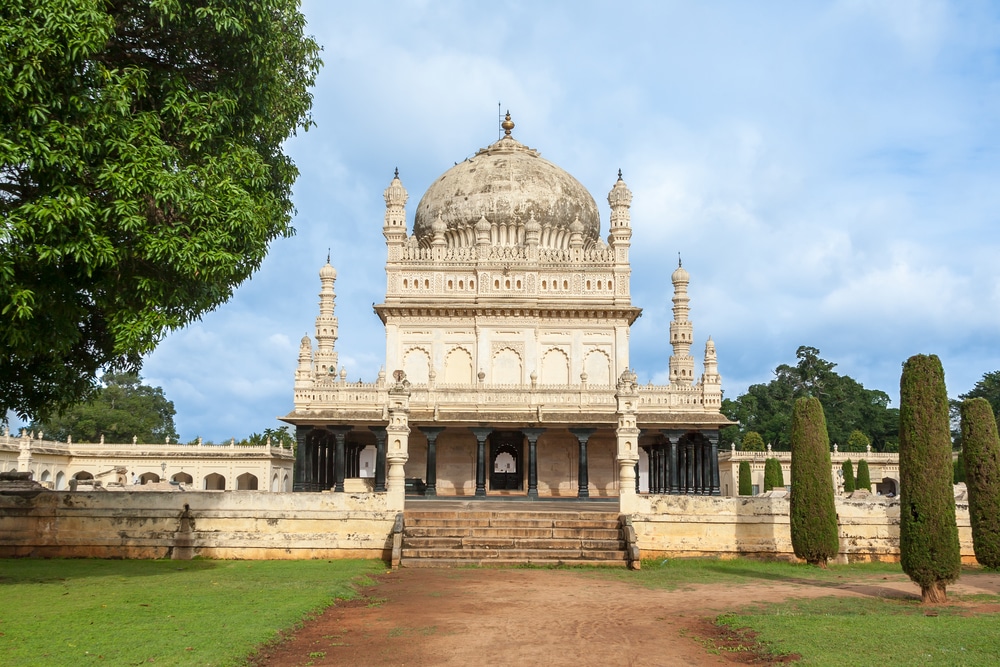
Located near the city of Mysore, Karnataka, Srirangapatna is home to the ancient Ranganathaswamy Temple, making it a major pilgrimage site for the Hindus. The building of the temple is attributed to the Ganga Dynasty but was later improved and expanded by the kings of the Hoysala and Vijaynagar empires. The city is also home to the Shivansamudra waterfalls, which are the 2nd largest in India.
99. Purana Qila, Delhi
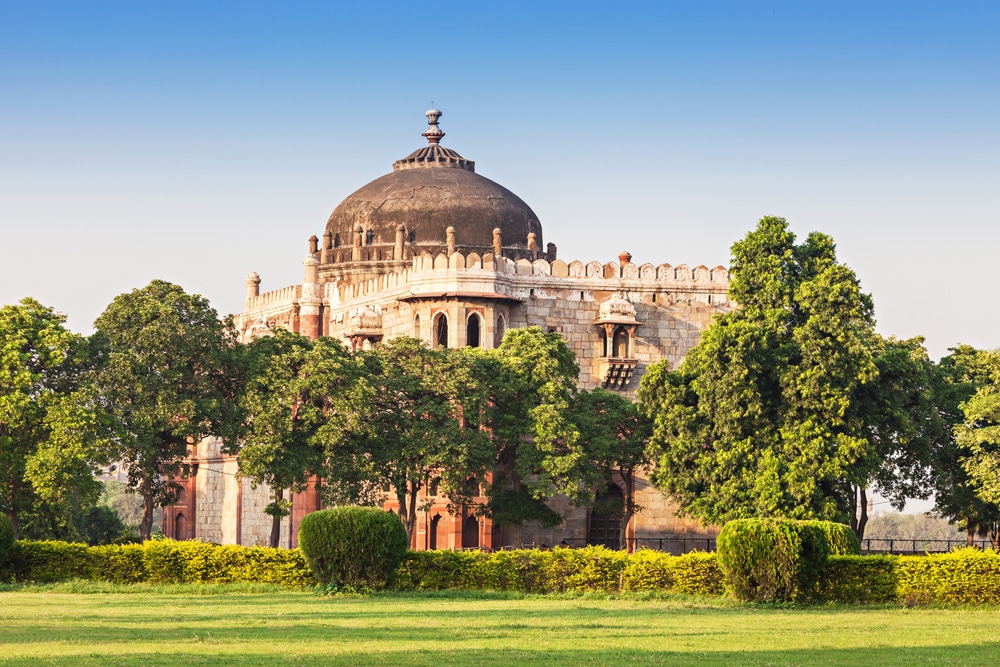
Purana Quila is the supposed site of Indraprastha, an ancient city built by the Pandavas. The site came under the control of the Mughal conqueror Humayun but was seized by Sher Shah Suri, who built and extended the fortifications to its present state and was known as the 6th historic kingdom of Delhi.
100. Chittorgarh Fort, Chittaur
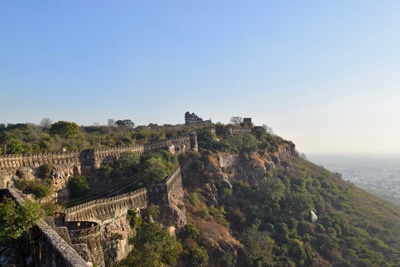
Chittorgarh is a UNESCO World Heritage Site and also has the largest fort in India. It was built by the rulers of the Mauryan dynasty and was later ruled by the Rajputs of Mewar for nearly 800 years who expanded it to its current state. The fort was later abandoned for the new city of Udaipur and was only refurbished during the British Raj in India.
These above attractions are not only some of the best places you can visit in India, but also provide a deep insight in Indian history and cultures. Make sure you visit atleast a few from this list, while on your trip to the mystical land.


I very recently had the opportunity to visit Amritsar and there I learnt of the recently opened Gobindgarh Fort. This a 300+year old fort with a lot of history to tell. Prior to this the fort has never been opened to the public so its certainly a first time. This fort is presenting history in the most unique way through which each and every person would love to learn. They currently have 2 shows depicting history of Maharaja Ranjit SIngh in the form of a 3D show with special effects and the other being a show held in the evenings using state of the art projection mapping on the very fort walls.
There are several food options offering the best of Amritsari/ Punjabi food, alongwith shopping options. A complete one stop destination for the entire family.
I am made to believe that several more activities and shows are to be added in the near future.
The Gobindgarh Fort should certainly be featuring in your must visit.
Thank you for sharing about a wonderful place to visit.
Udayagiri Caves in in Bhubaneswar. But here it is mentioned at Bhopal. Please change it, it hampers the visitor choice. Its a nice place to visit with family as well as friends.
These all are very beautiful places. Everyone should visit these places once in there life.
I recently visited Ooty it’s really a very nice place to visit with family members. It’s a romantic place too. 🙂
Must visit places in India! Thanks for sharing!!
And I’m satisfied studying your article.
The website taste is ideal, the articles are really excellent 🙂
Good task!
I found almost all famous historical places information at the same place. When we read about the history of India and the places where happen historical act, makes us proud. You have well described and cover very well. The articles about historical places of India really help to many people who want know about India History and great Monuments.
Great Job like always !!!
Very interesting… Amazing snaps…. A different way of presentation…
I am very thankful to you .
I have visited many places, which are listed in this article, all spots are unforgettable. As, the content is also very informative.
What is about Victoria memorial hall ?
Great guide for first time visitor in India. As an Indian, I totally agree on this. It is a wonderful country for travelers because it has a combination of all adventurous, historical and religious places.
The beautiful places above are Shalimar Bagh, Jammu and Kashmir, the most beautiful place in India. But I never visited there. I am planning a trip for next month. Thanks
You have missed BIJAPUR, Karnataka. It’s just wonderful,a whole city that reeks with history like no other place in India i know.
Udayagiri Caves in bhubaneswar not Bhopal.please change it.
All these places are very beautiful and interesting. But I think you may include Ram Tirath Temple in Amritsar. This is related to Valmiki and Luv & Kush. But nobody has written any post about this holy temple.
Its not good to say main places in India as mostly are missed.
Only some places of North India are shown.
It’s very nice all destinations because I like a Buddhist temples Monastery.
Because it’s first Archeological Articlave in Indian history and it is truly graceful, beautiful and inspirational places moments rock cut And I wish when I will go there…
You did great job but you missed some places like Golconda Fort.
Hey,
What about Victoria Memorial Hall, Kolkata?
Darjeeling?
Jaldapara National Park, West Bengal?
Mandarmani Beach and Digha, West Bengal?
National Library, Kolkata?
Hot Springs of Bakreshwar, West Bengal?
Dakshineshwar Temple, Kolkata?
Birla Planetarium, Kolkata?
Shibpur Botanical Gardens, Kolkata?
Ayodhya Hills of Puruliya, West Bengal?
ISCON Temple, West Bengal?
Sagar Island, West Bengal?
Shahid Minar, Kolkata?
Kumartuli, Kolkata?
Jhargram Palace, West Bengal
Science City, Kolkata
Indian Museum, Kolkata
Jorashanko Thakurbari, Kolkata
Birla Industrial and Technological Museum, Kolkata
Eco Park, Kolkata
Marble Palace, Kolkata
Kalighat Kali Temple, Kolkata
Birla Temple, Kolkata
Henry’s Island of Bakkhali, West Bengal
Bodhi Tree Monastery of Art, Kolkata
Bardhaman Maharaja Palace, Kolkata
Eliot Park, Kolkata
Energy Education Park, Kolkata
Nakhoda Masjid, Kolkata
Cima Art Gallery, Kolkata
Shantiniketan, West Bengal
Sandakphu and Tiger Hill, Darjeeling
Kanchenjungha, Darjeeling
Chapramari Wildlife Sanctuary, West Bengal
Hazarduari Palace Museum, Murshidabad, West Bengal
Katra Mosque, Murshidabad, West Bengal
Kalimpong, West Bengal
Kurseong, West Bengal
Mother House, Kolkata
Shobhabajar Palace, Kolkata
I feel like Kolkata and West Bengal, in general, was barely touched.
A lot of other delightful places in east India are missing from this list, and a lot from the North East too like the famous Kamakhya Temple of Guwahati, Assam. This is so unfortunate that the east is never really advocated for, to foreigners who visit India. As such they only visit North India and South India, but almost never visit the east or the northeast, and leave not knowing what they have missed.
And besides the east, lots of other places, important places from all over India are missing too, like the following:-
Qutub Minar, Delhi
Somnath Temple, Gujarat
Dal Lake, Srinagar
Khandagiri, Bhubaneshwar
Vijay Stambh, Rajasthan
Konarak Temple, Orissa
Vivekananda Rock, Kanyakumari
Almost all of Sikkim
Mount Abu, Rajasthan
Cherapunji and Mawsynram, Meghalaya
Spiti, Himachal Pradesh
Gulmarg and Sonmarg, Jammu and Kashmir
Ranthambore forest, Madhya Pradesh
Juhu Beach, Mumbai
Kashi Viswanath Temple, Uttar Pradesh
various churches of Goa
Rann of Kutch, Gujarat
Nilgiri forest, Western Ghats
Mussoorie, Uttarakhand
Bodh Gaya is just peaceful and amazing. You can feel the origin of Buddhism here. It should be in your list of must visit places in India.
Bihar is most historical compared to other states in India.
Visit Bihar which is a holy place for major religions- Hinduism, Christianity, Buddhism, Jainism and Sikhism.
Some great kings- Ashoka, Mauryan
Educational History – Nalanda University
Some great national parks and what not!
I am from Mexico and this articles is really excellent. India is a beautiful country.
Nice Article Sir thanks For Sharing Such A great Info
Wow very nice article, I wanted to tell you that could you please eliminate some and make it short like top 20 places that would be more interesting to read, anyway thanks for sharing great share!
Hey nice list but I think this is too much like if u just choose a limited sort but interesting it would be easier for people like us to think and plan for the next trip anyway thanks for the amazing article and the great share keep posting.
All the places in India so beautiful and must to visit. Ancient monuments and temples were more attractable. South Indian temples and tourist spots most warming places to everyone.
India one of the best highest shiva temple Tiruvannamalai main rajakopuram hight 217 feet plz add this place it’s very very amezing and use full message issu for this temple..and thank you ..
Thank you so much for sharing. I have found it extremely helpful, I would like to visit those places.
Very interesting, Please share more.